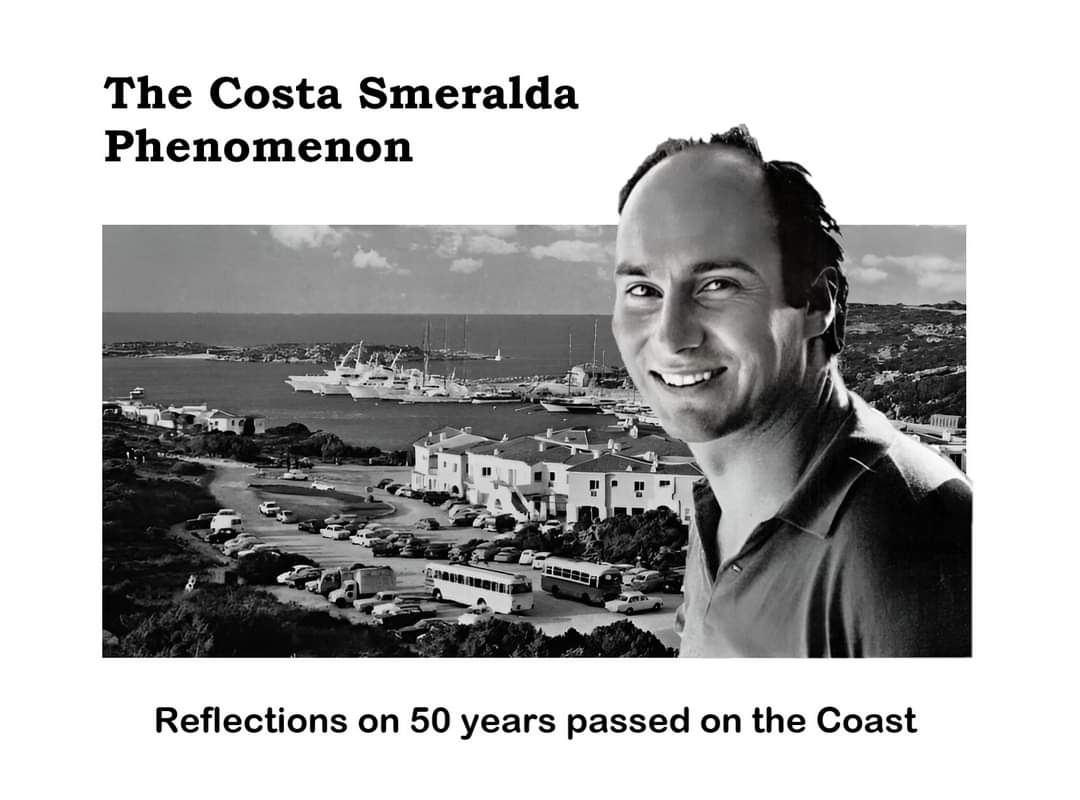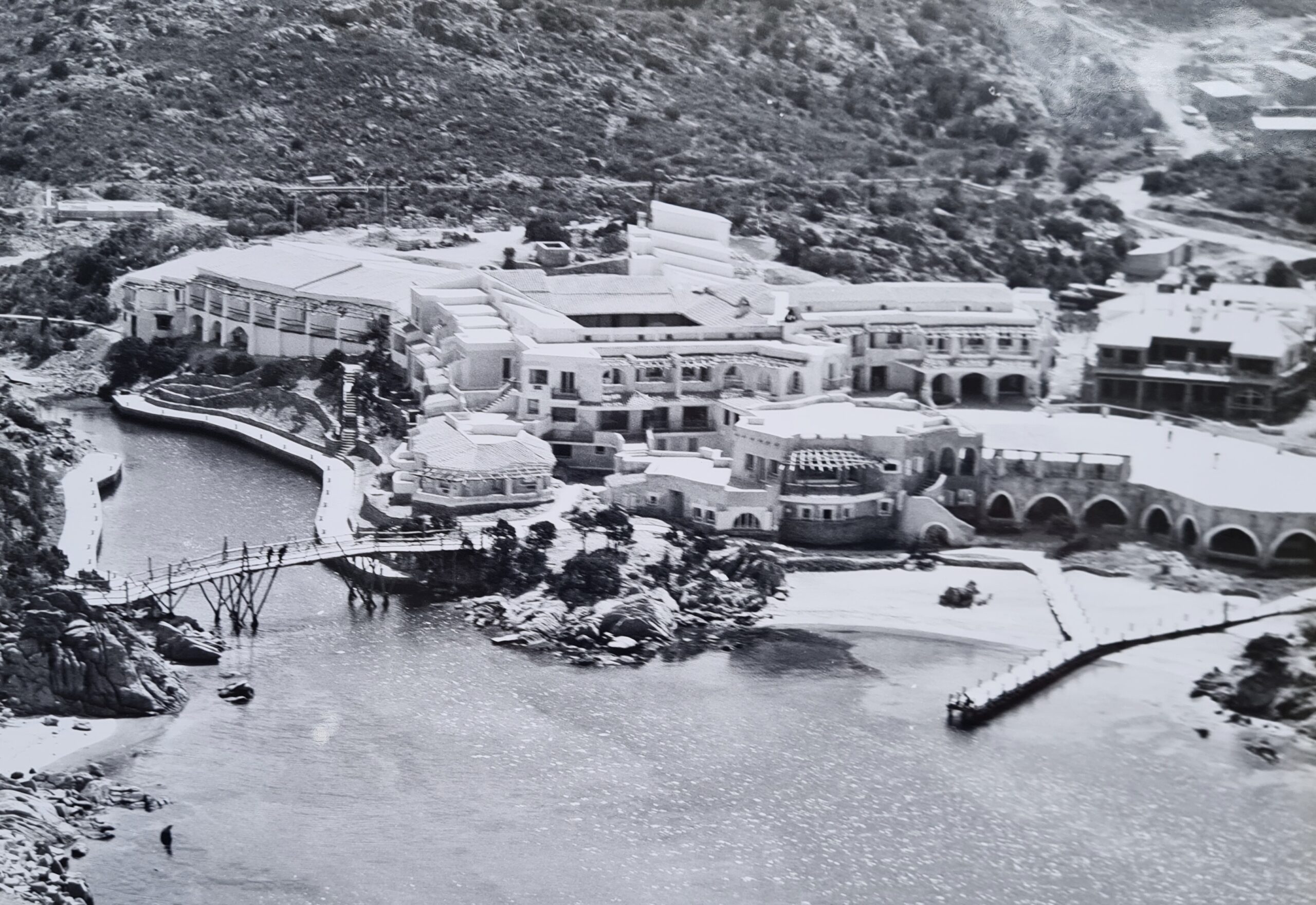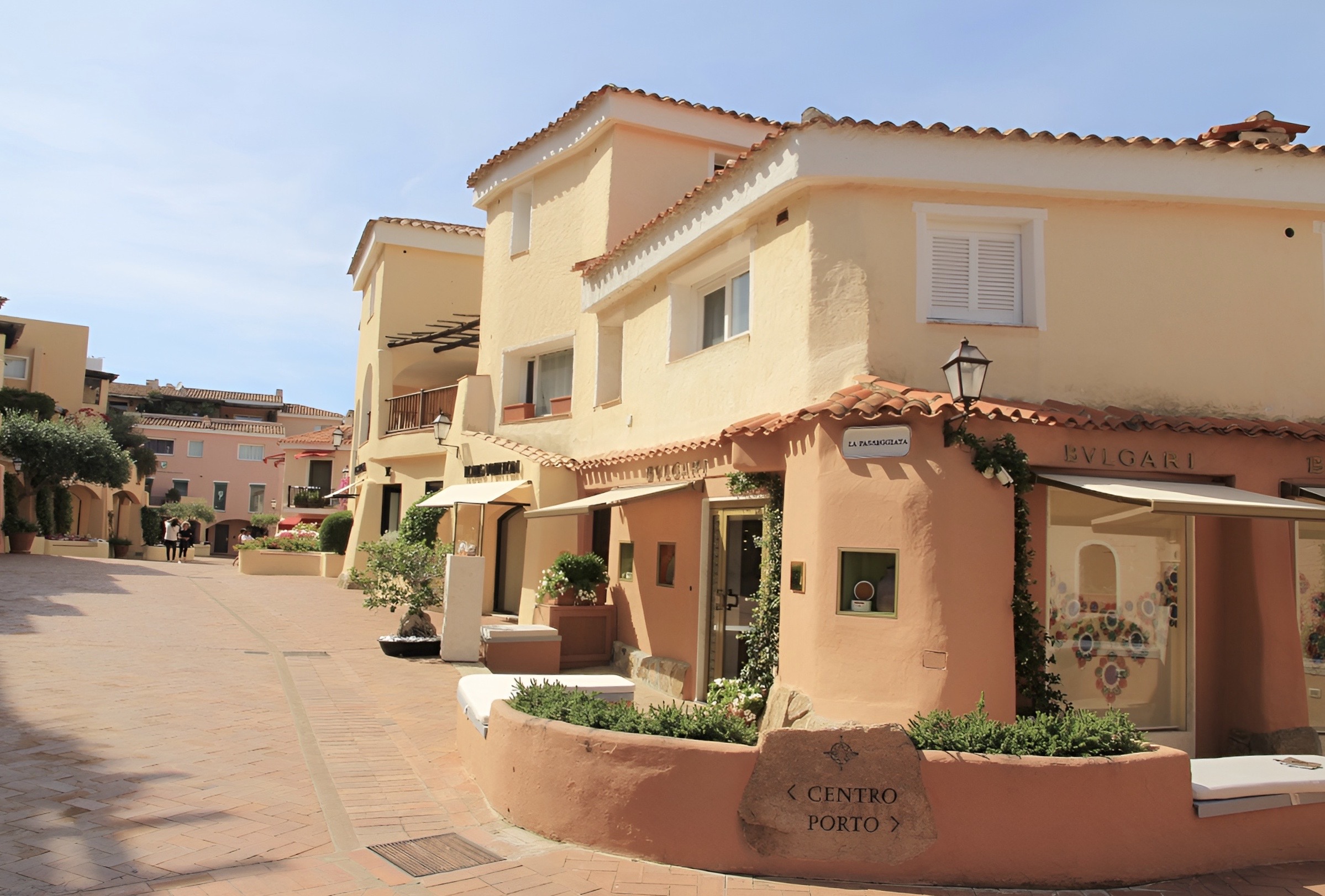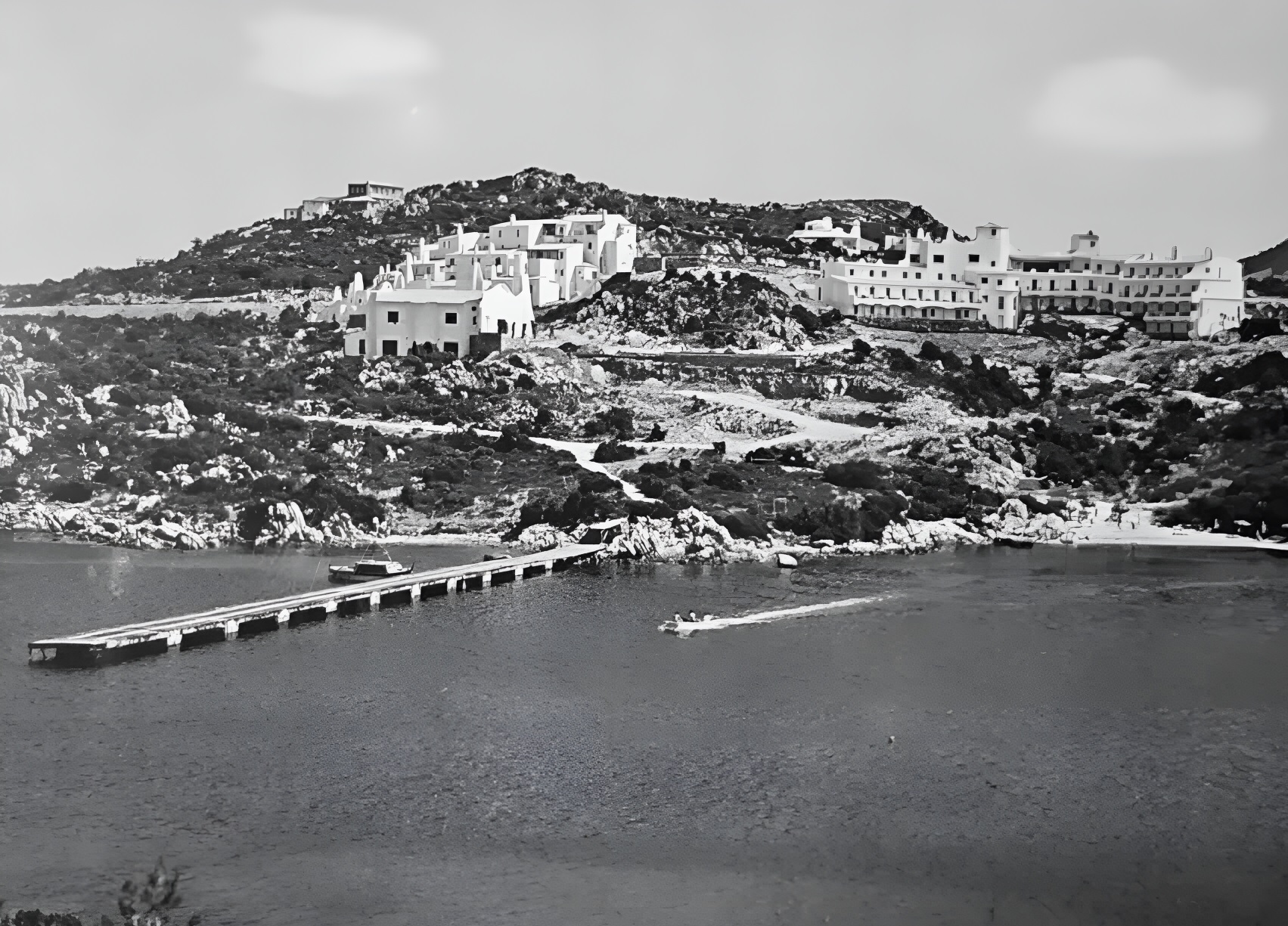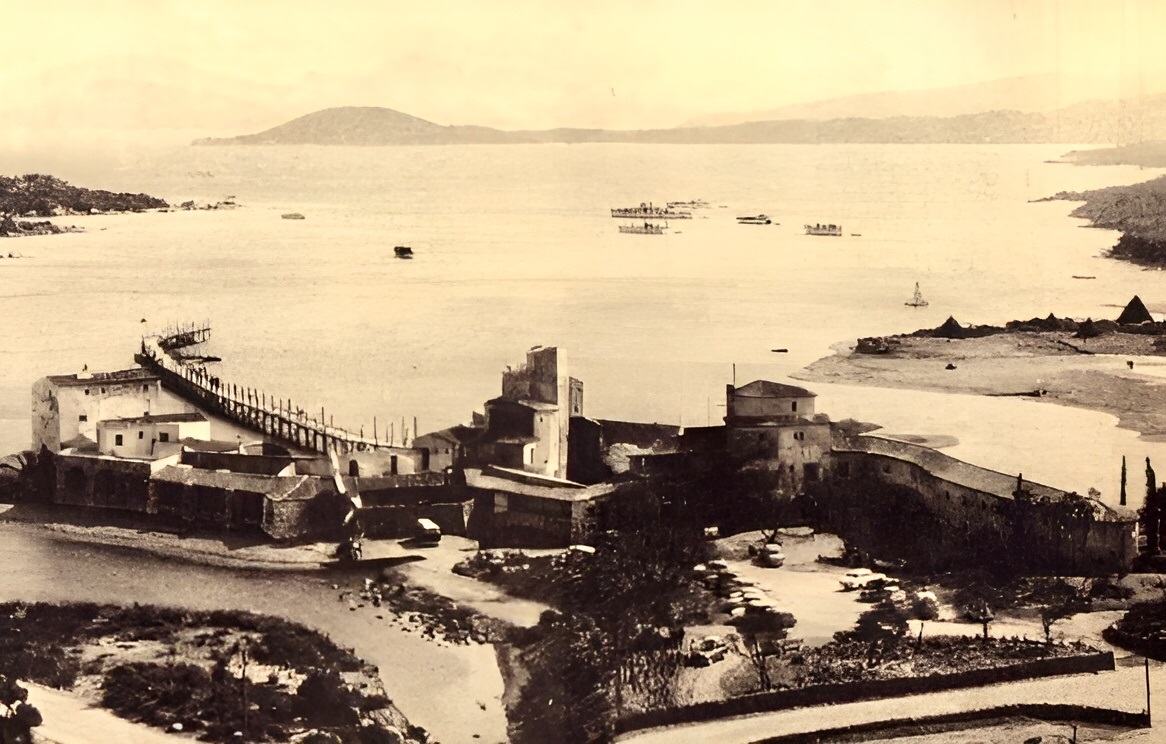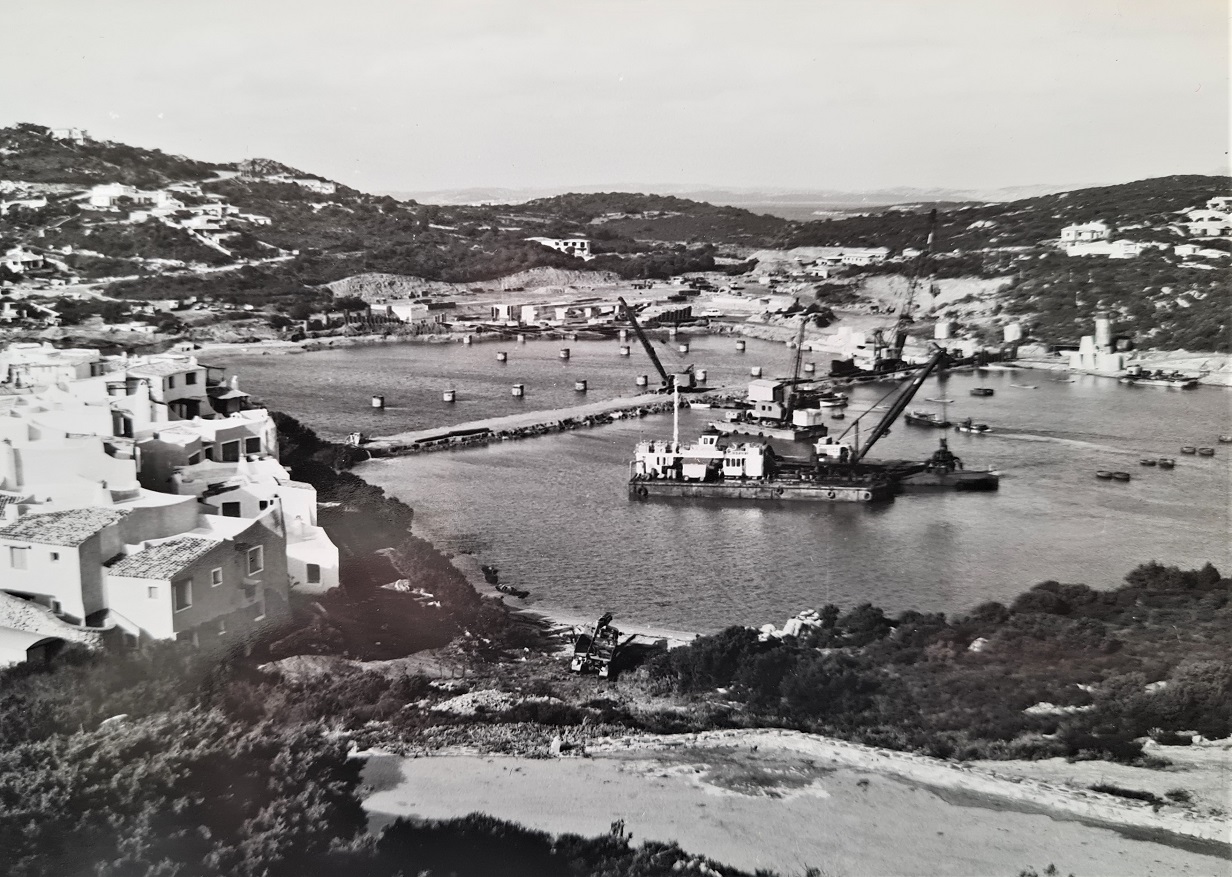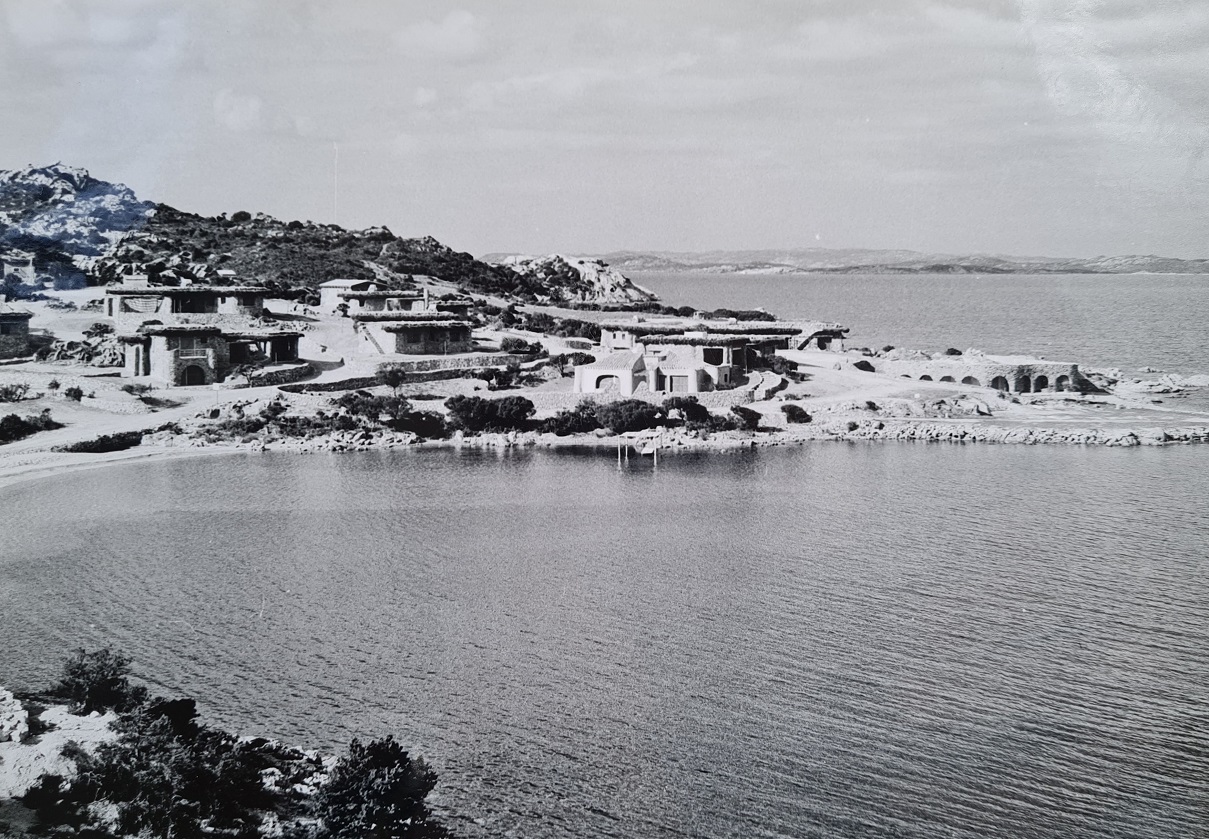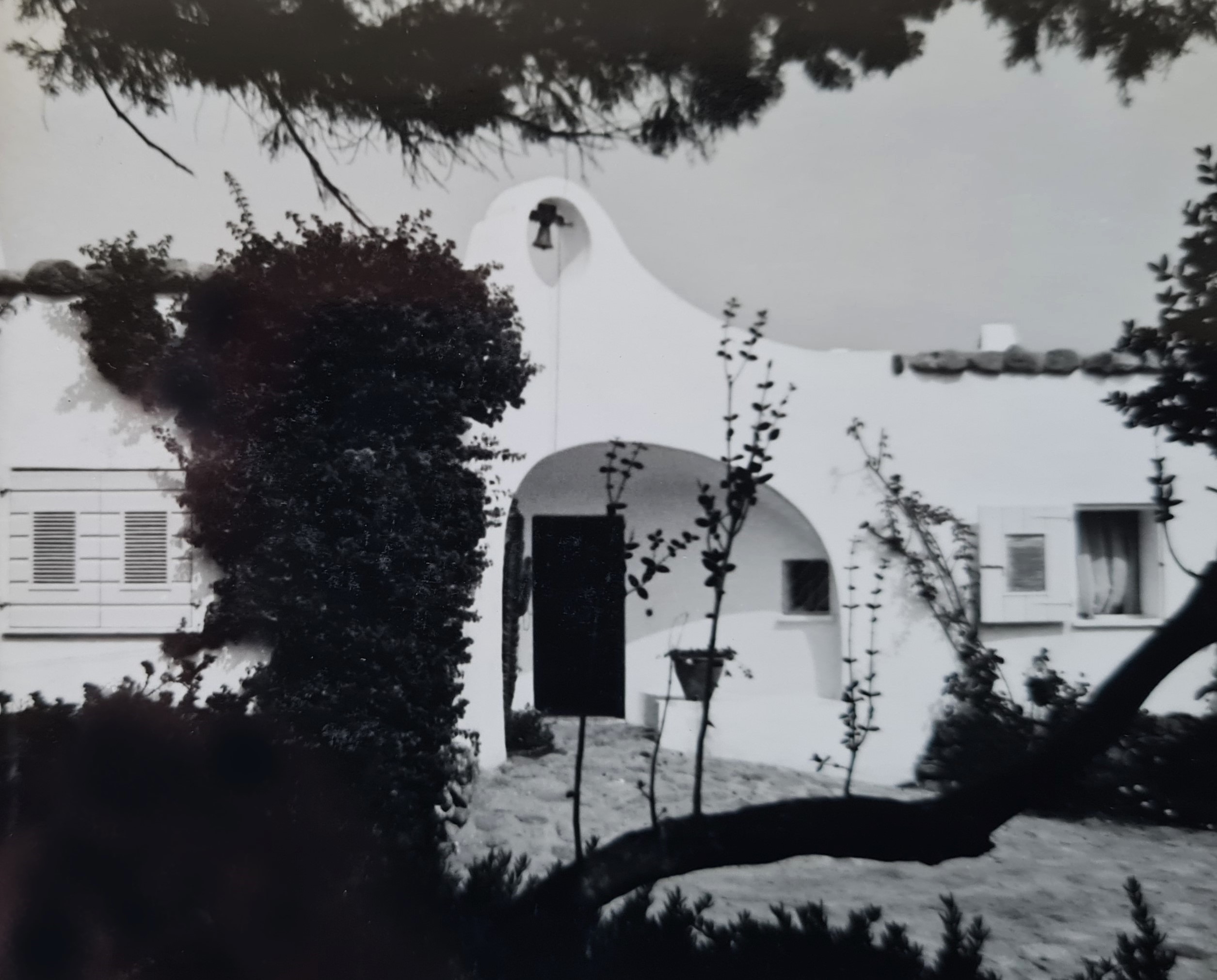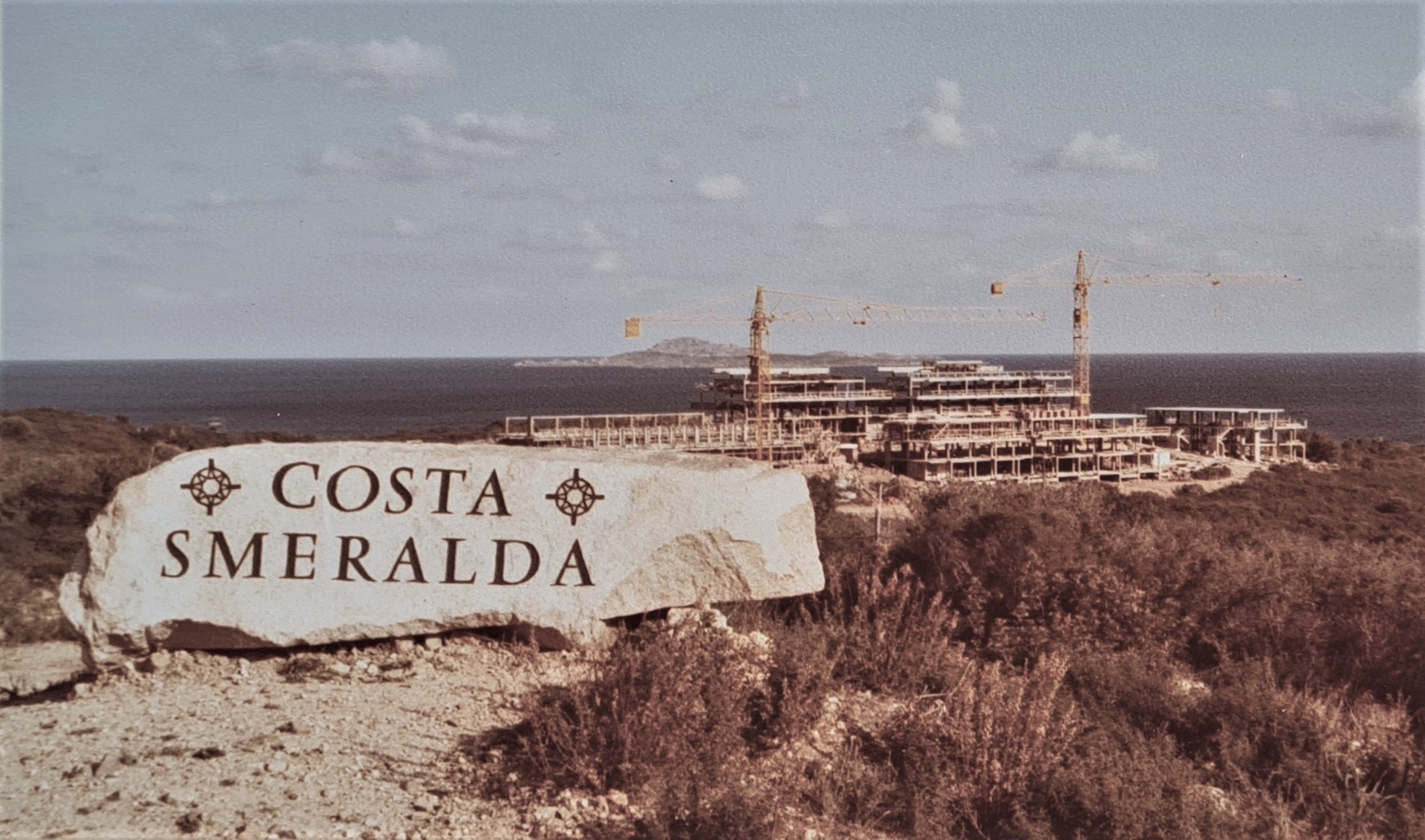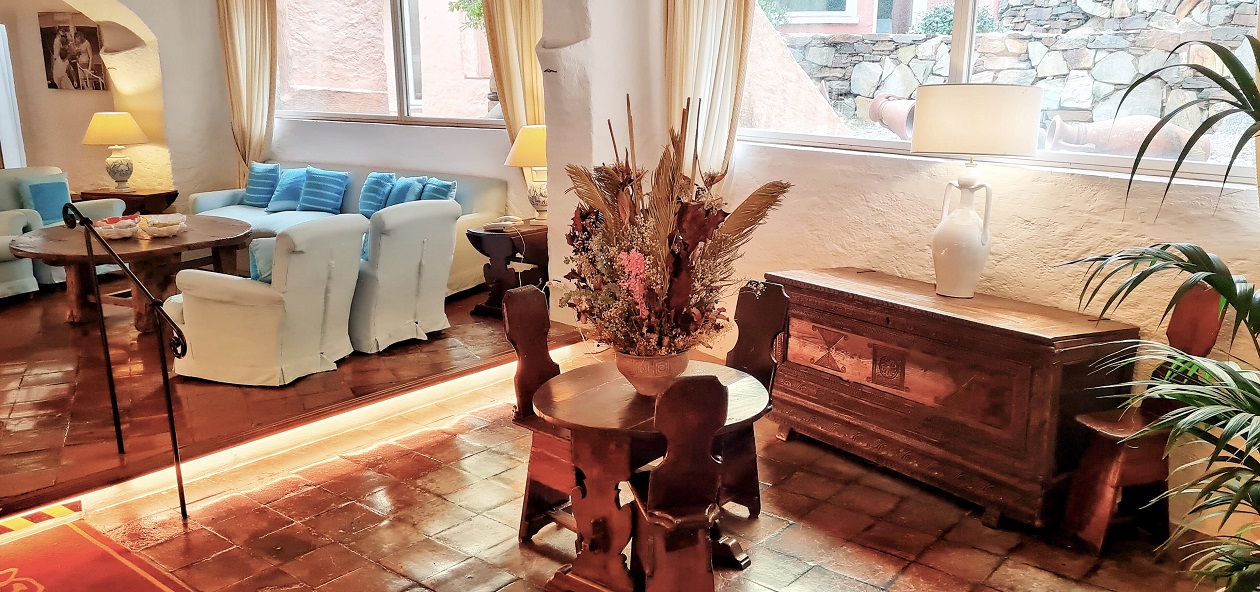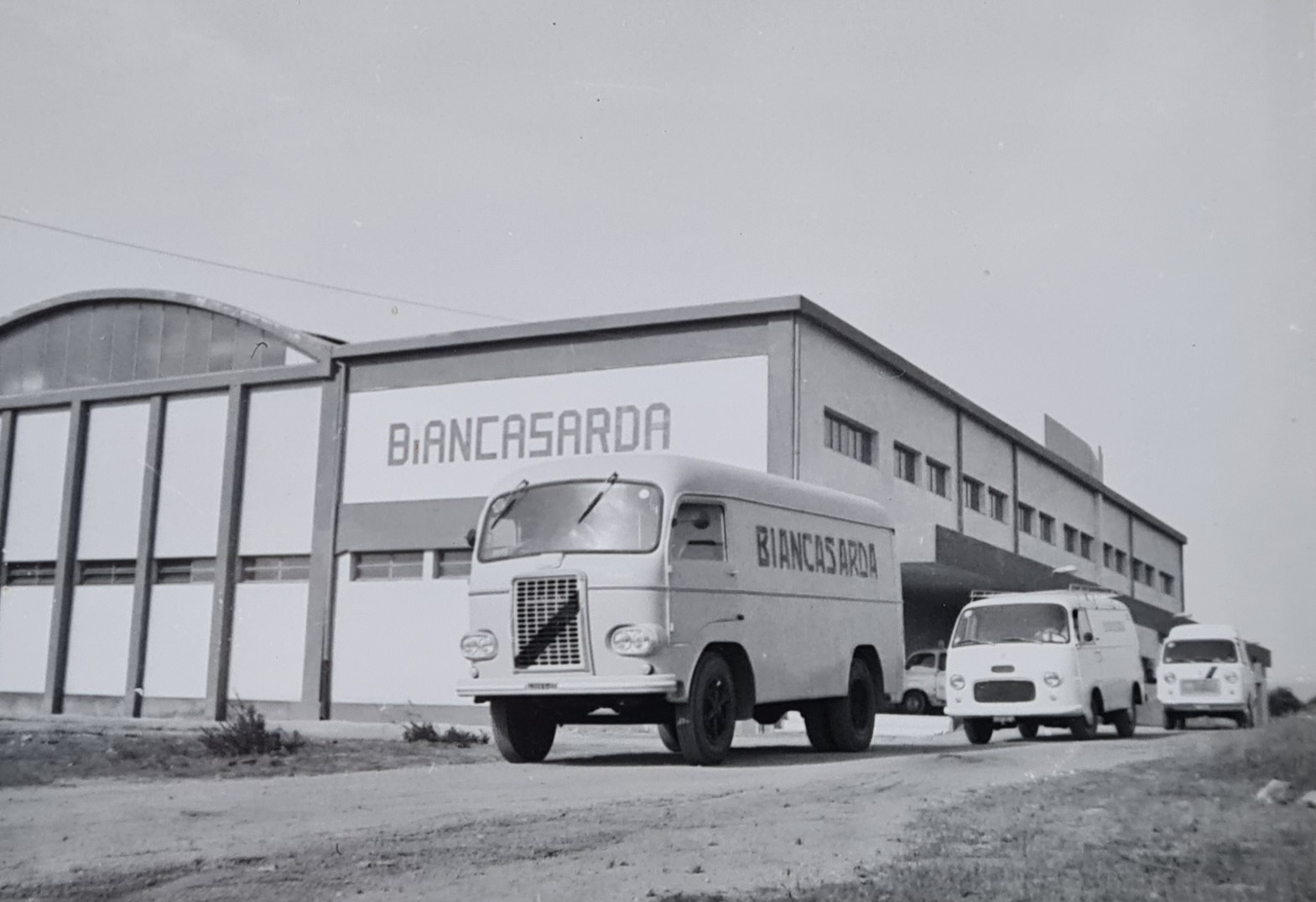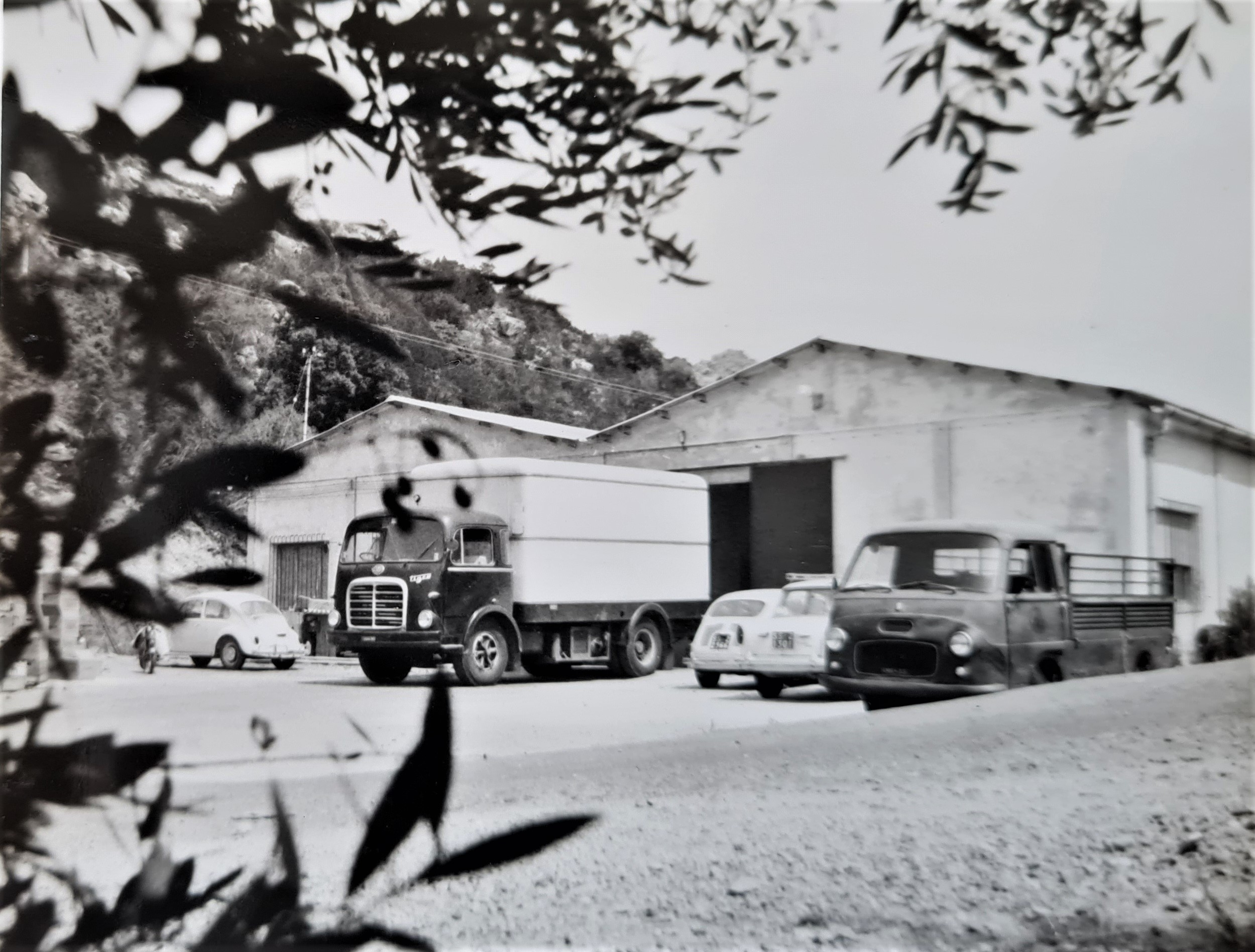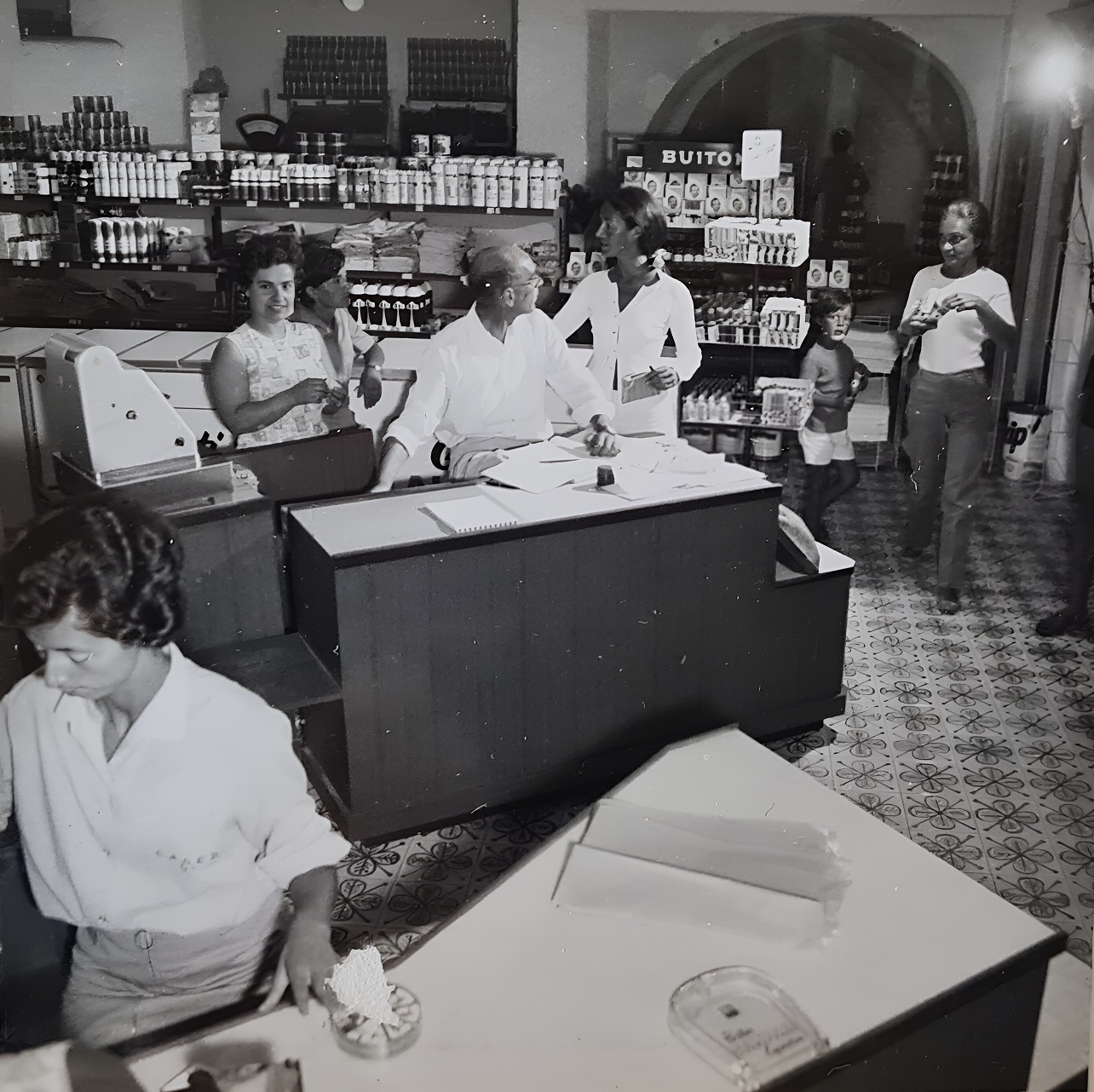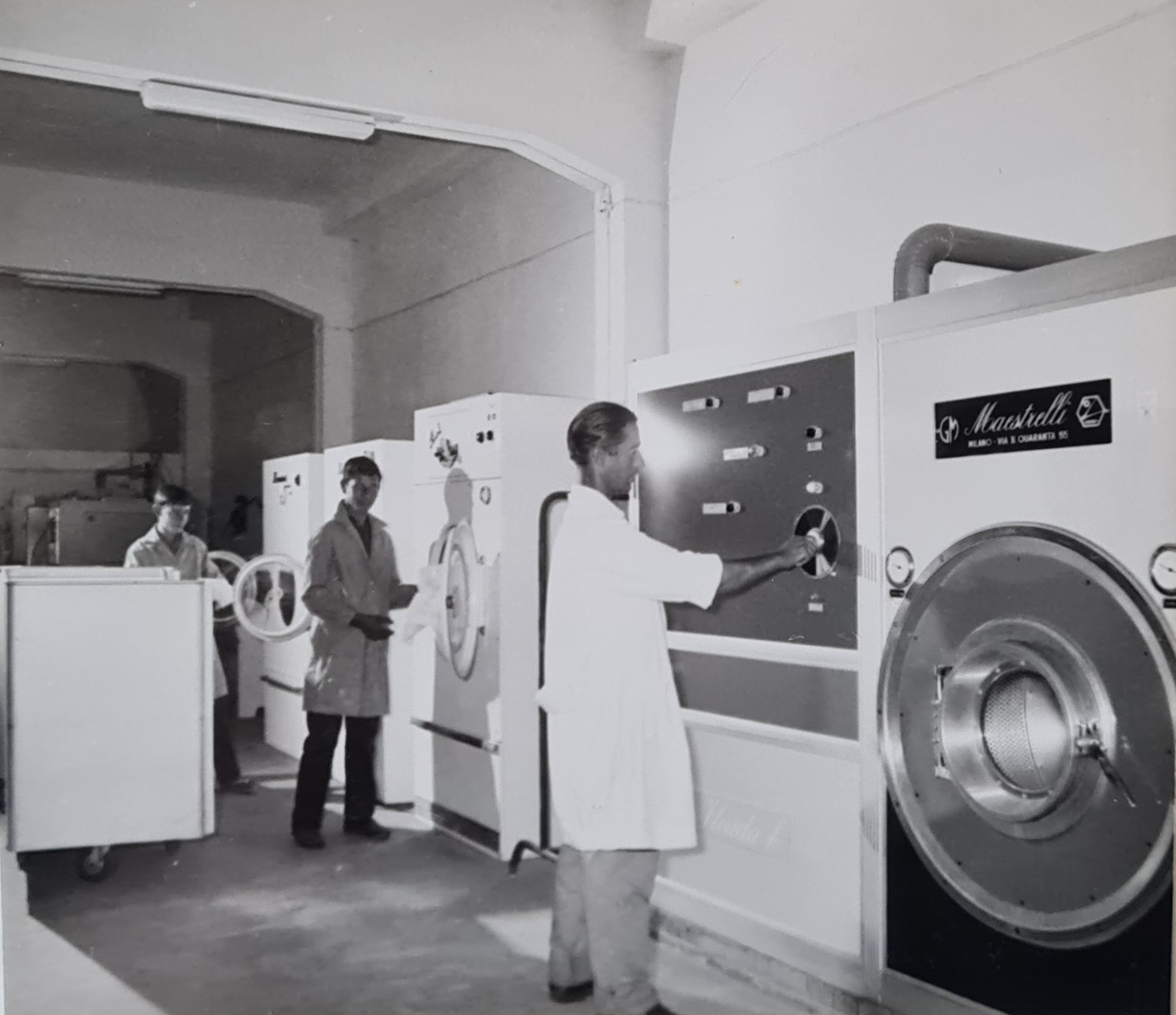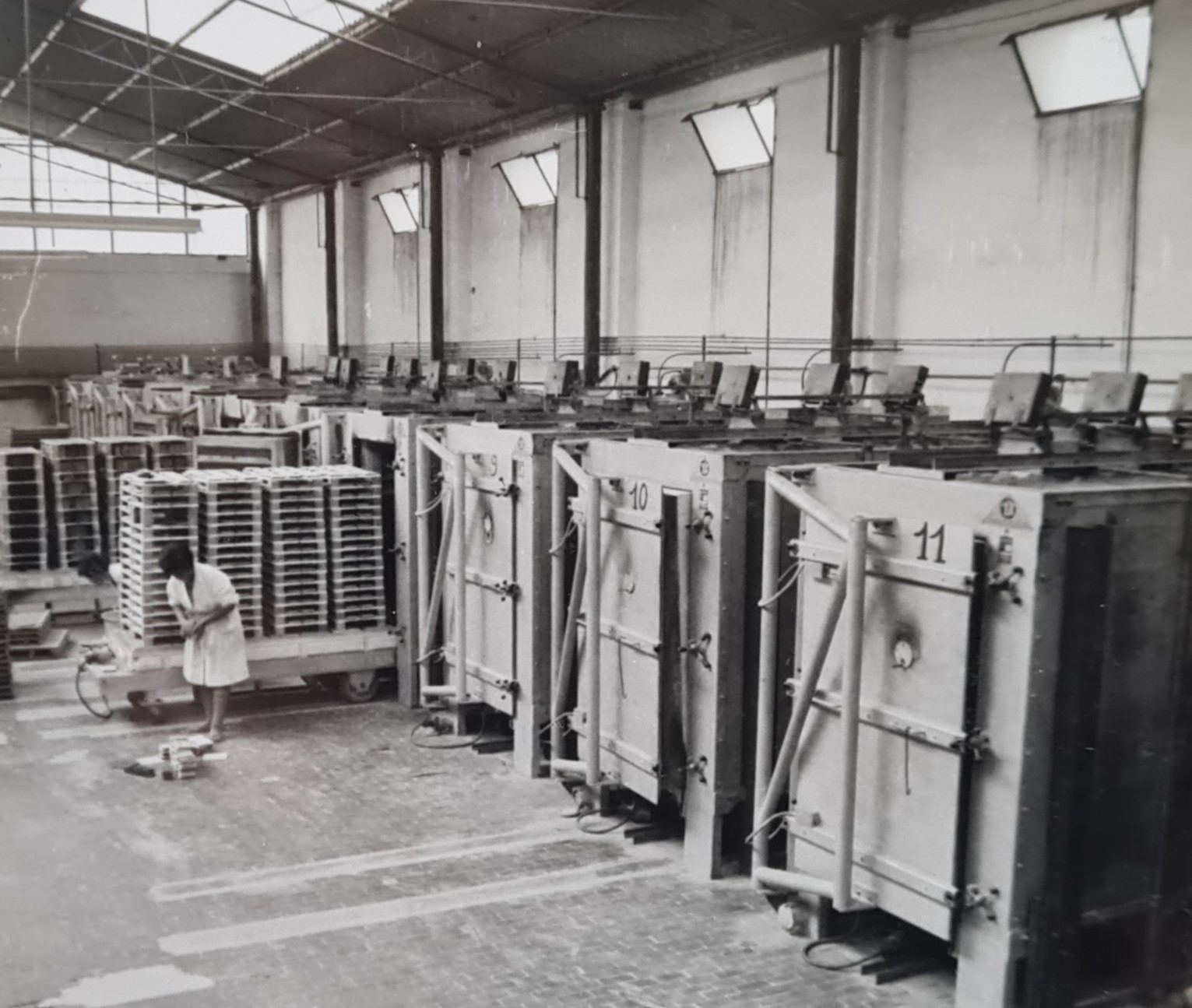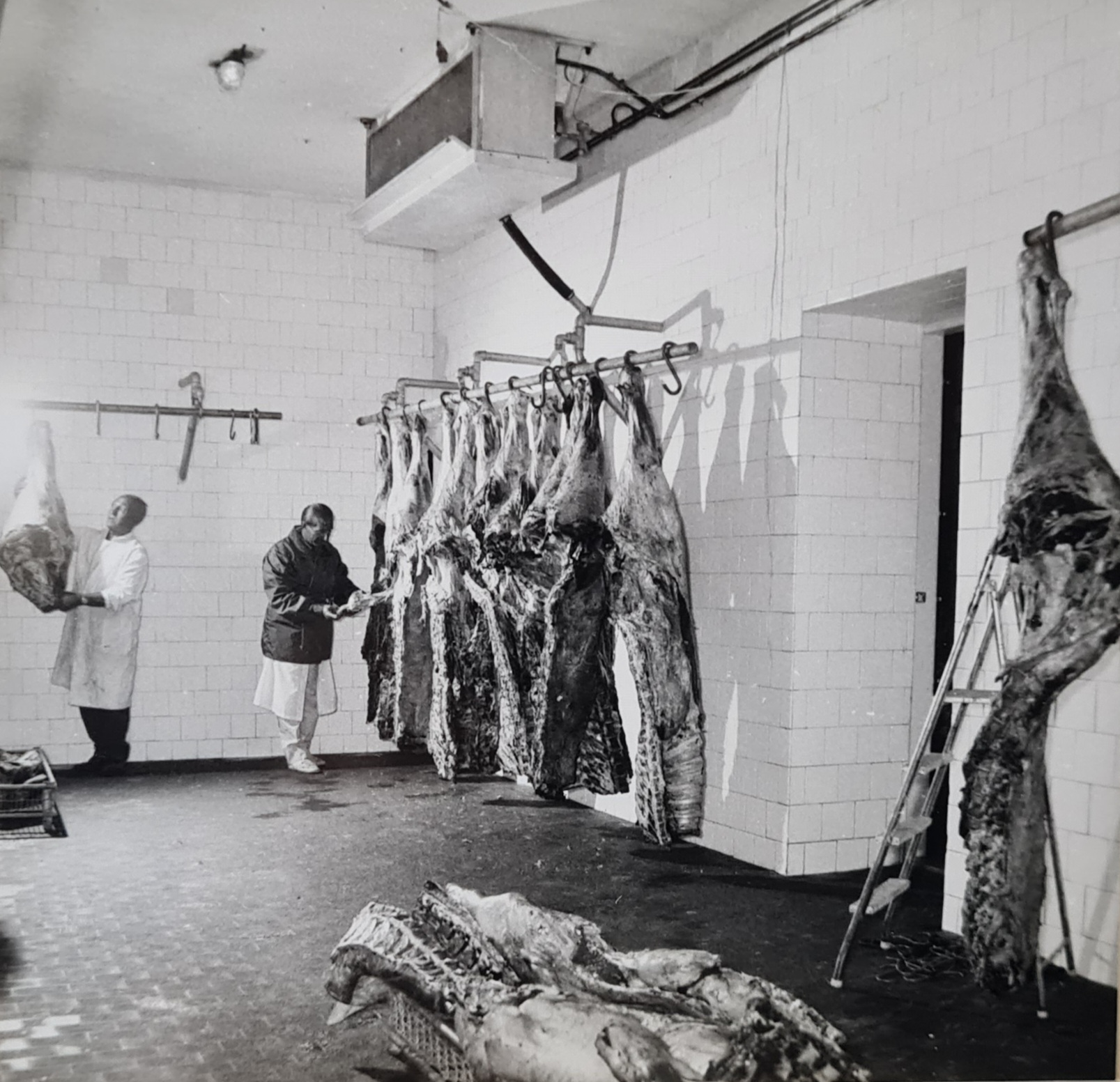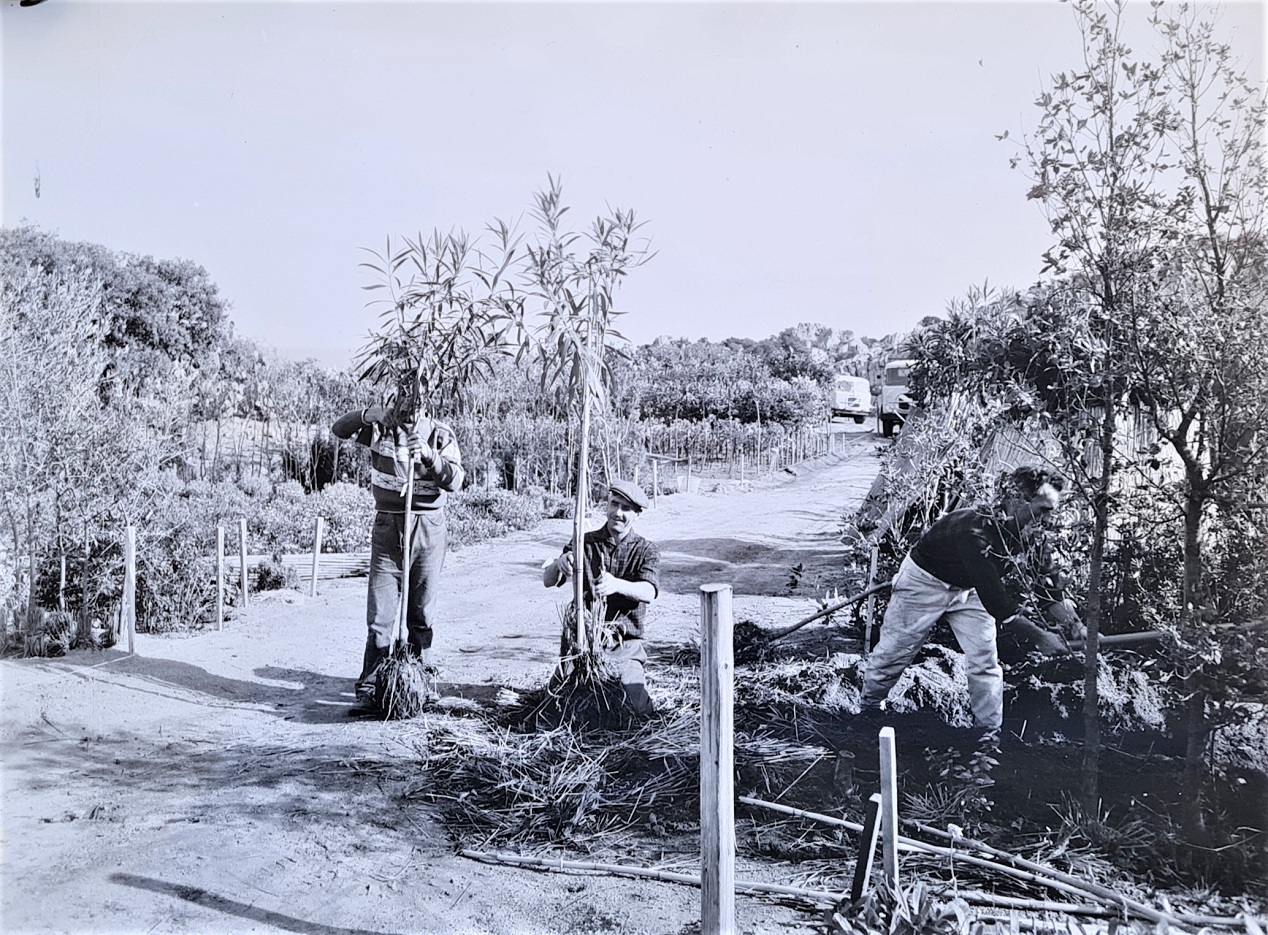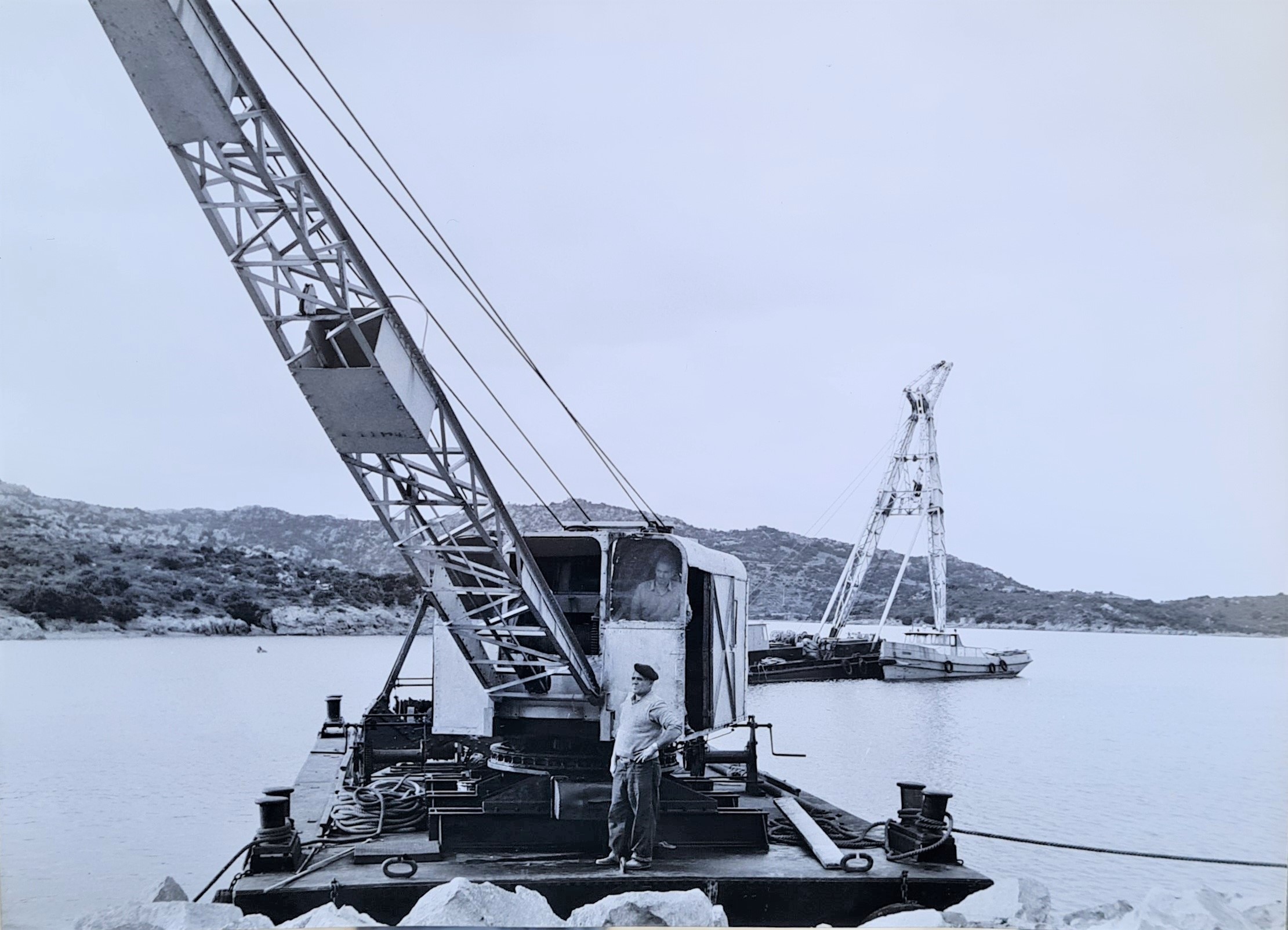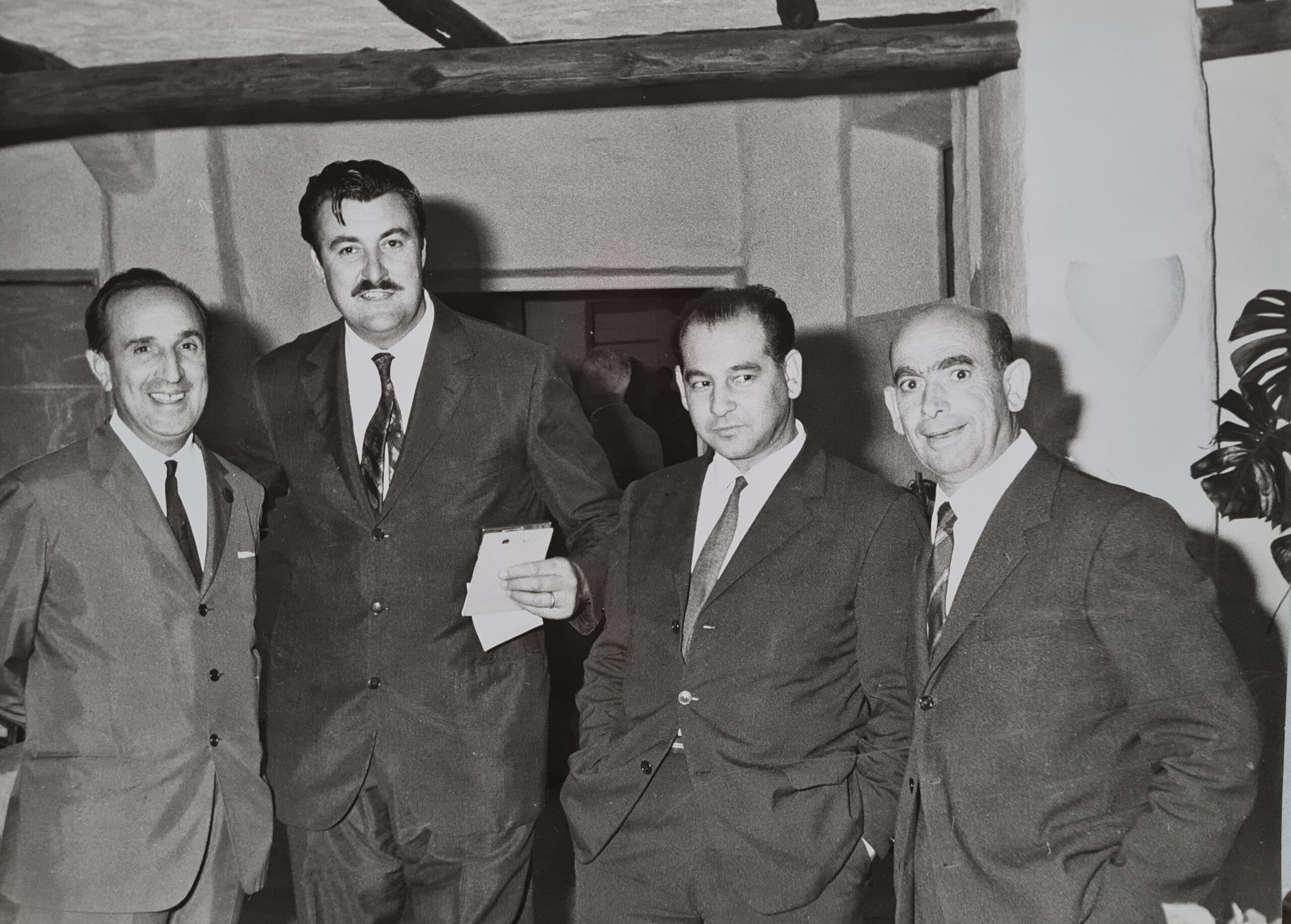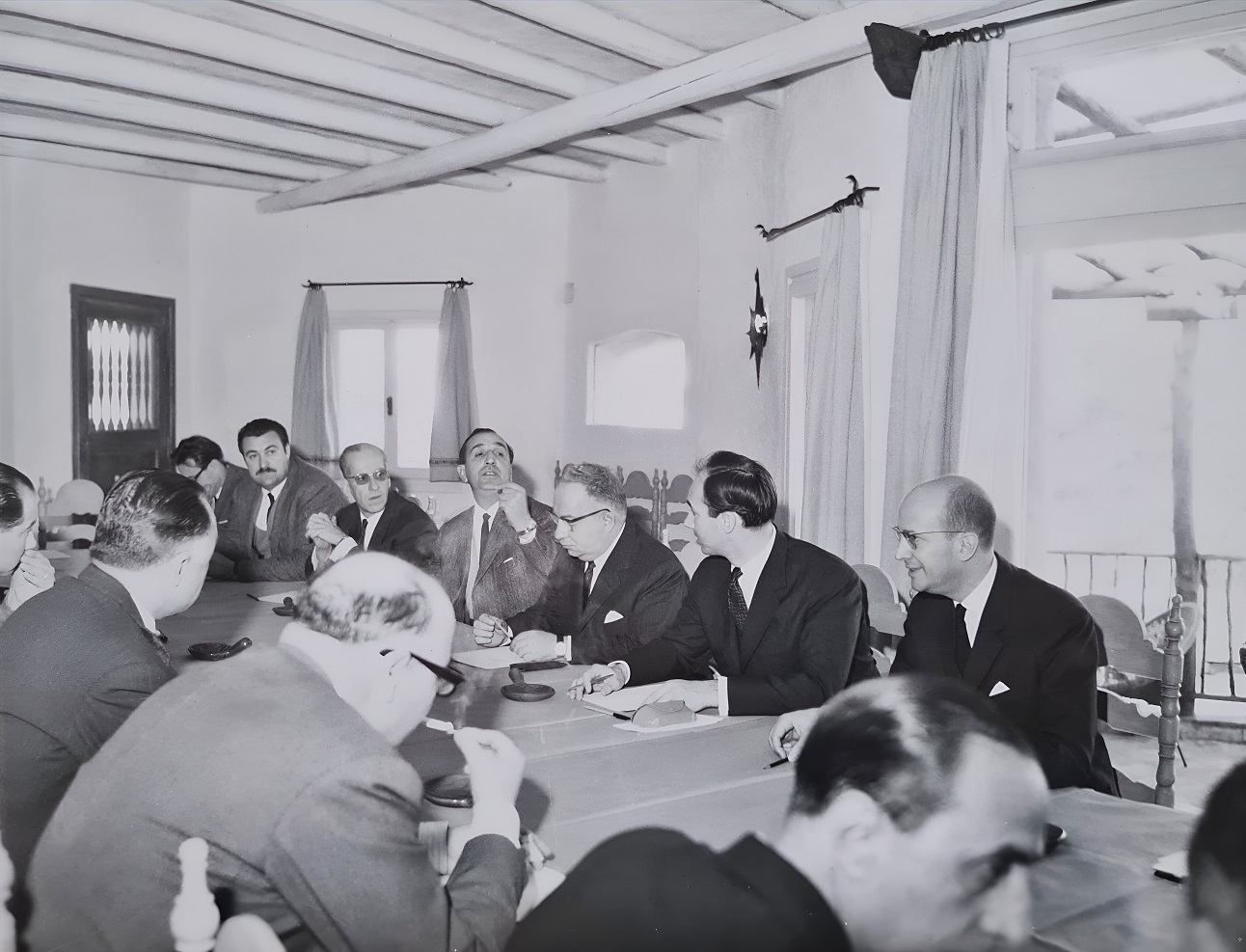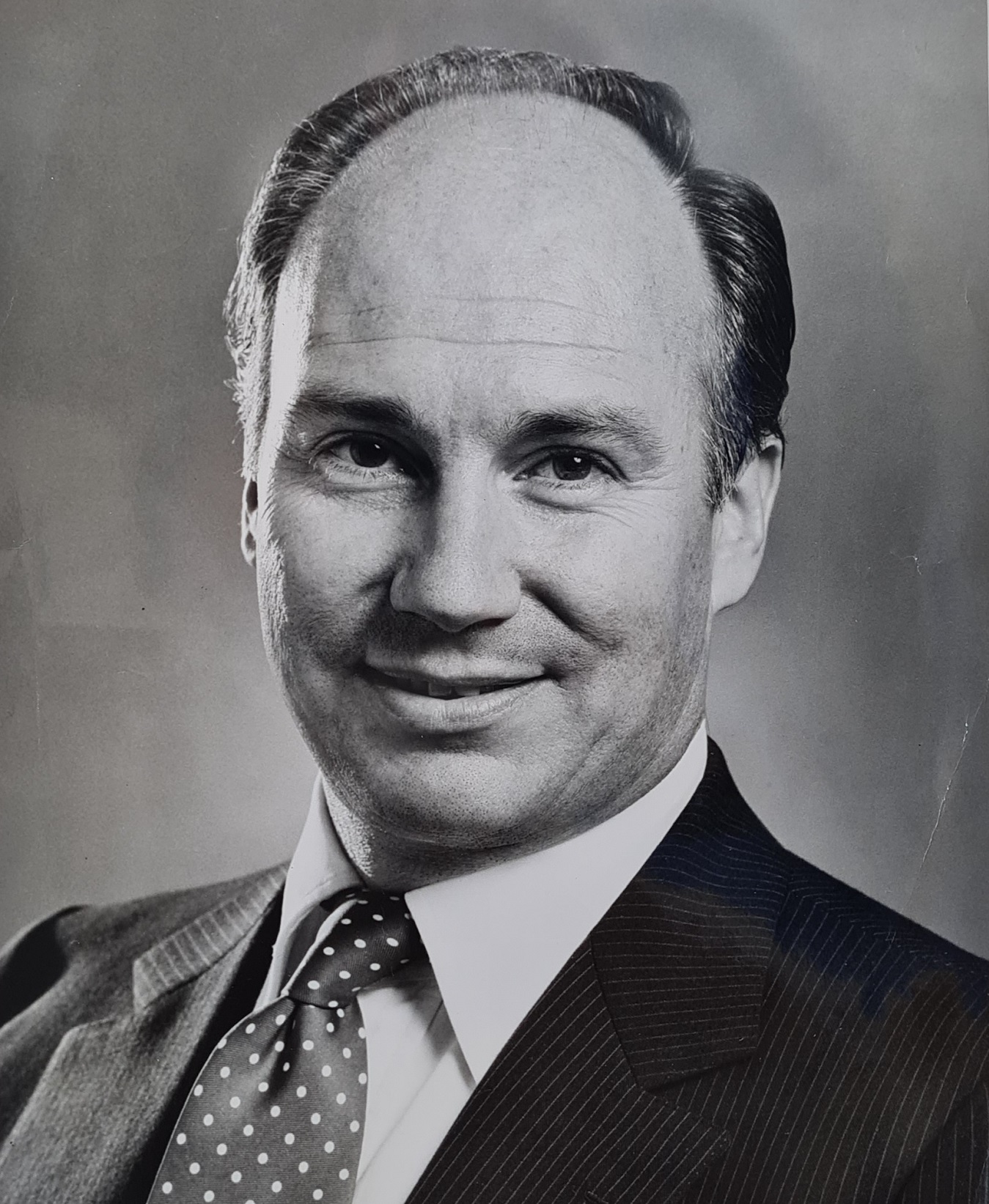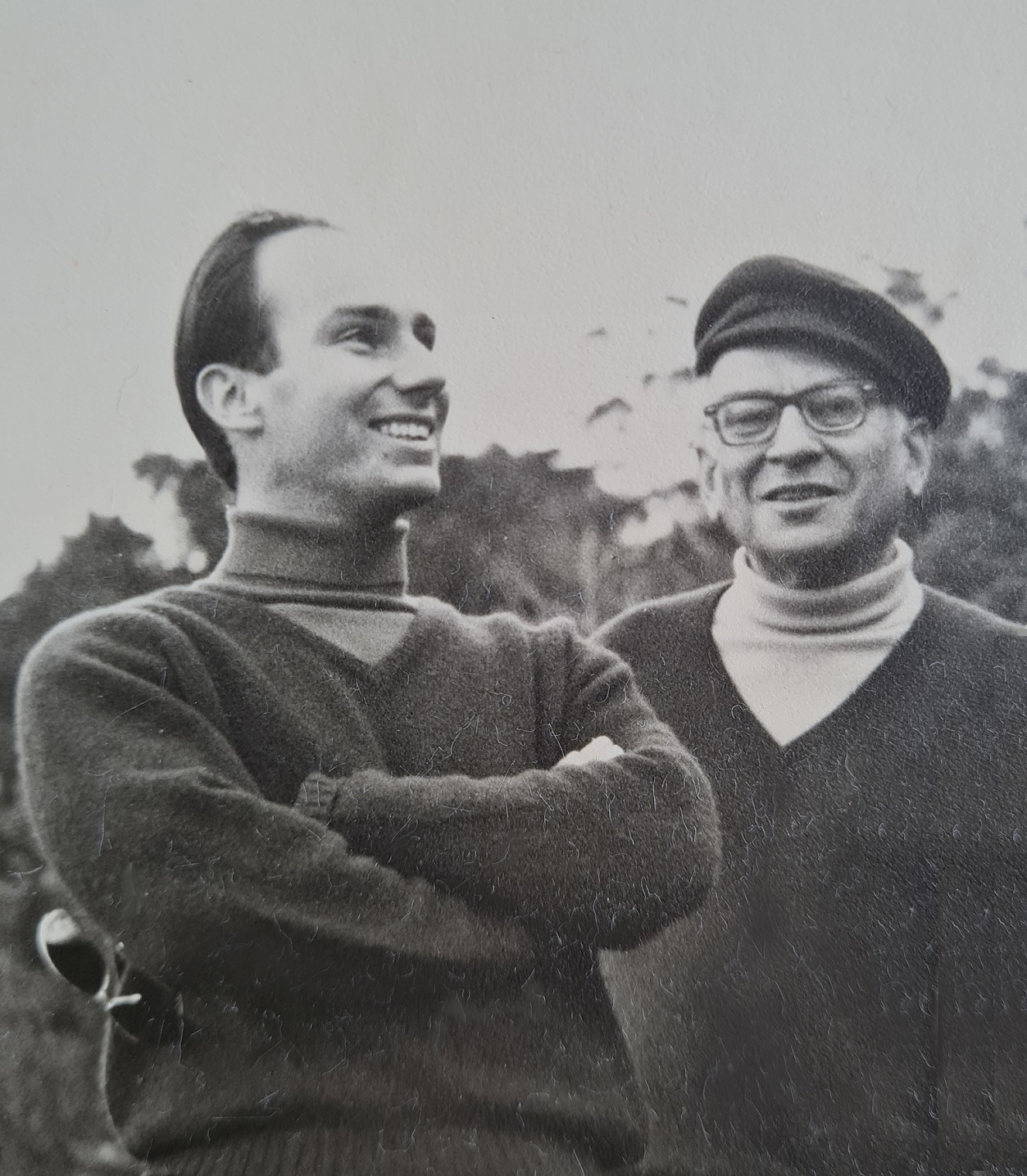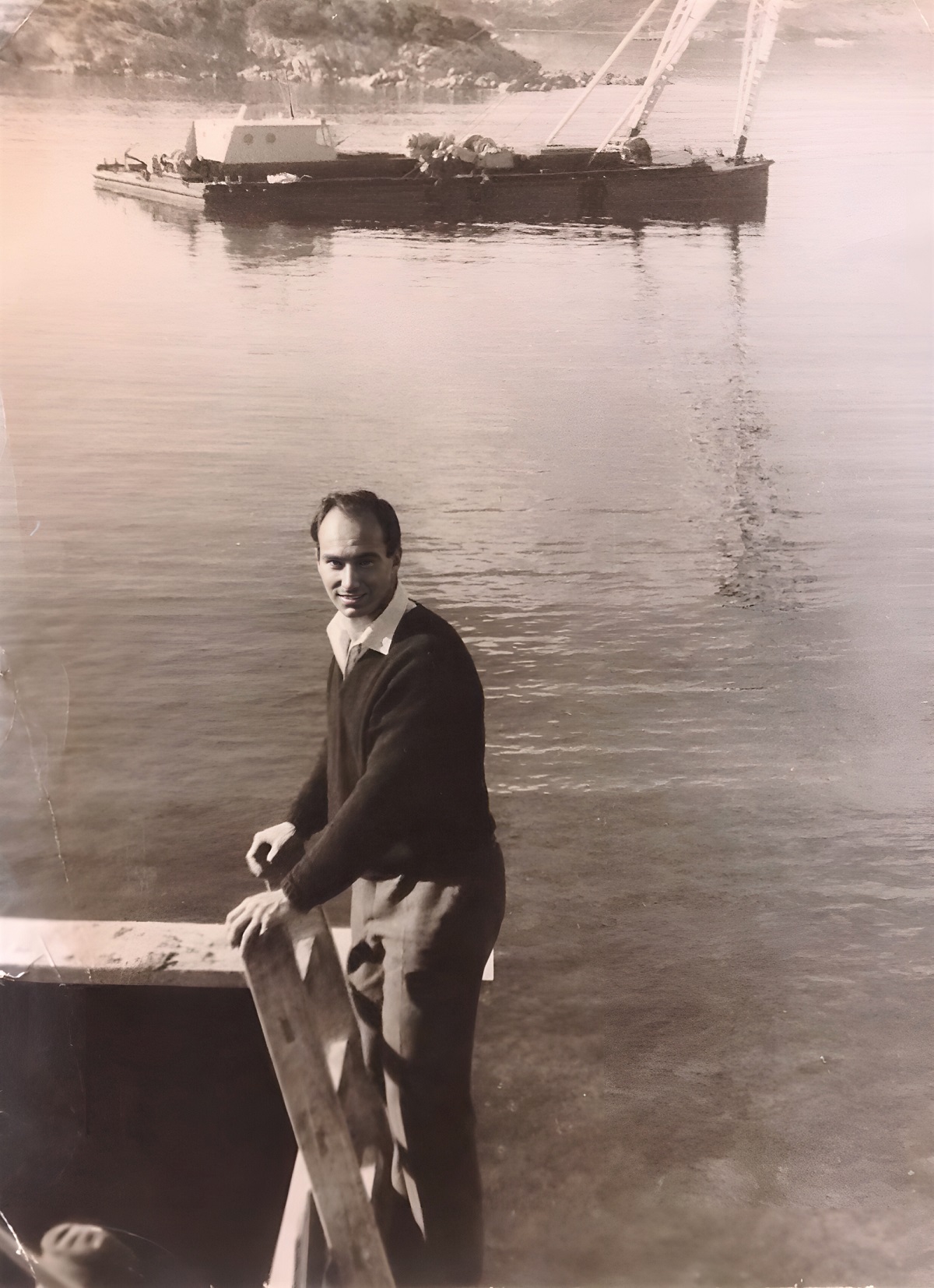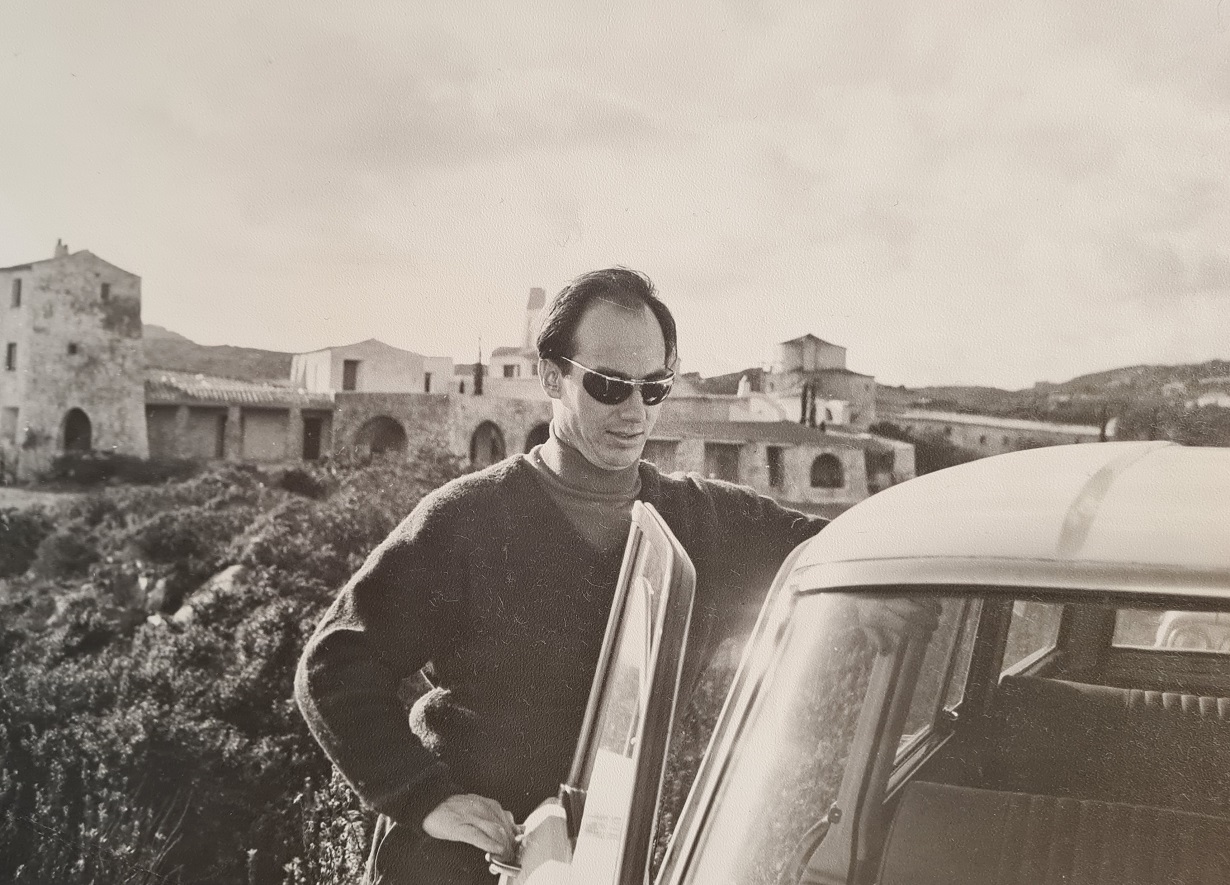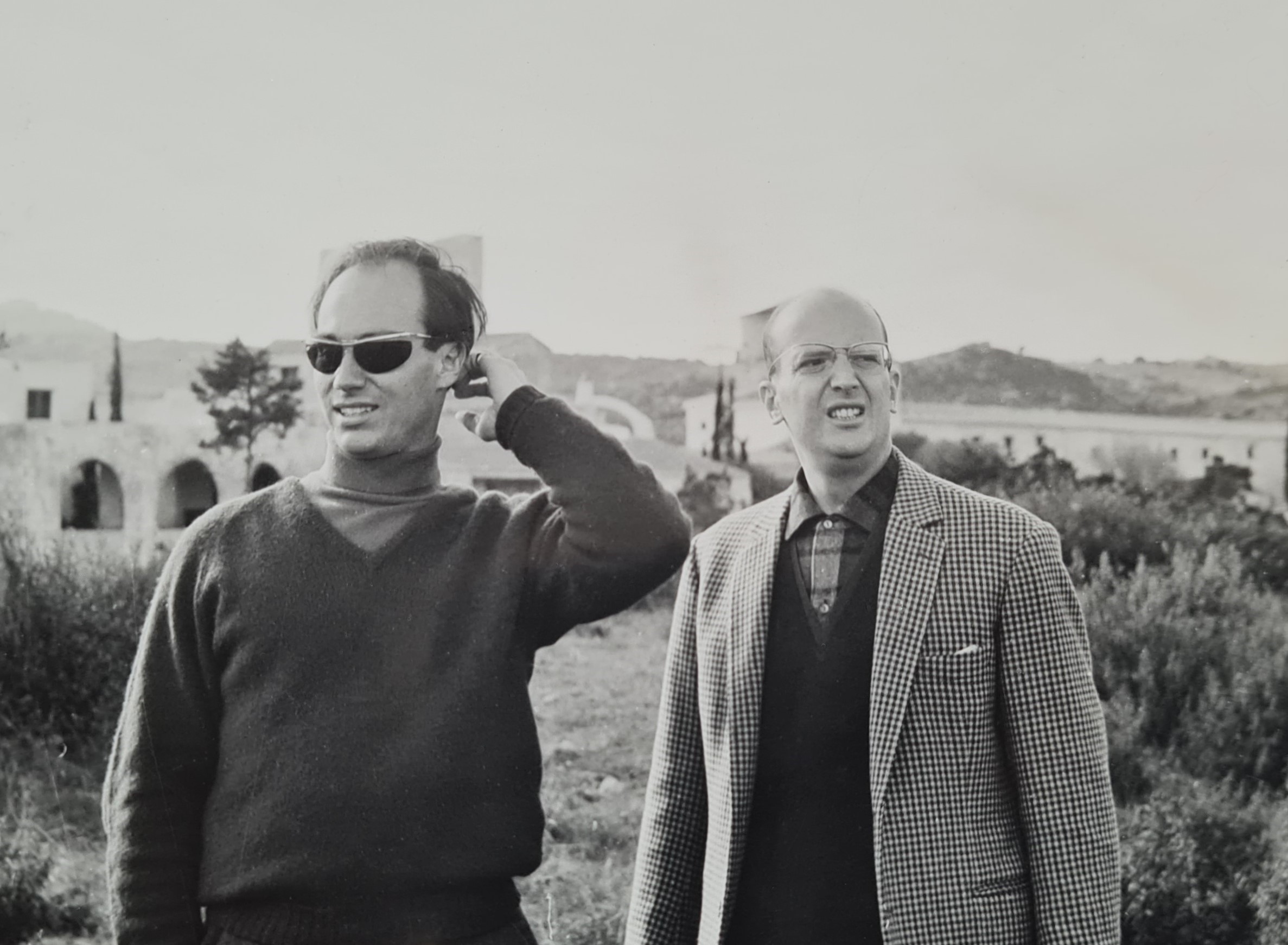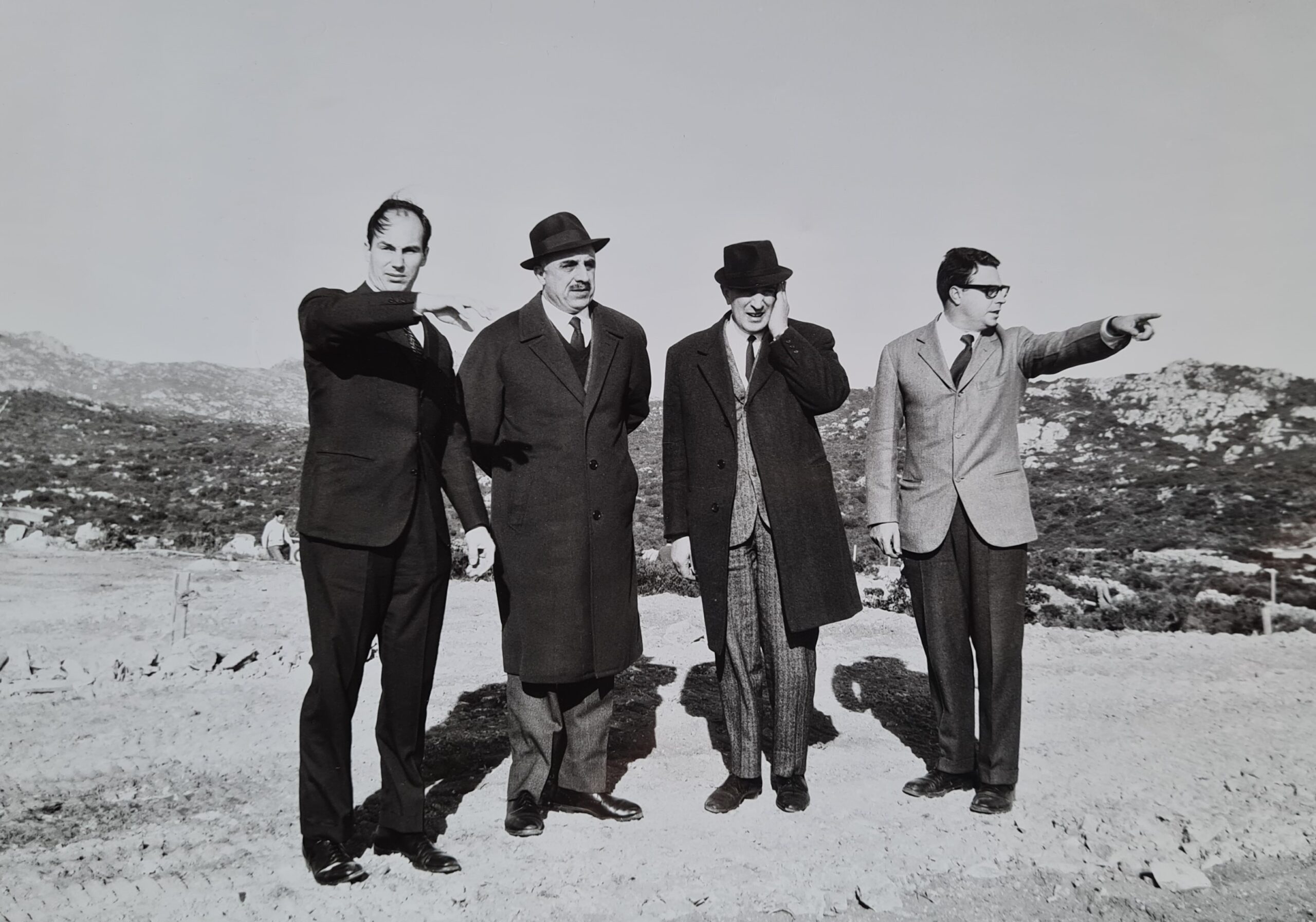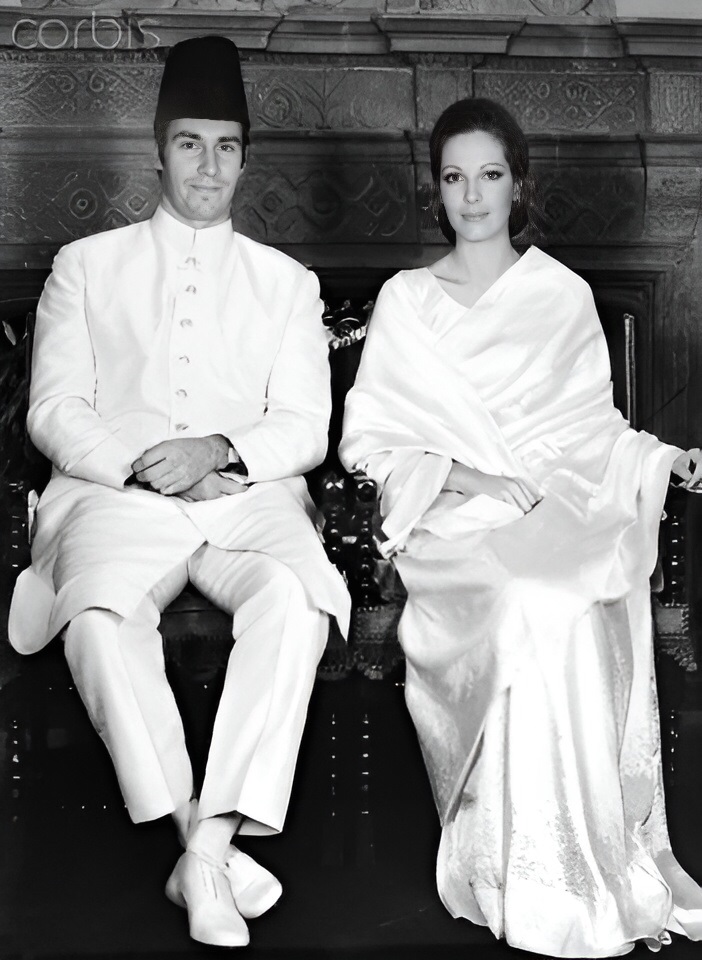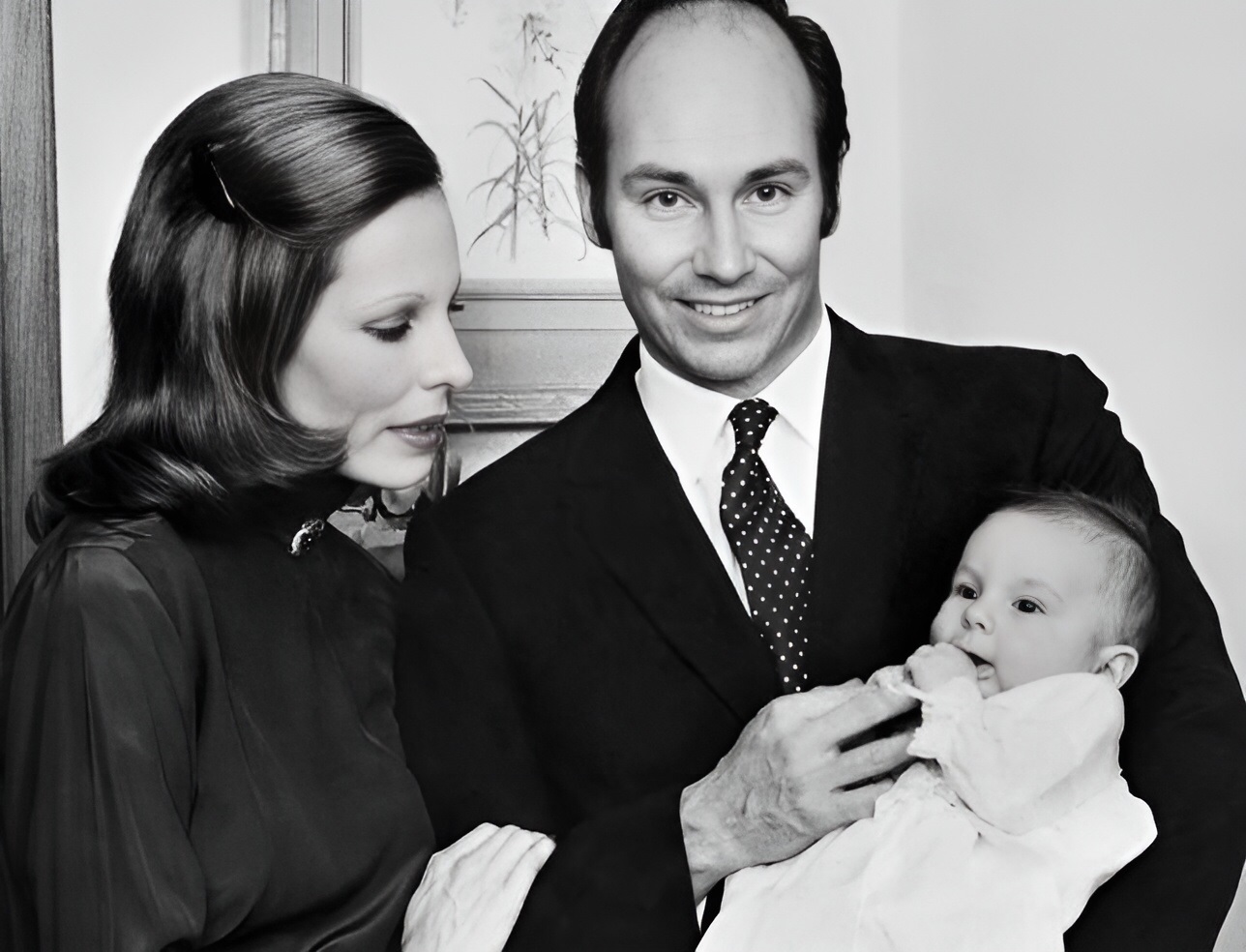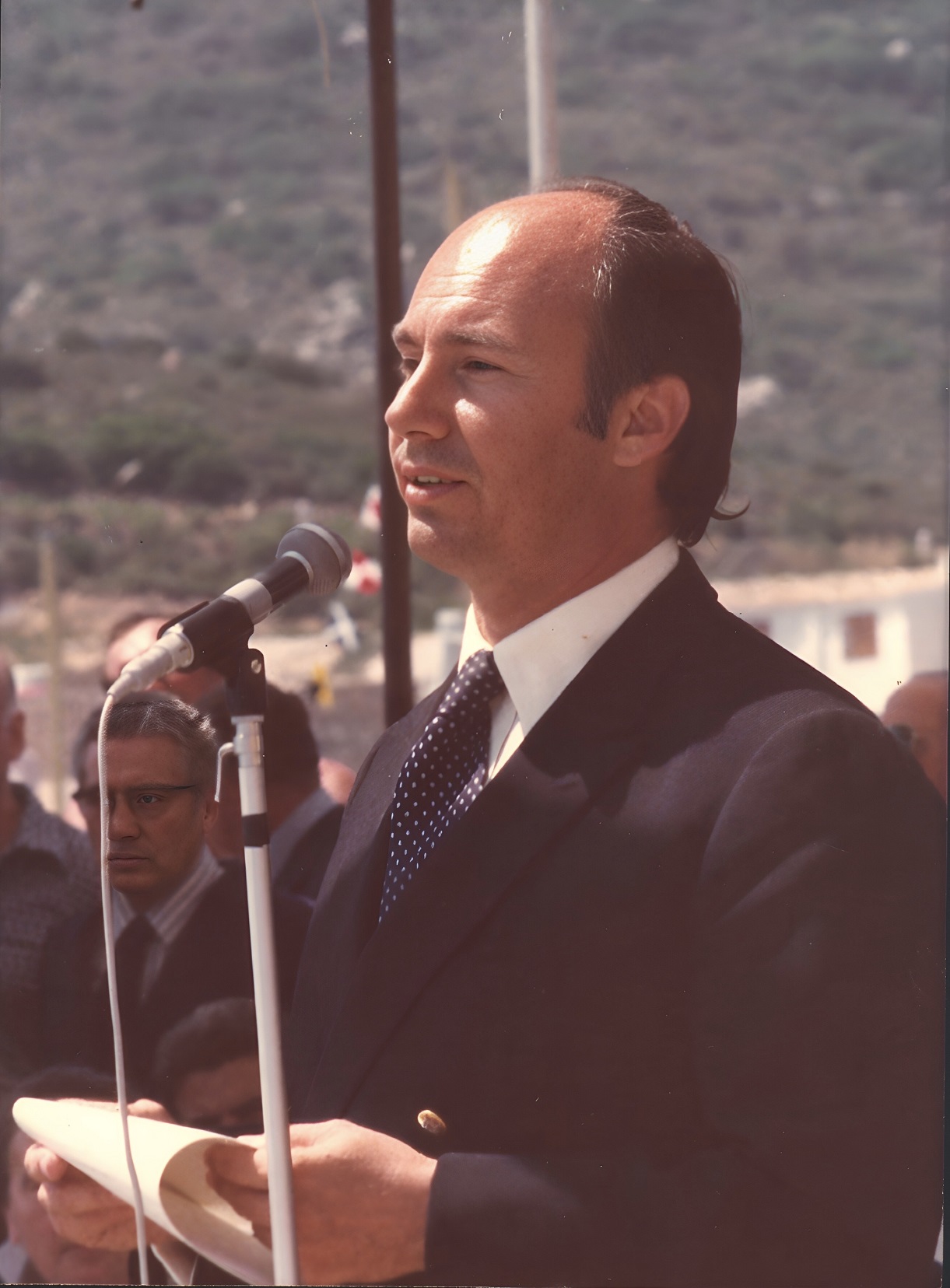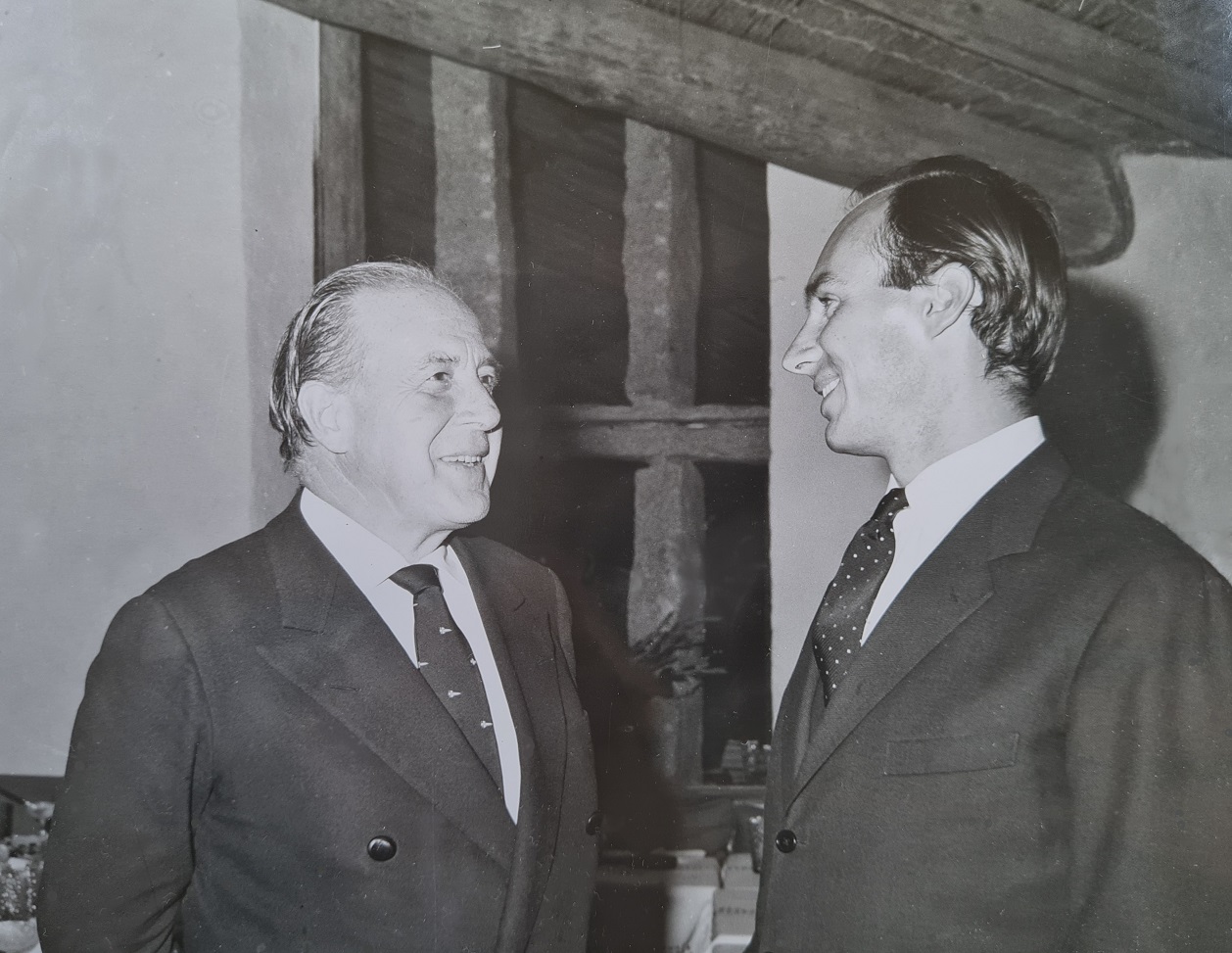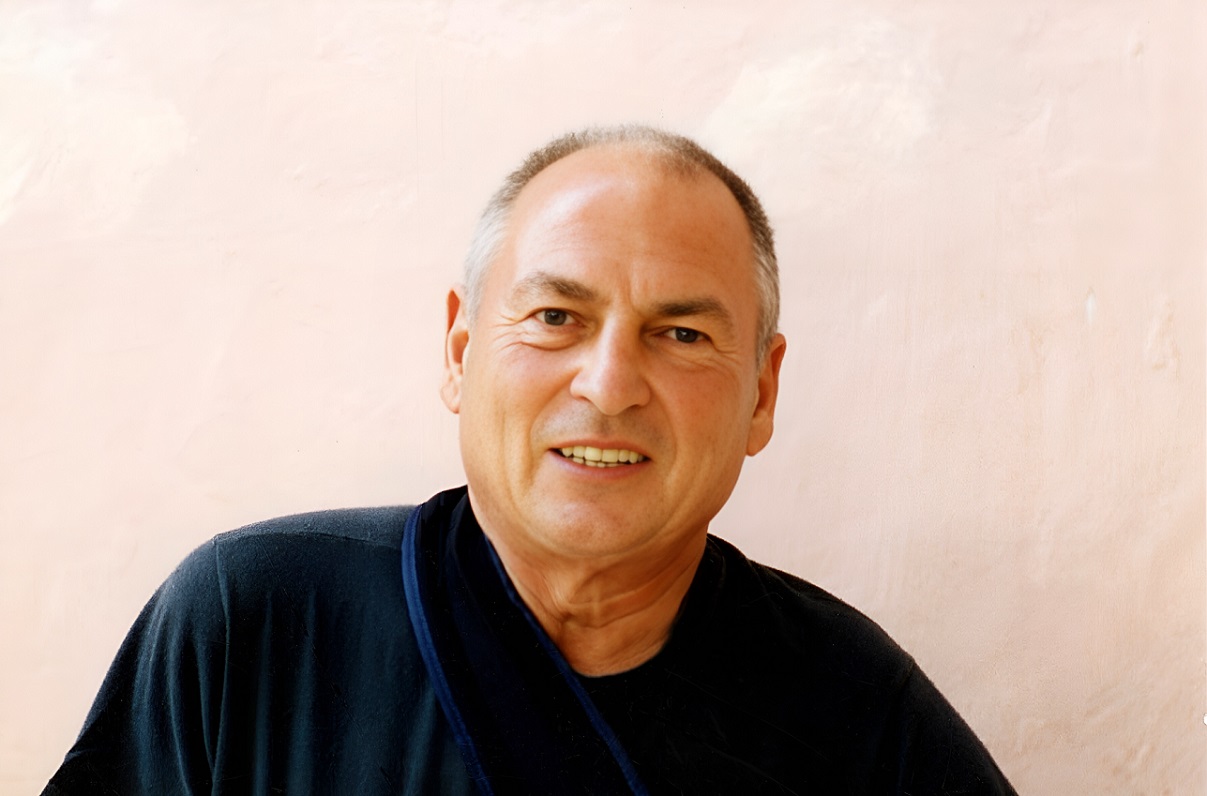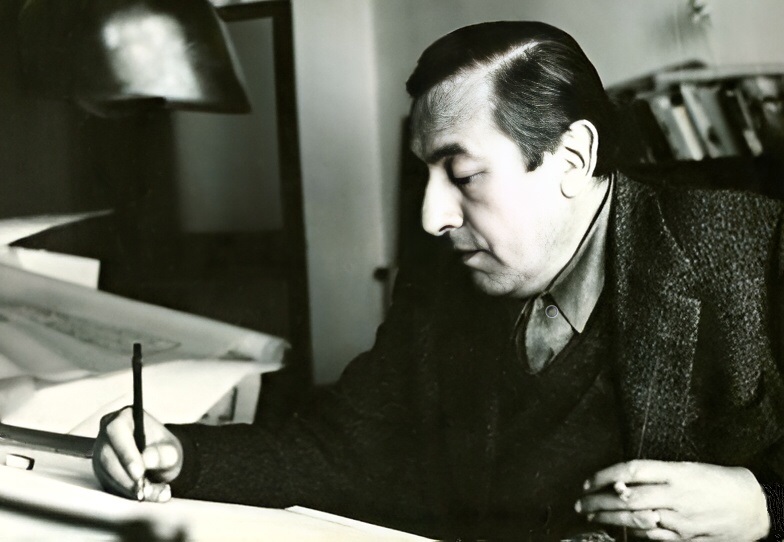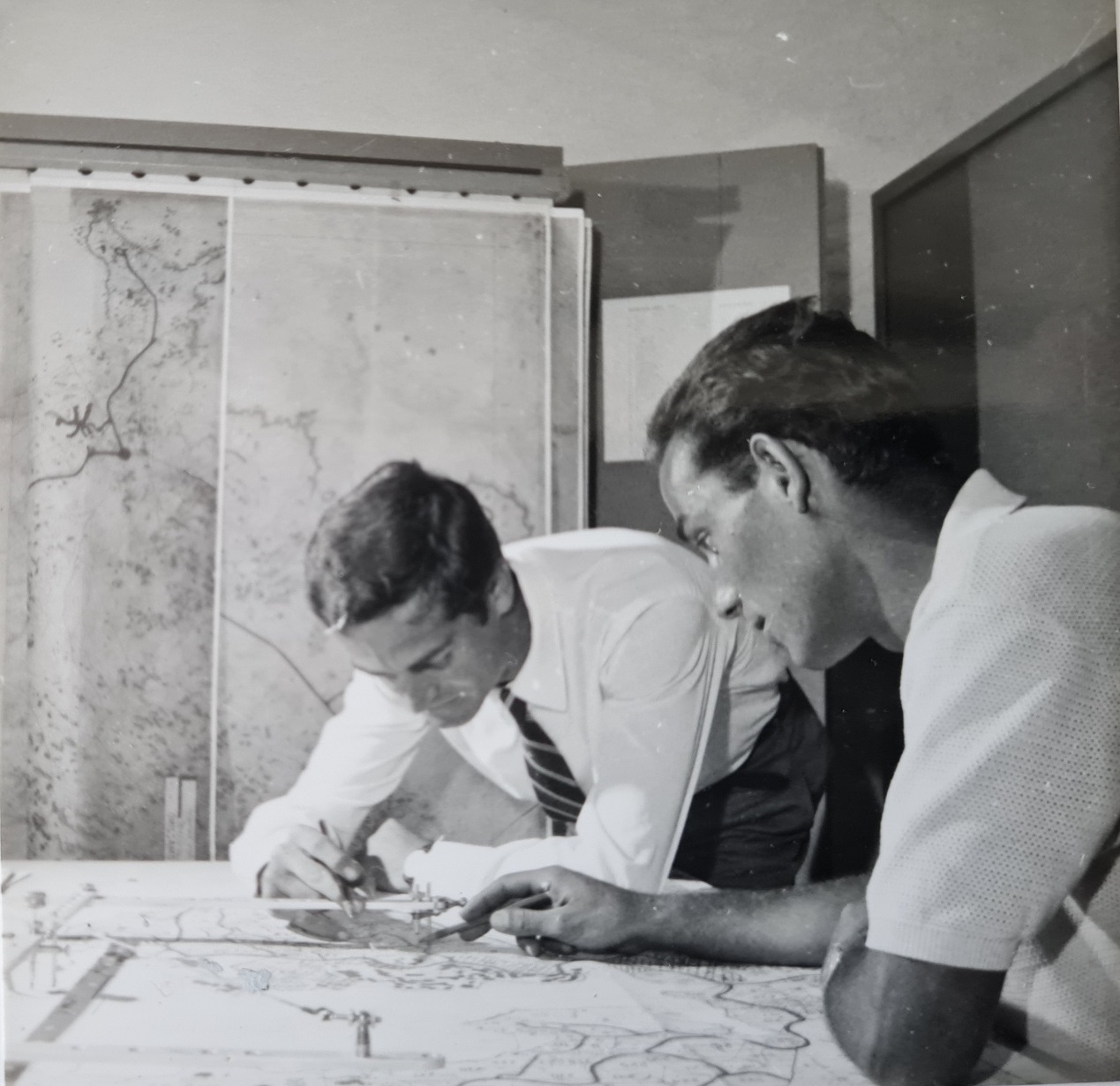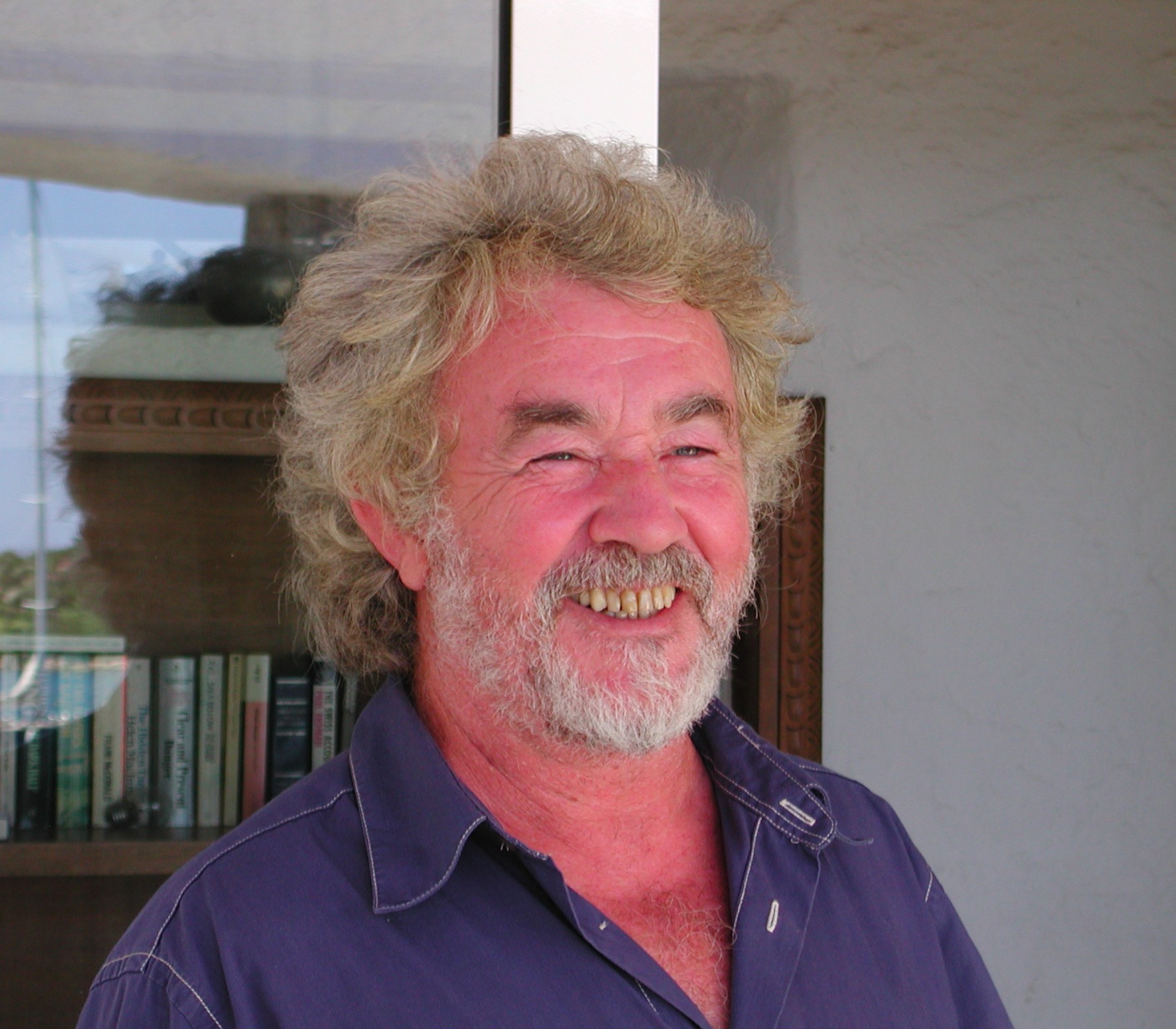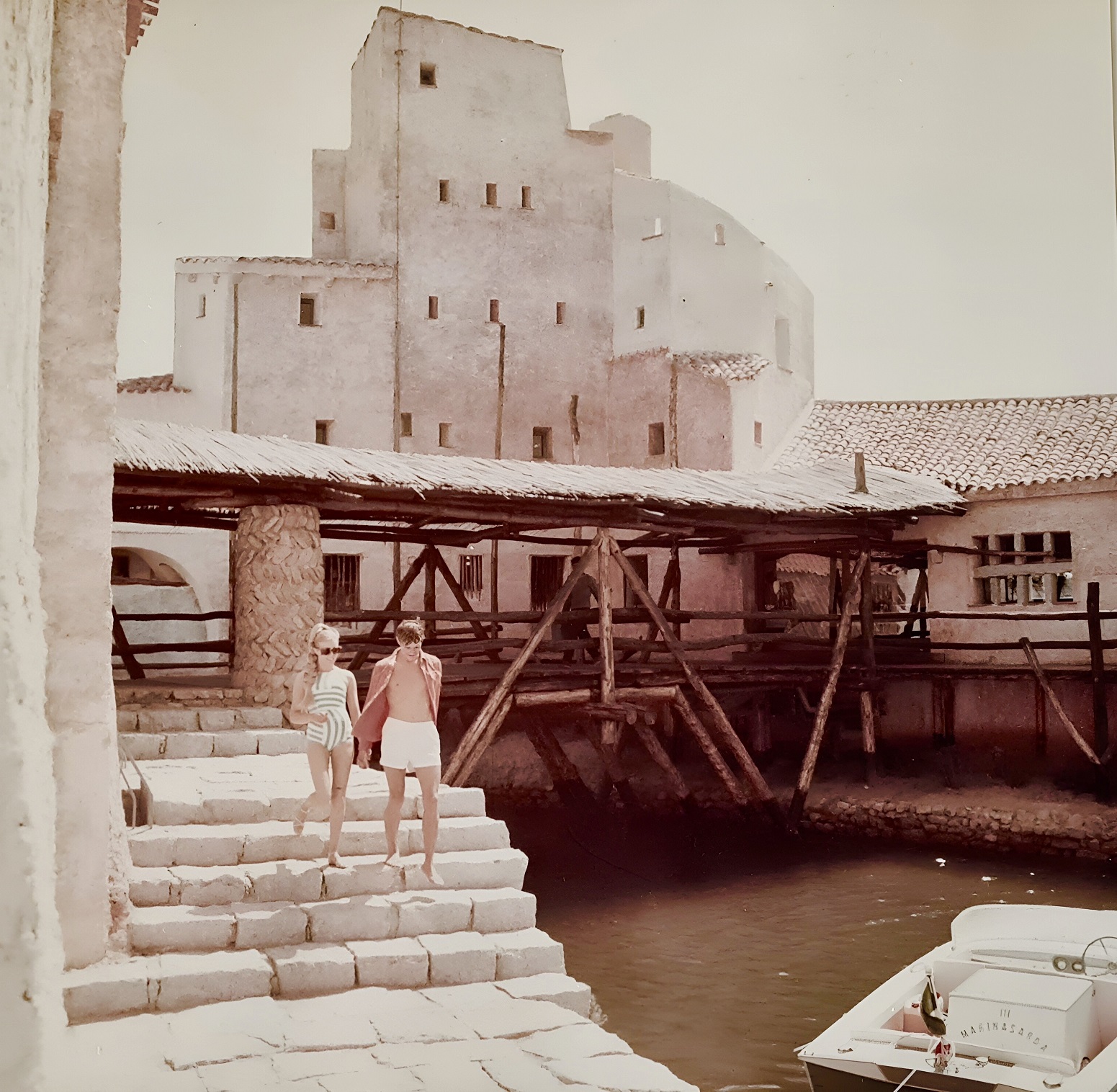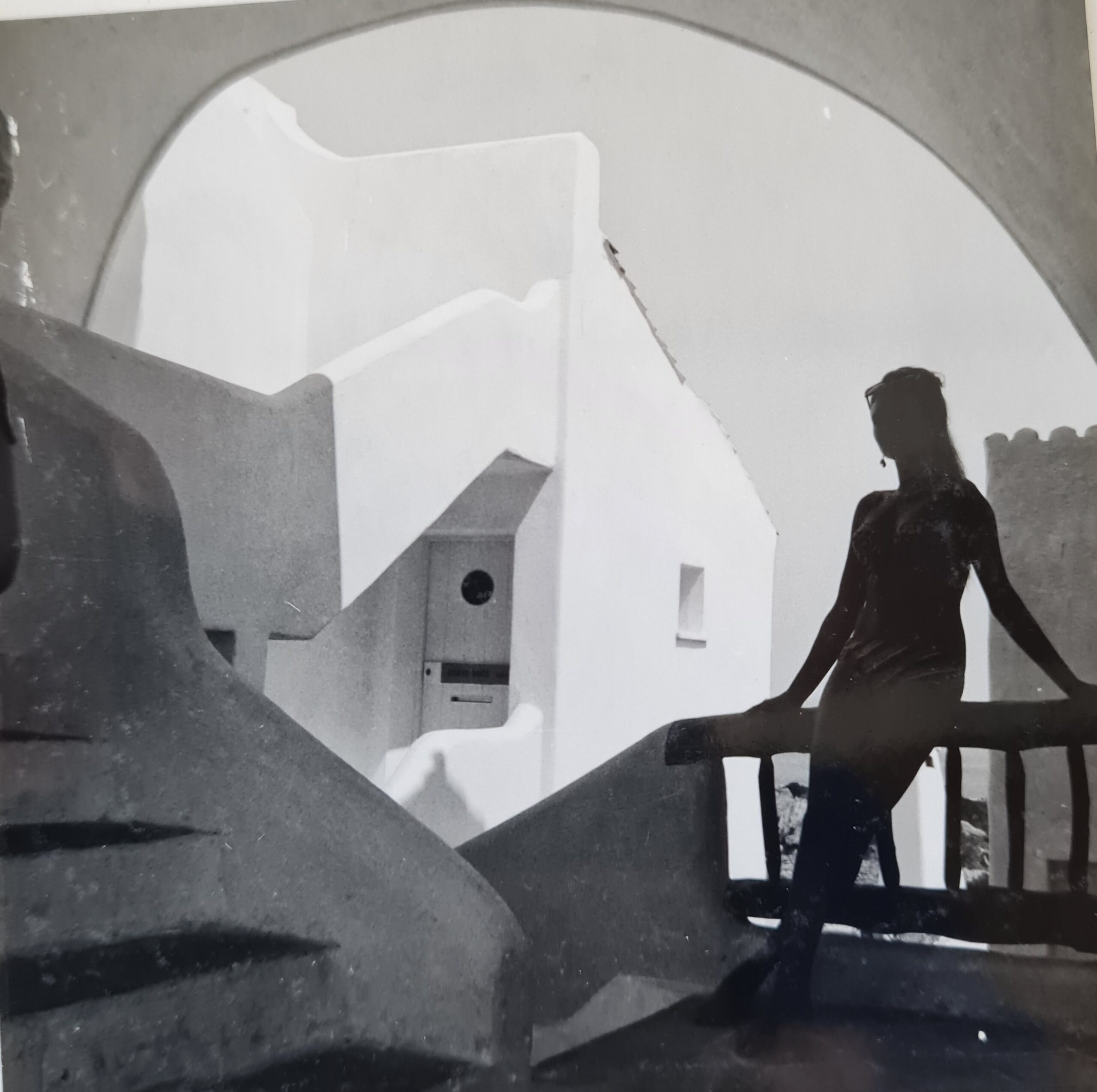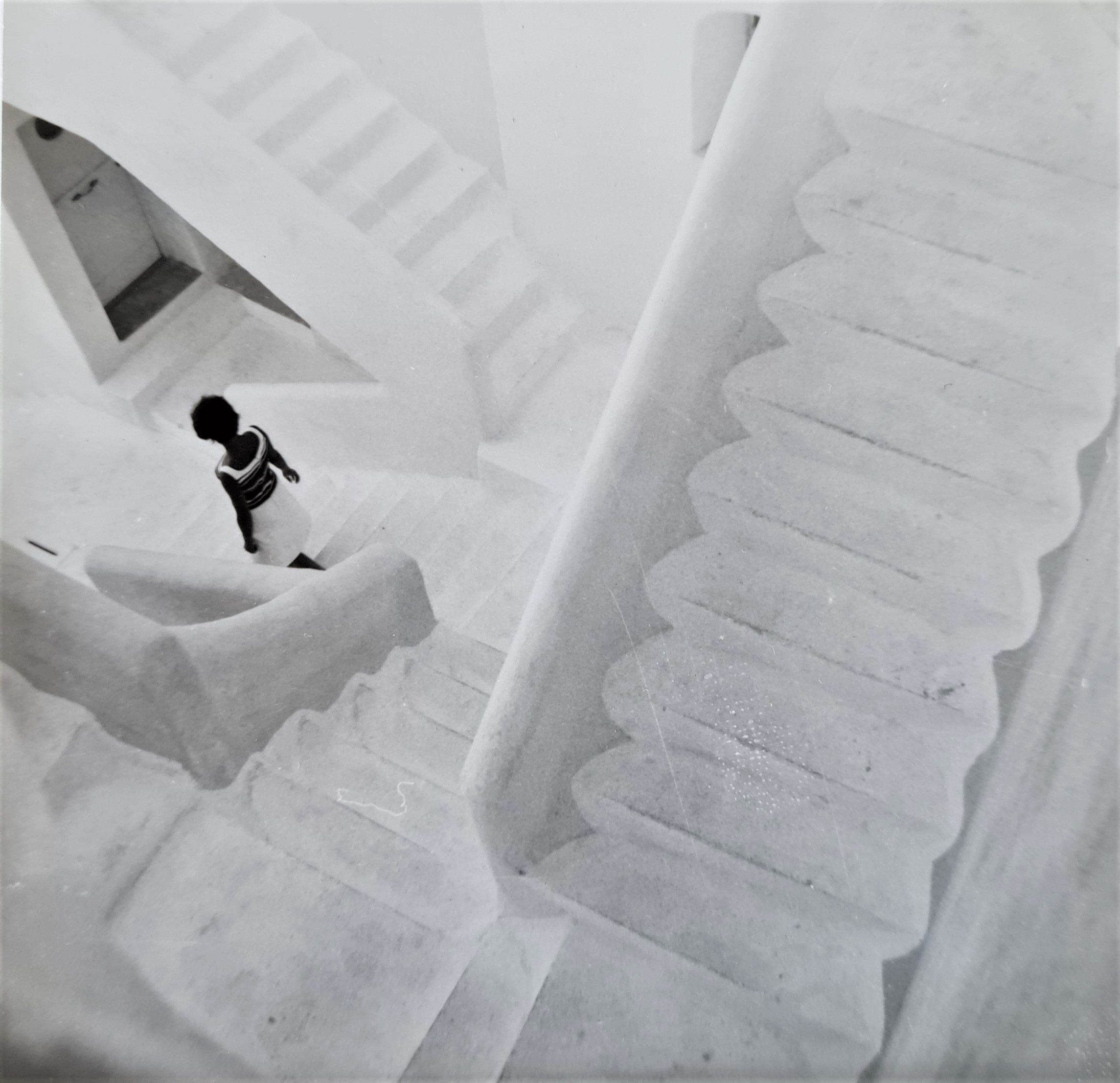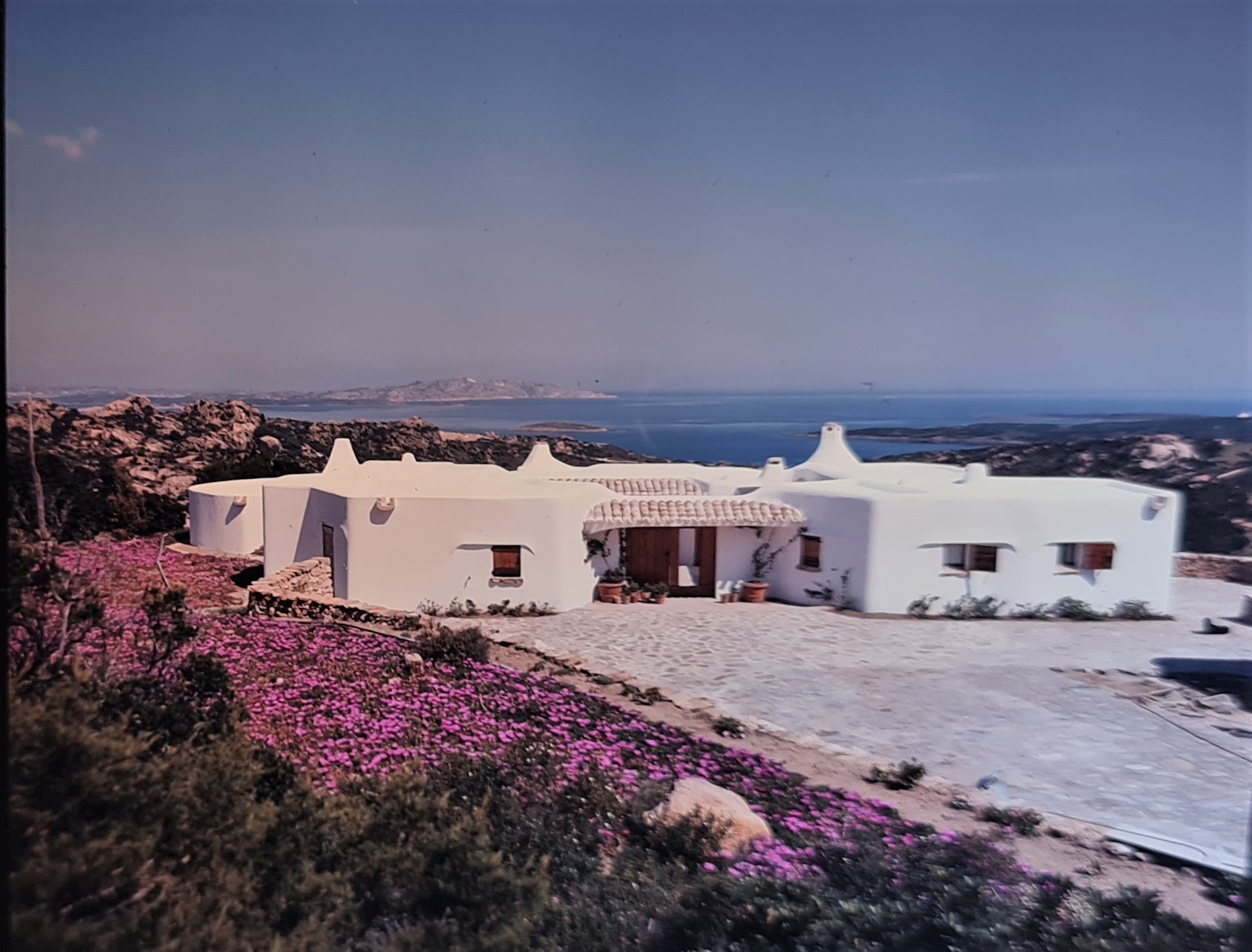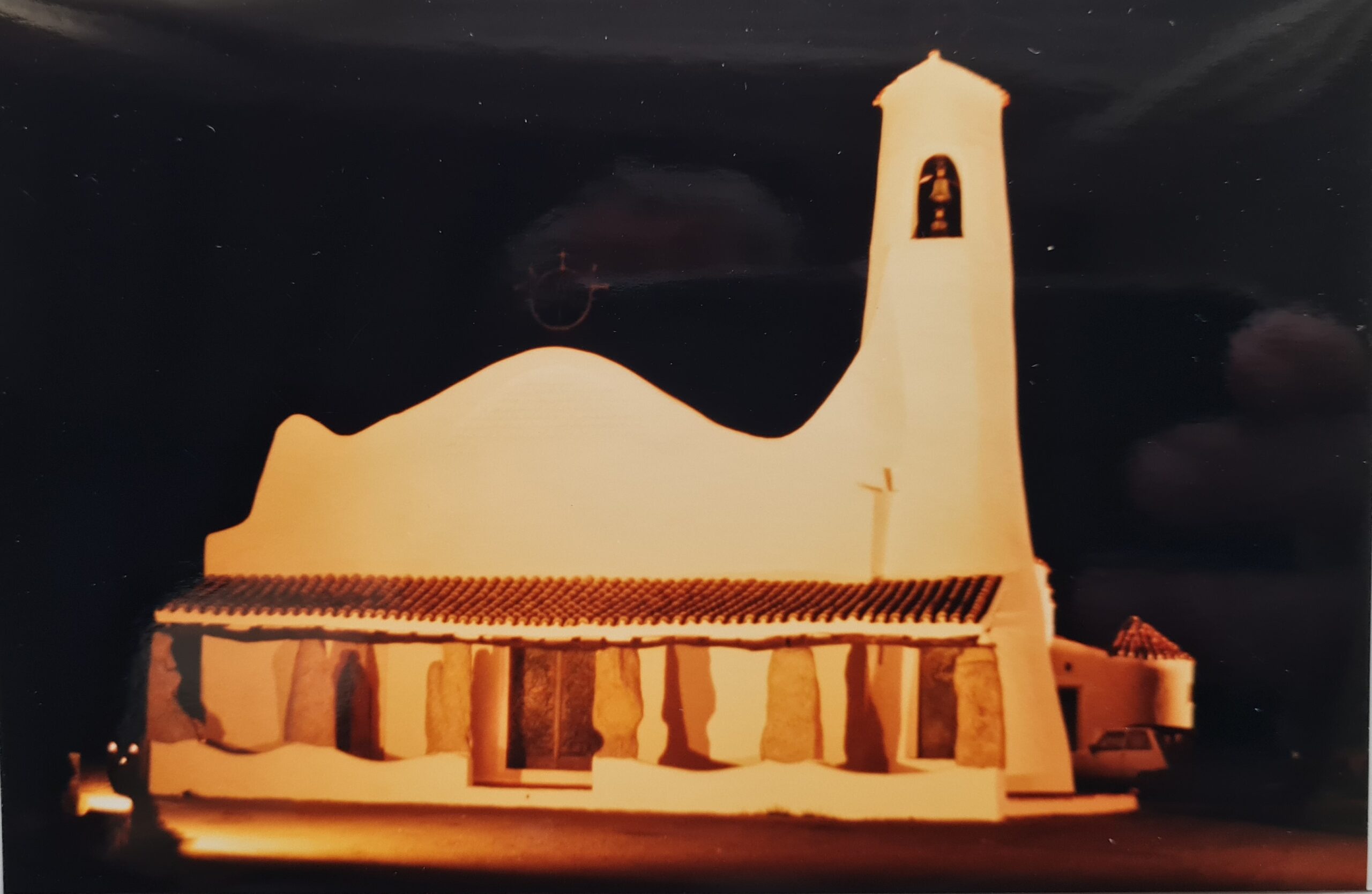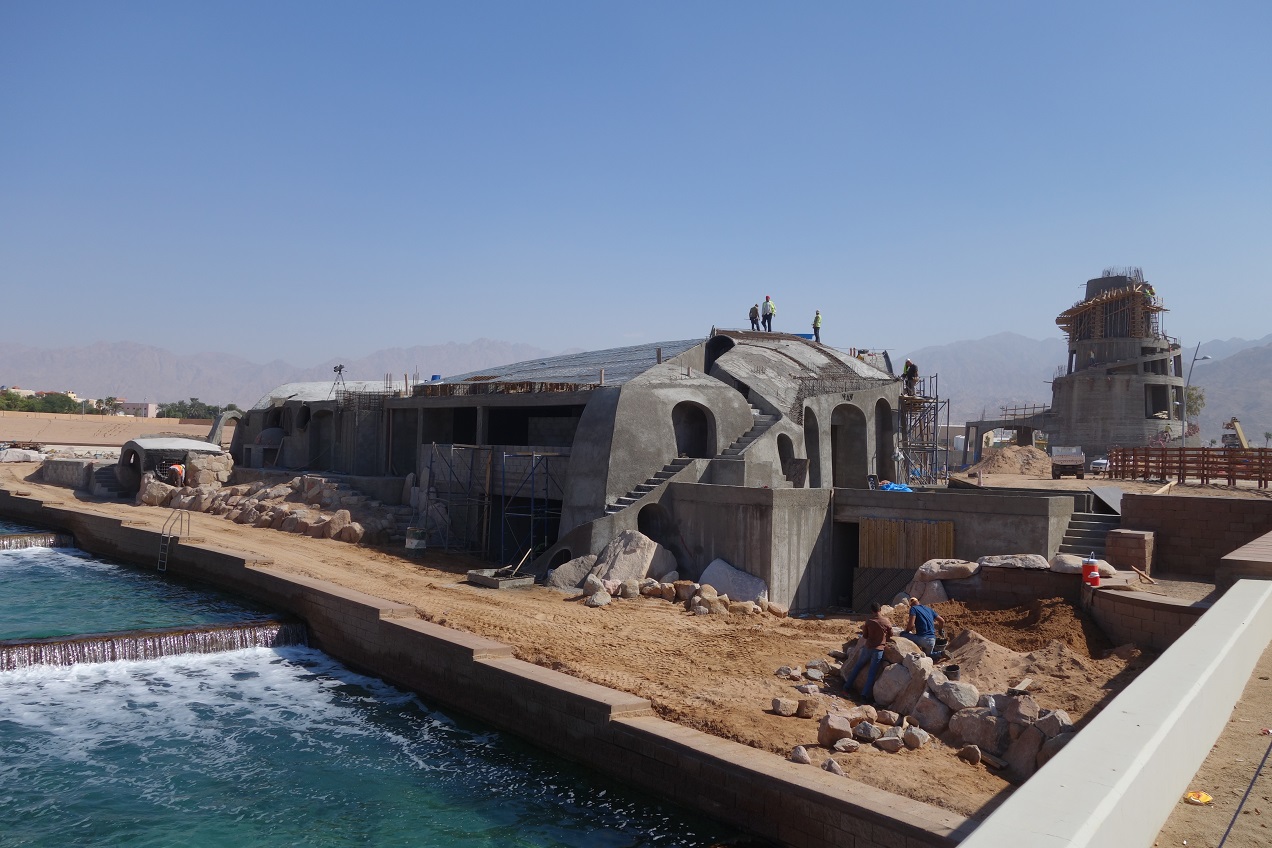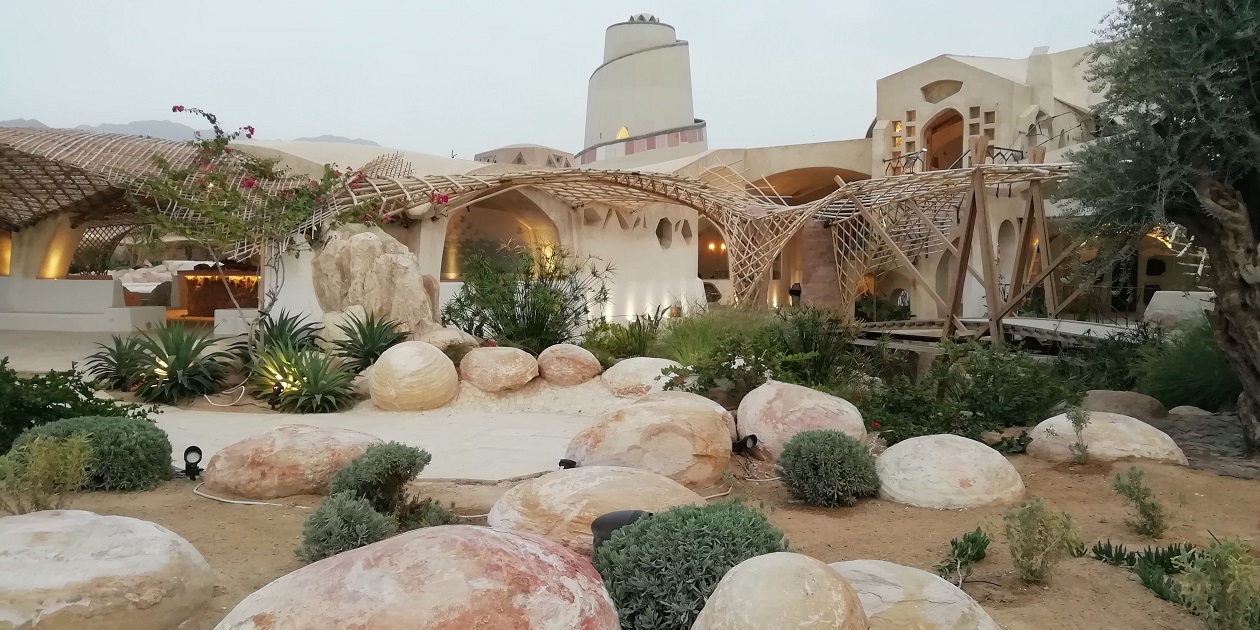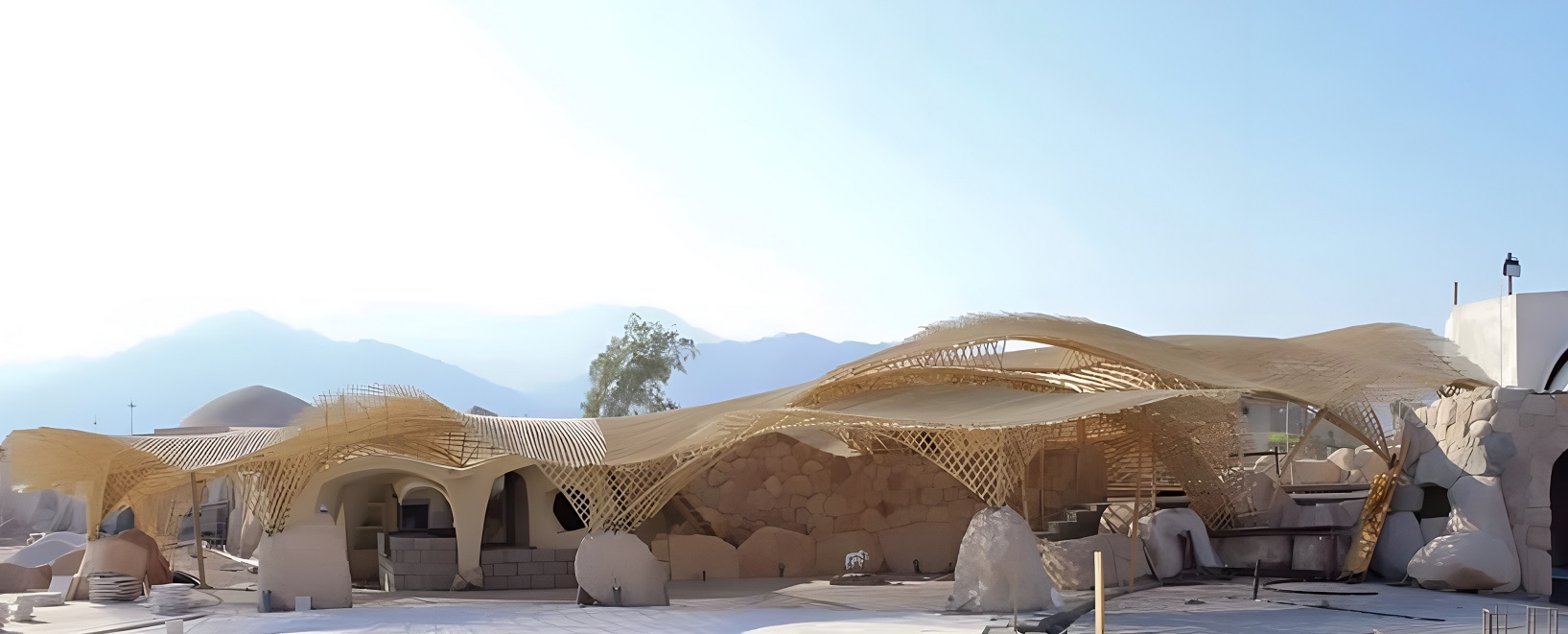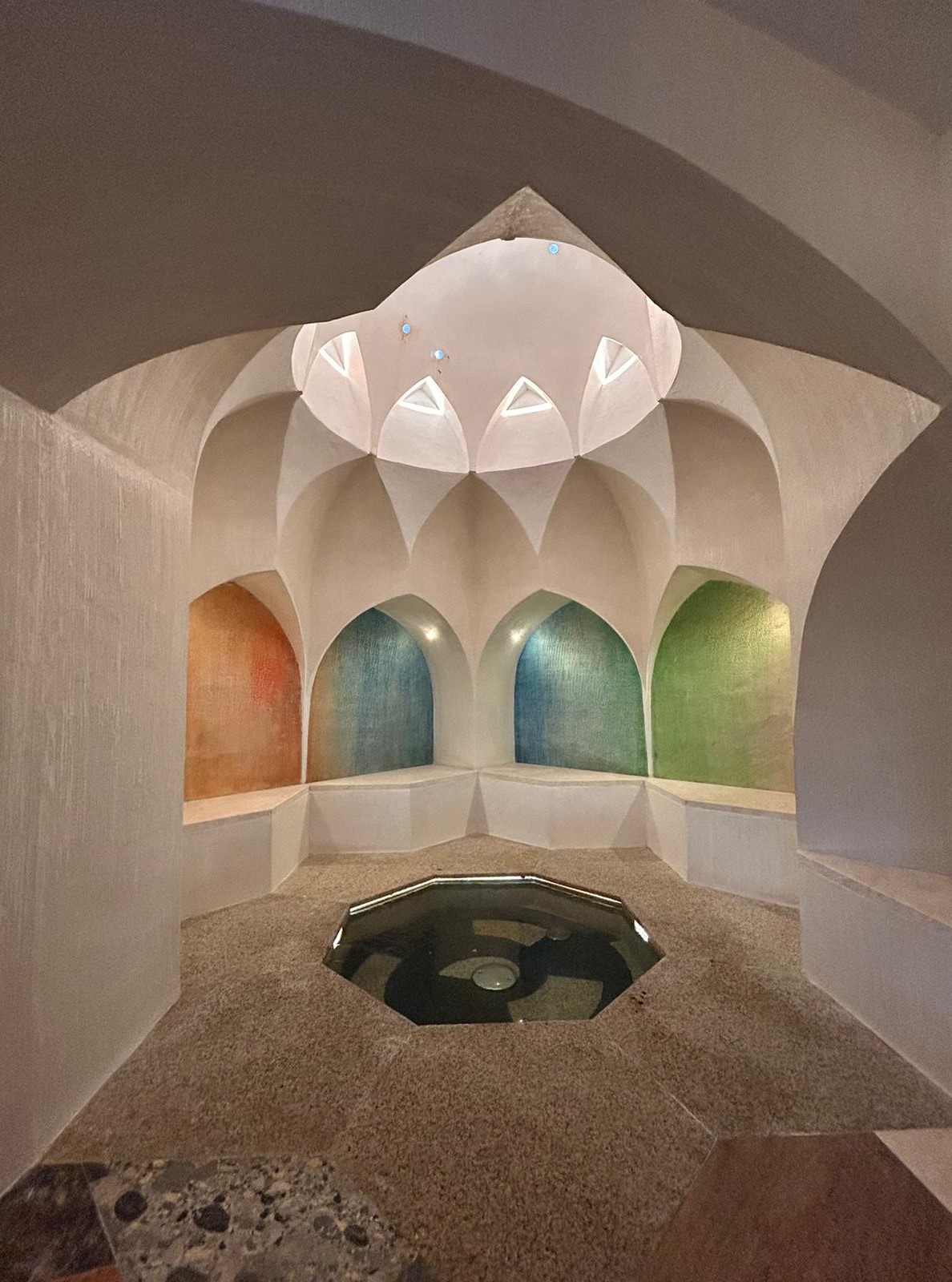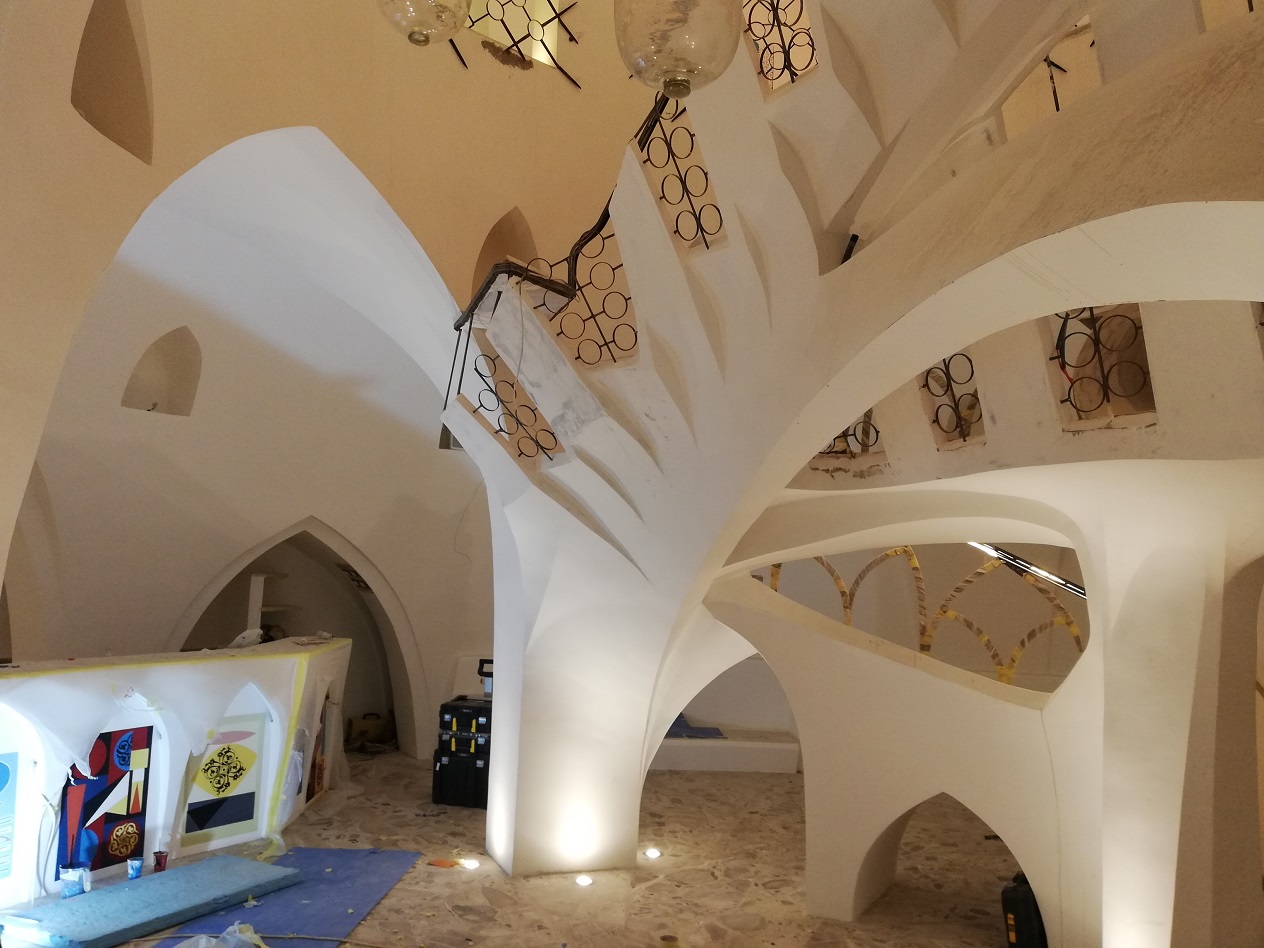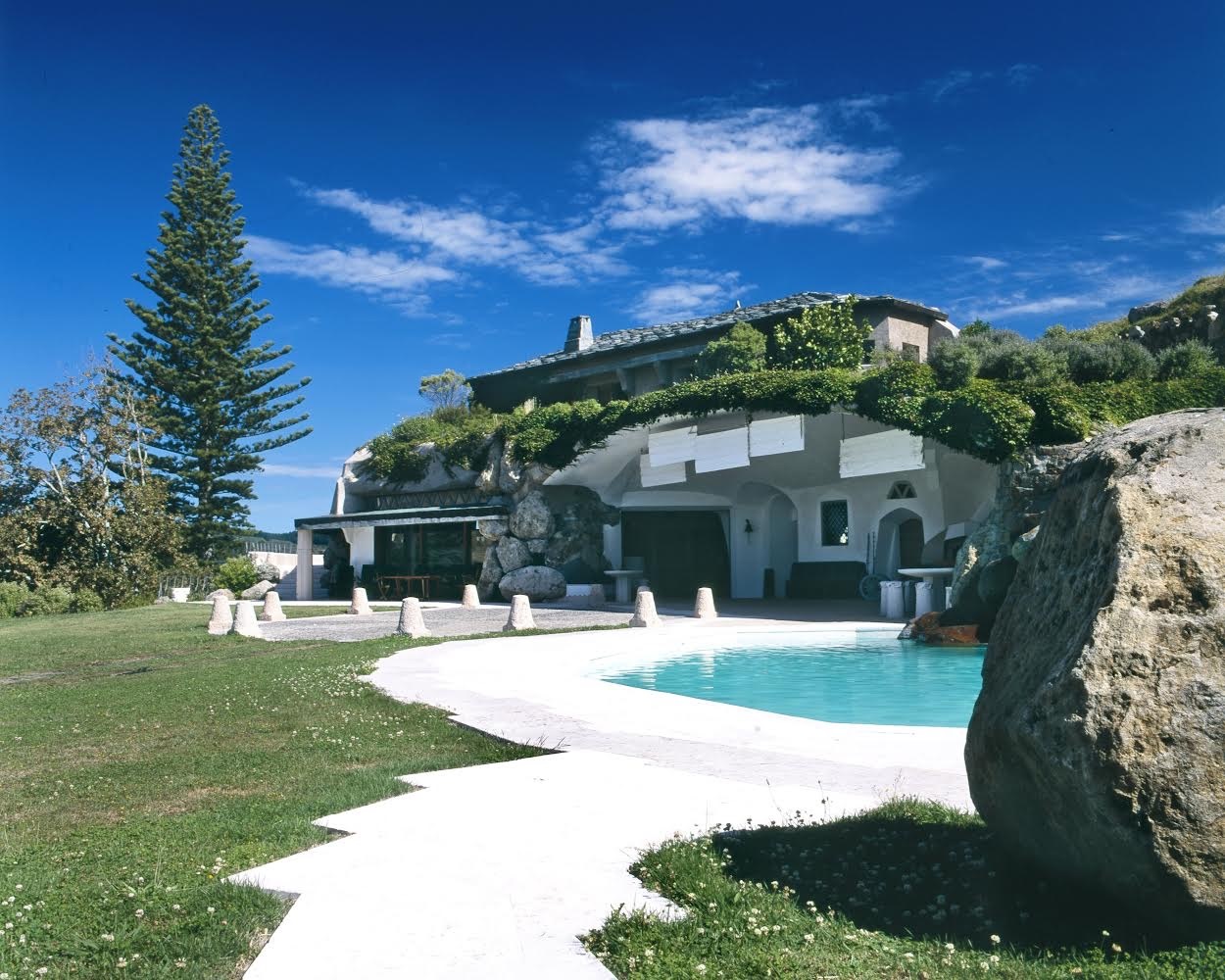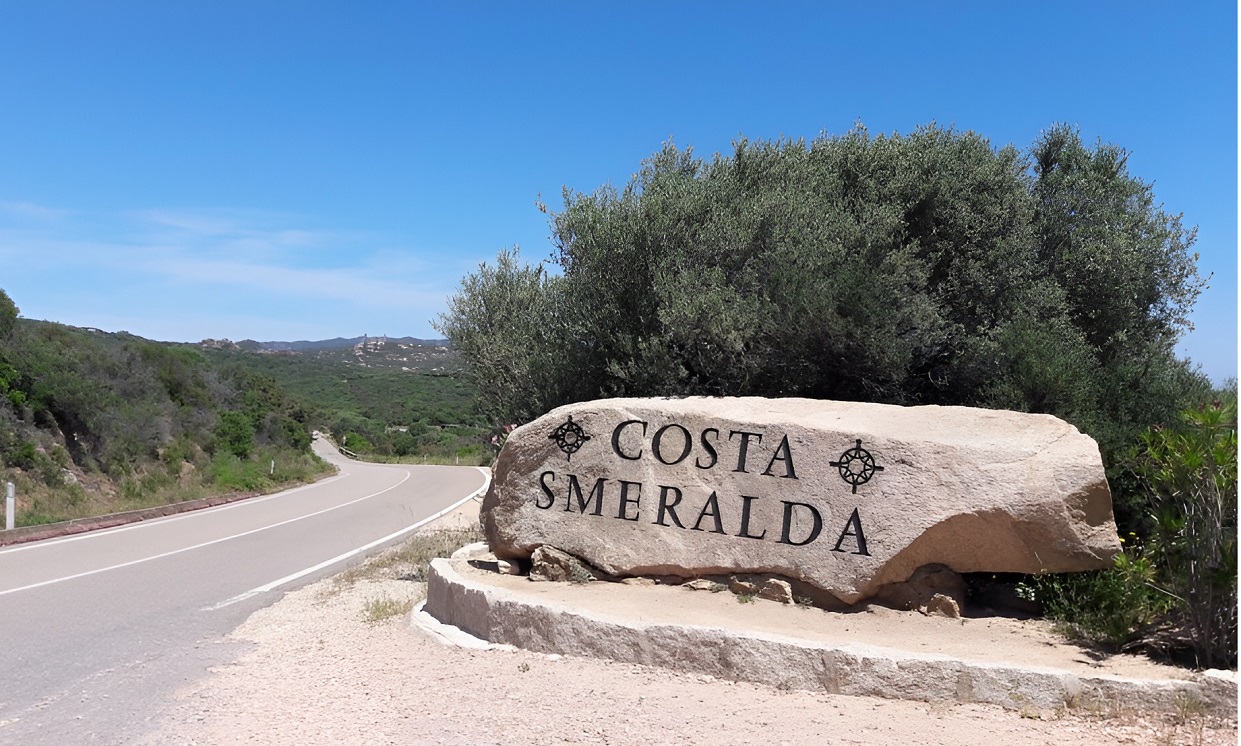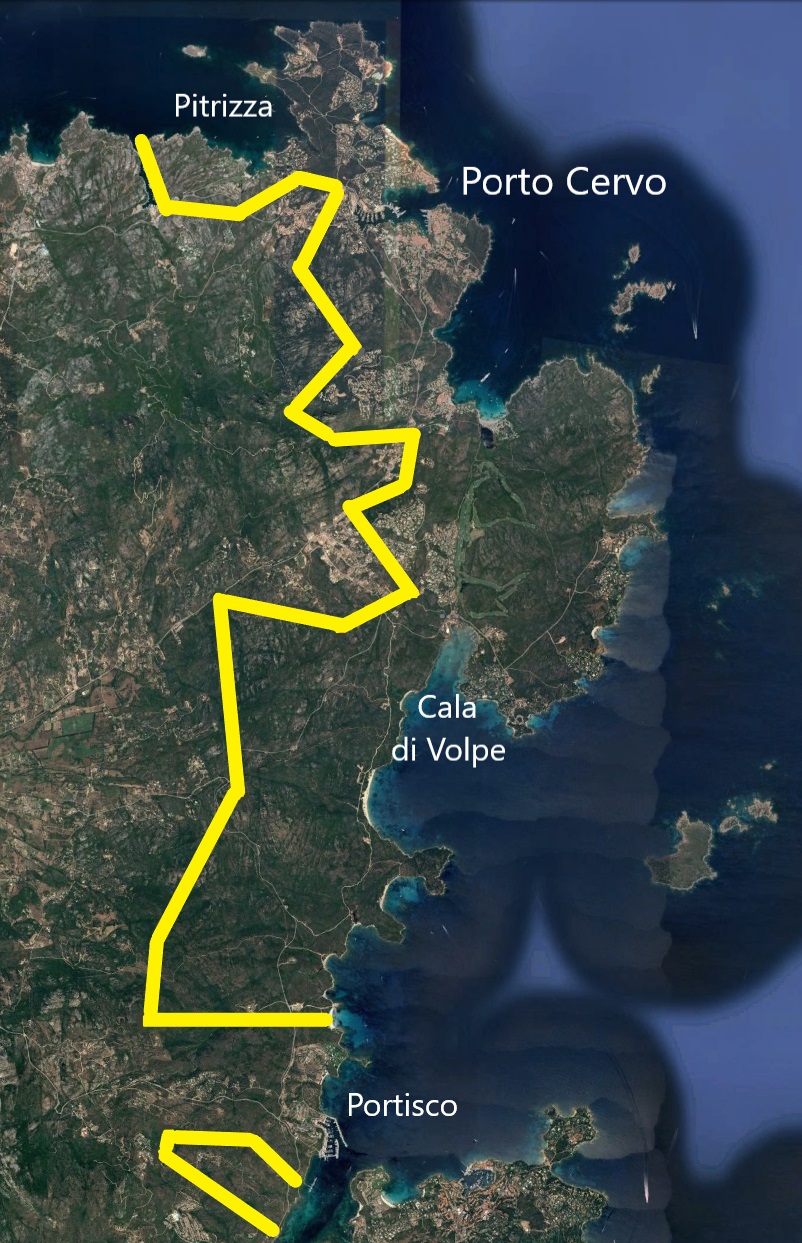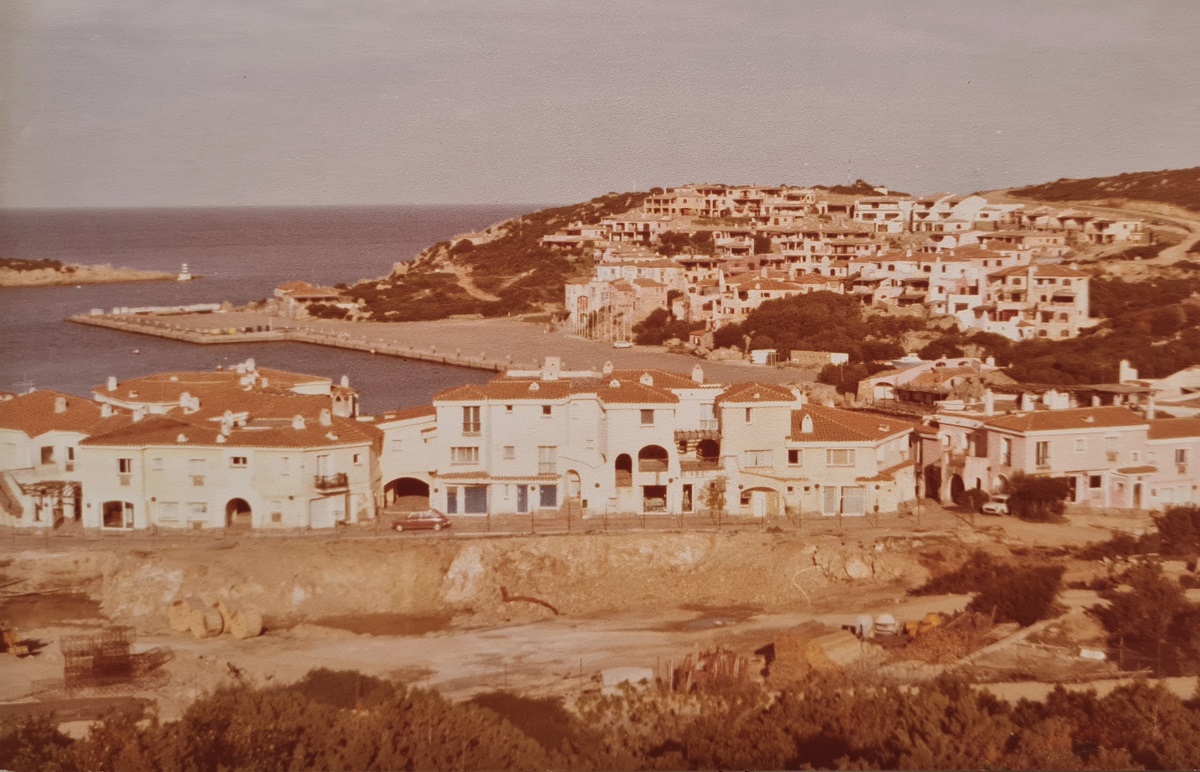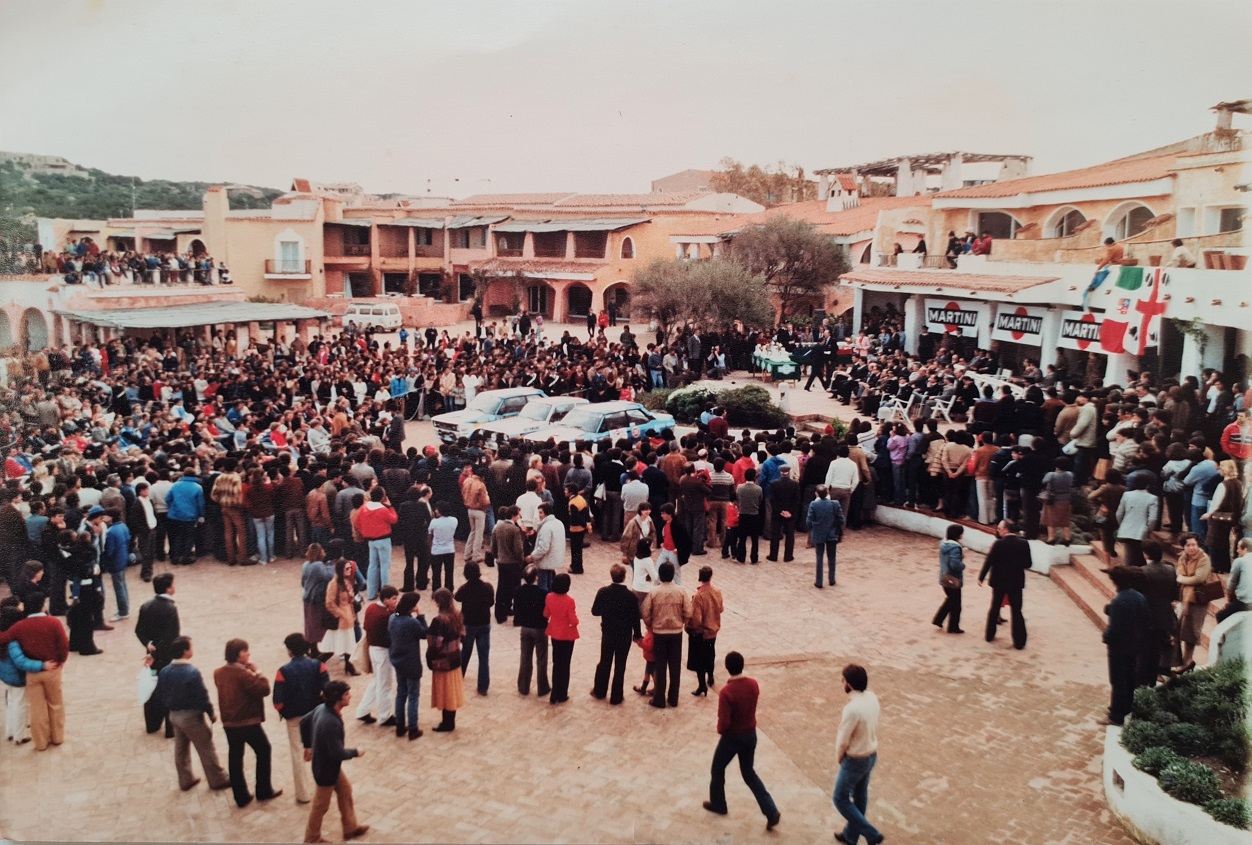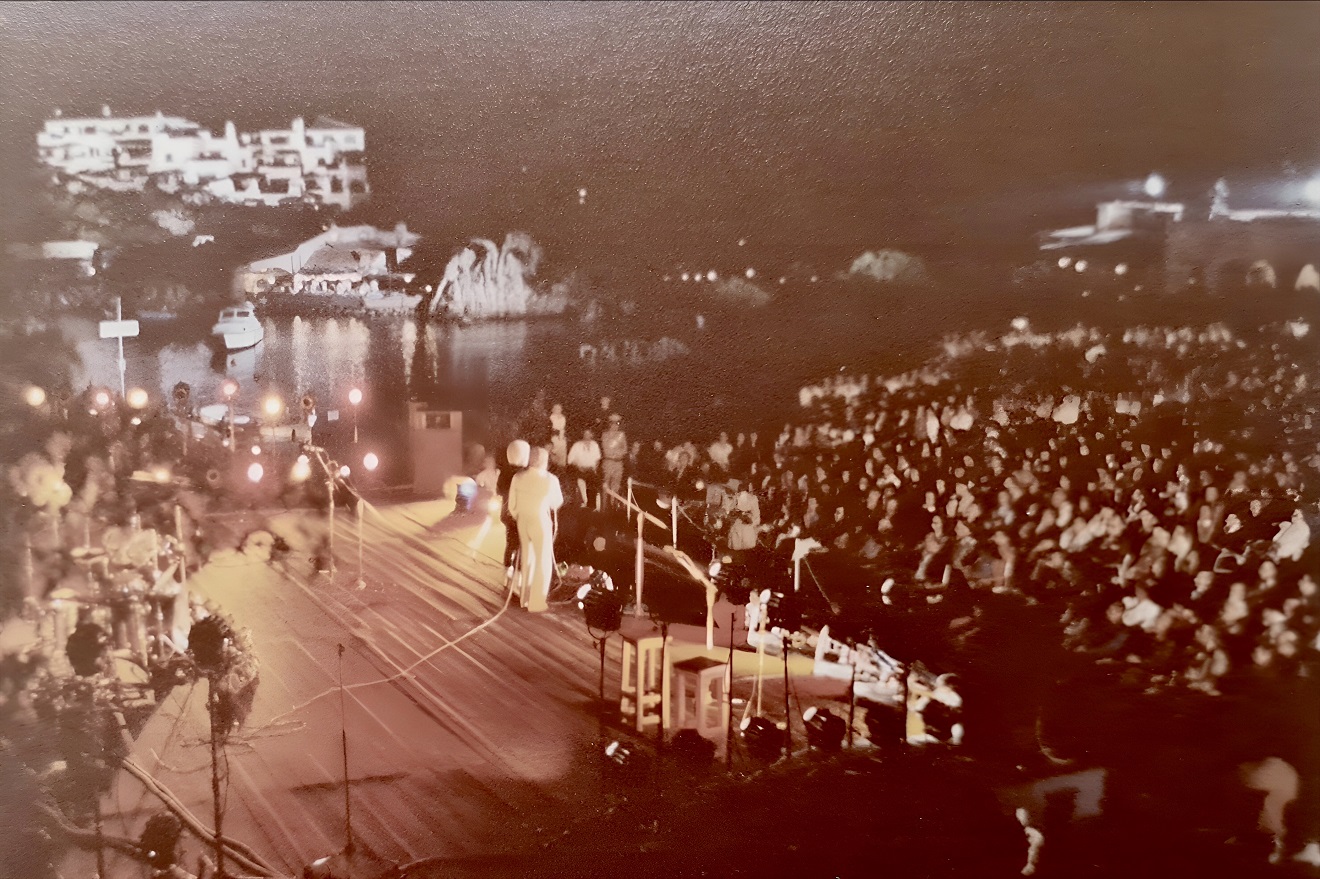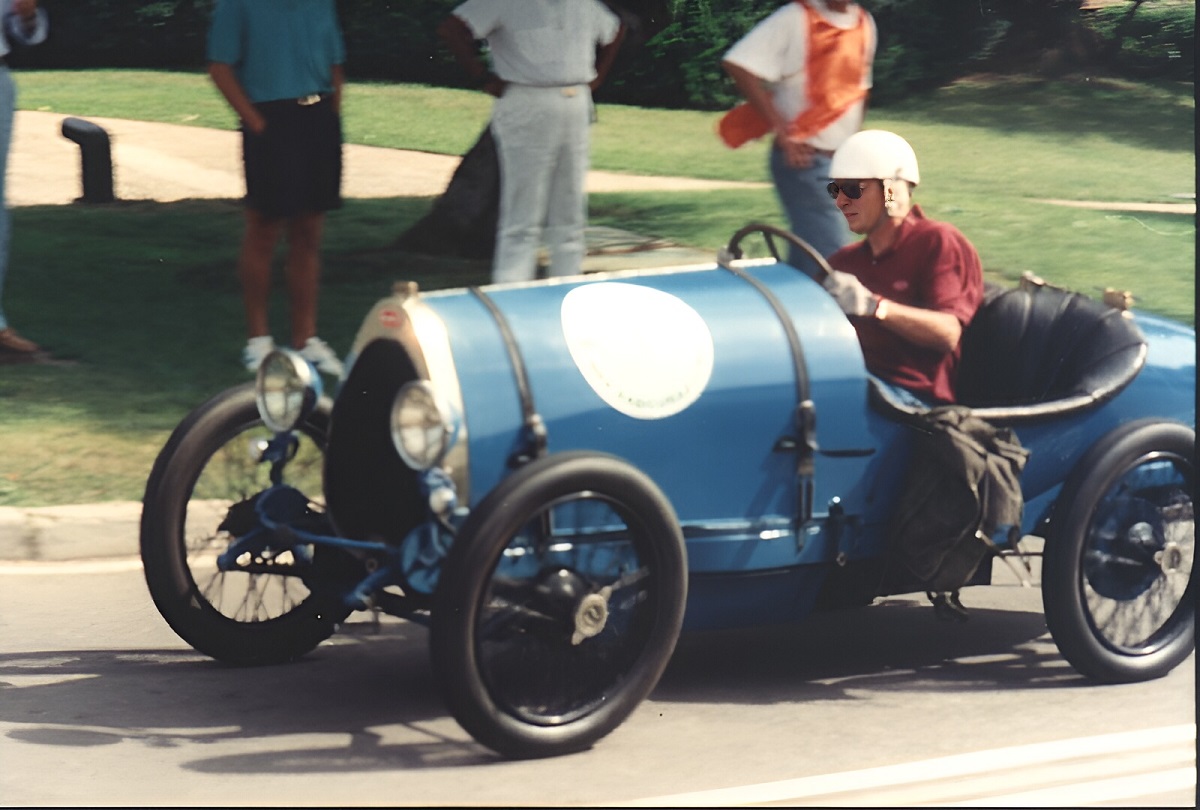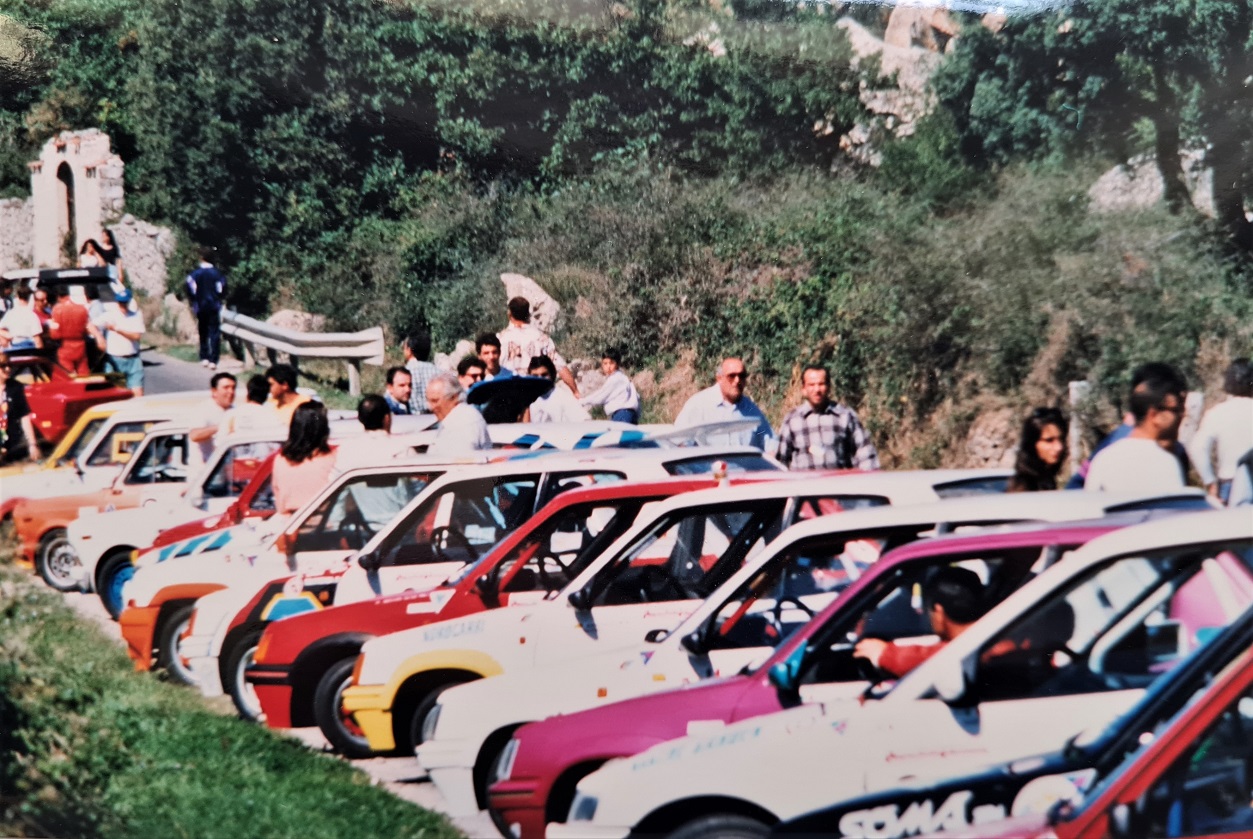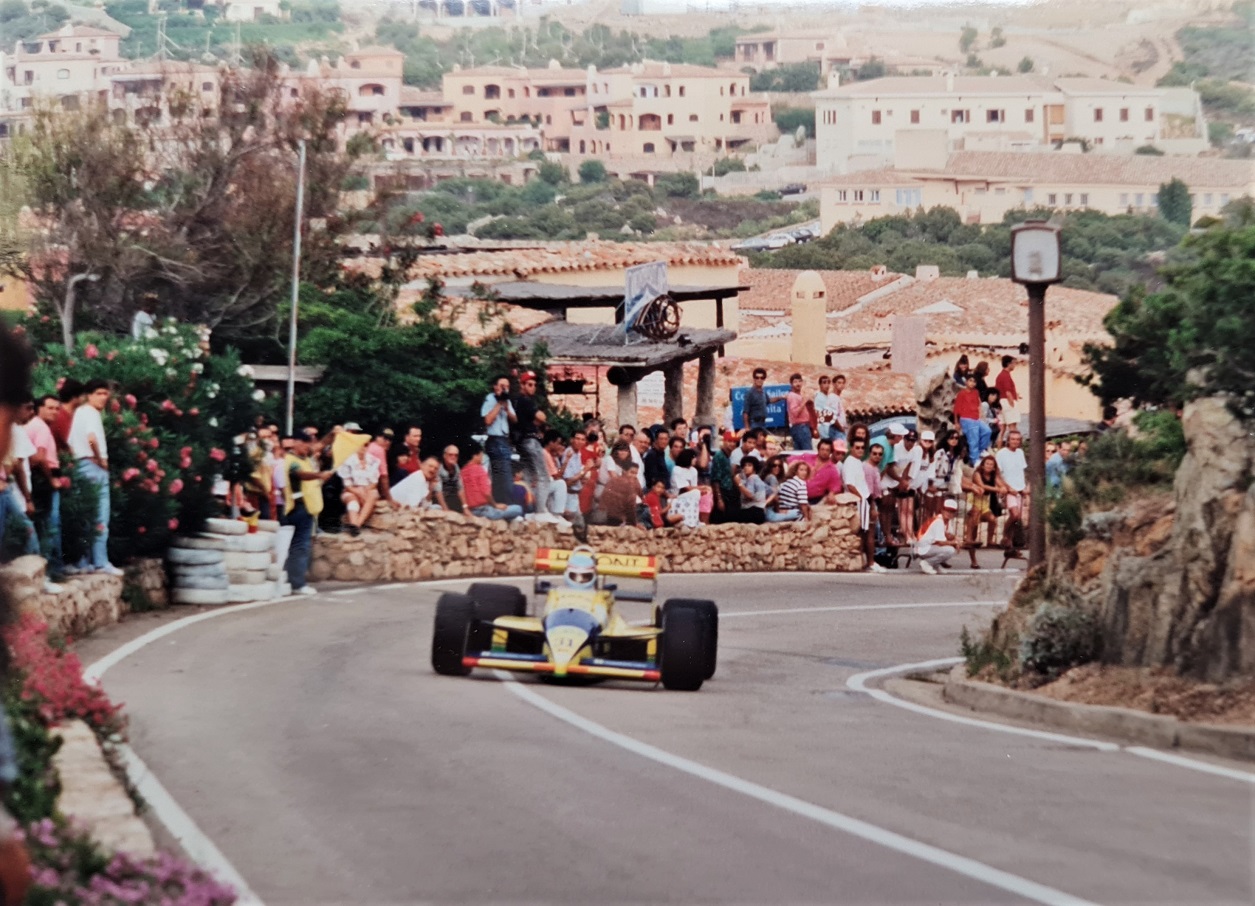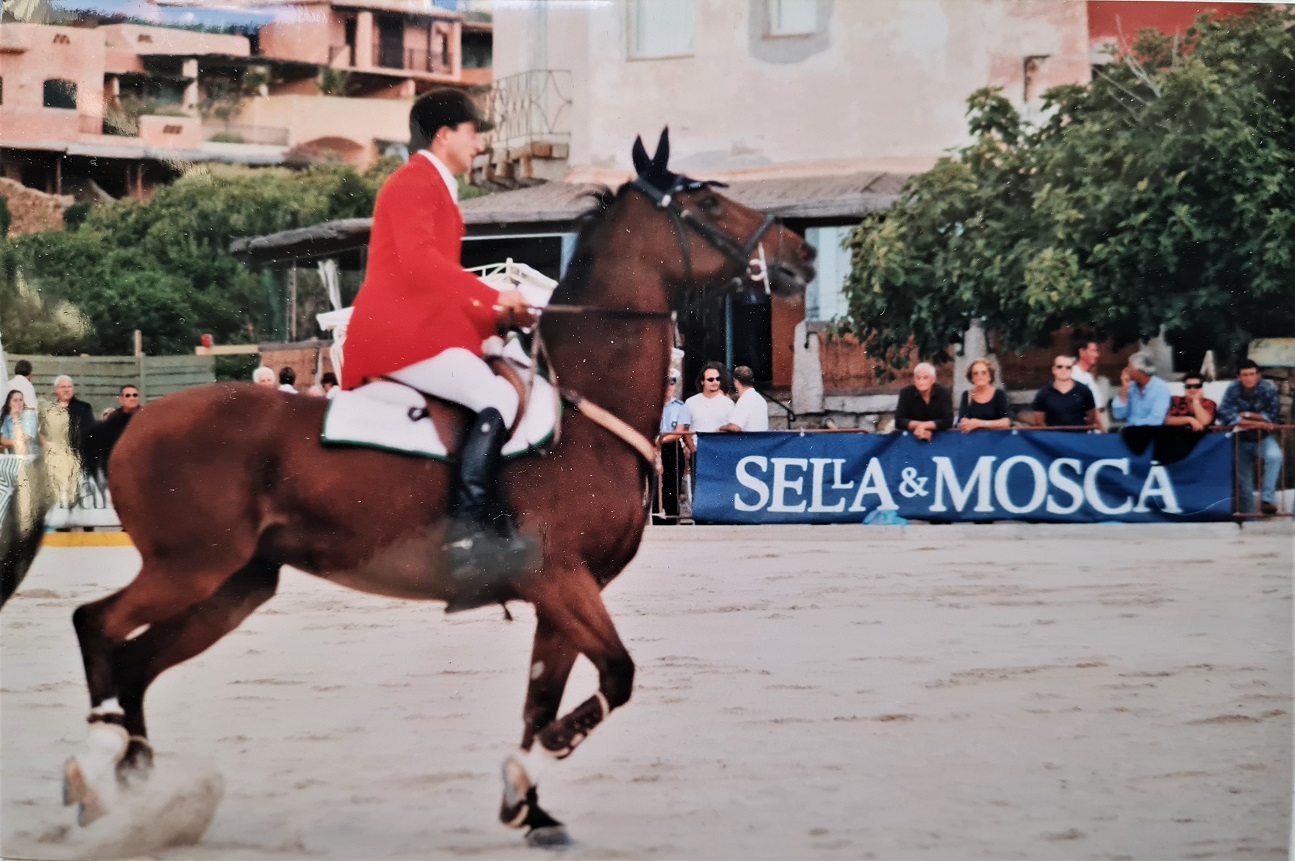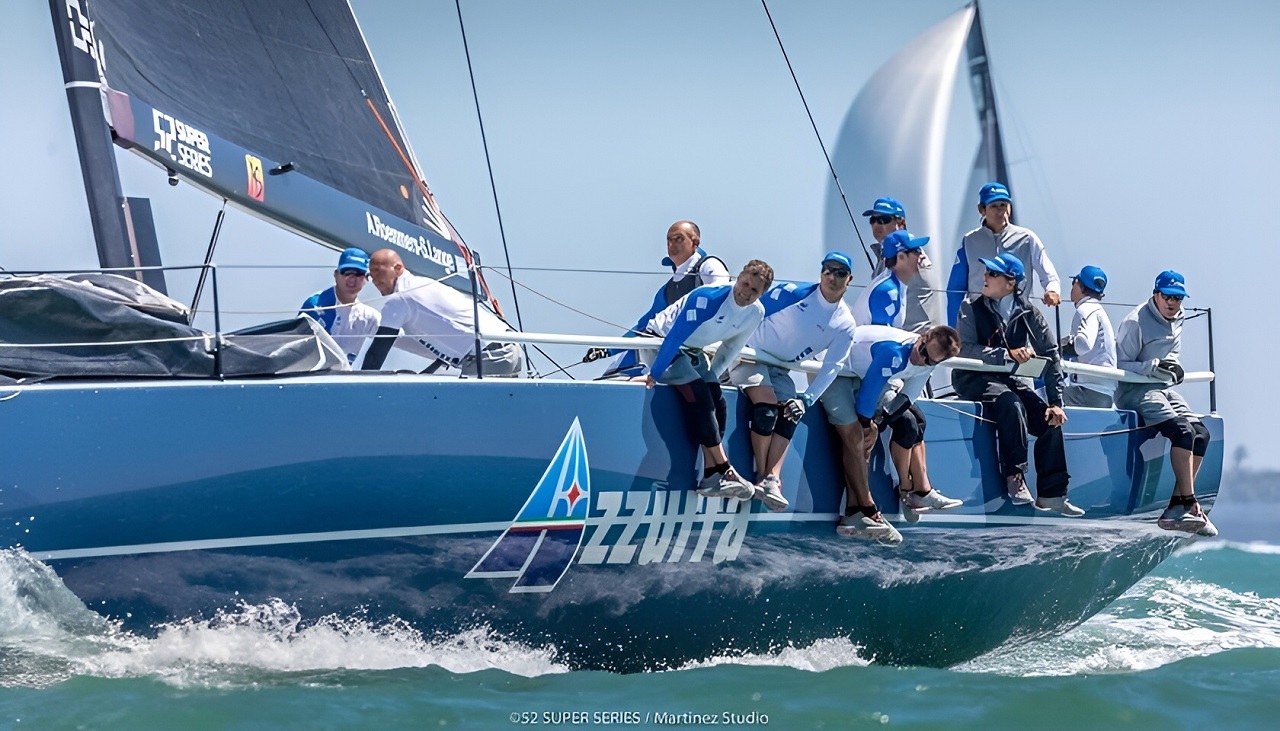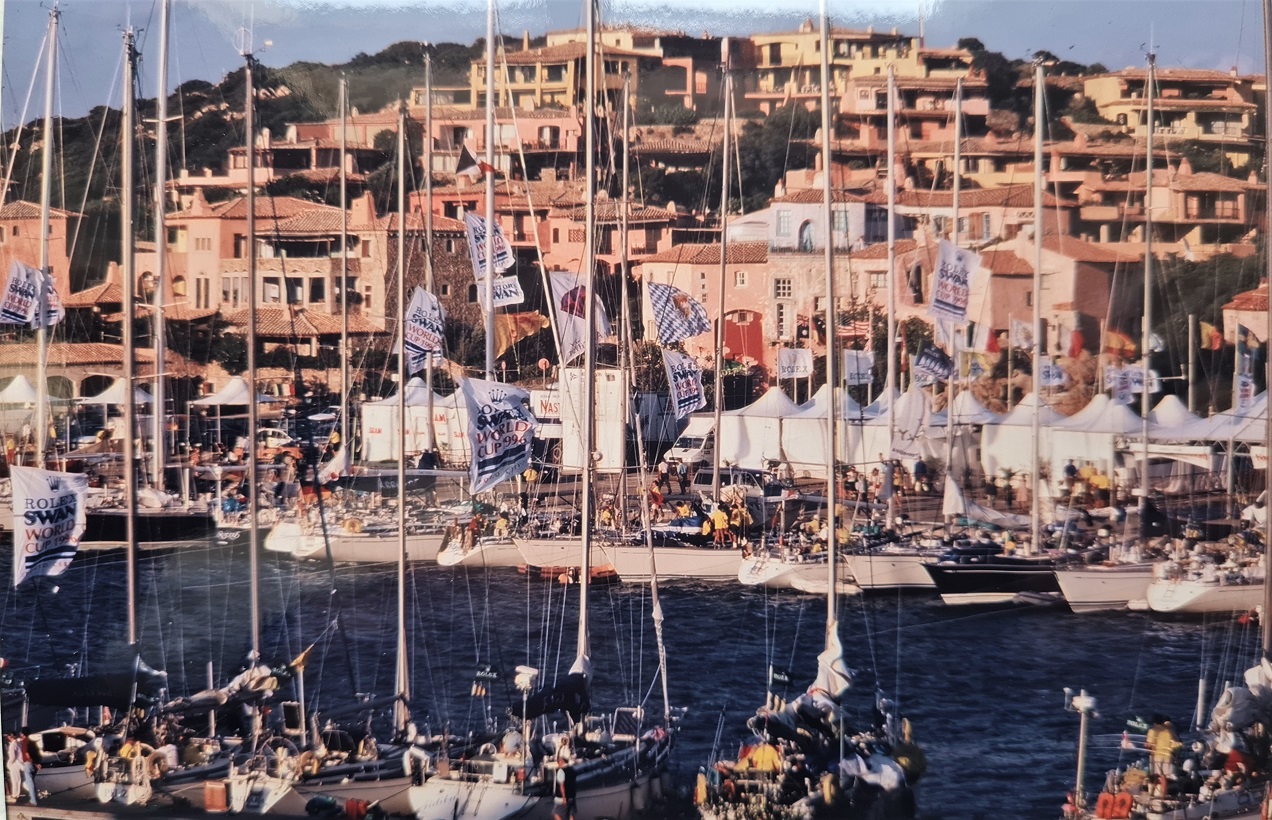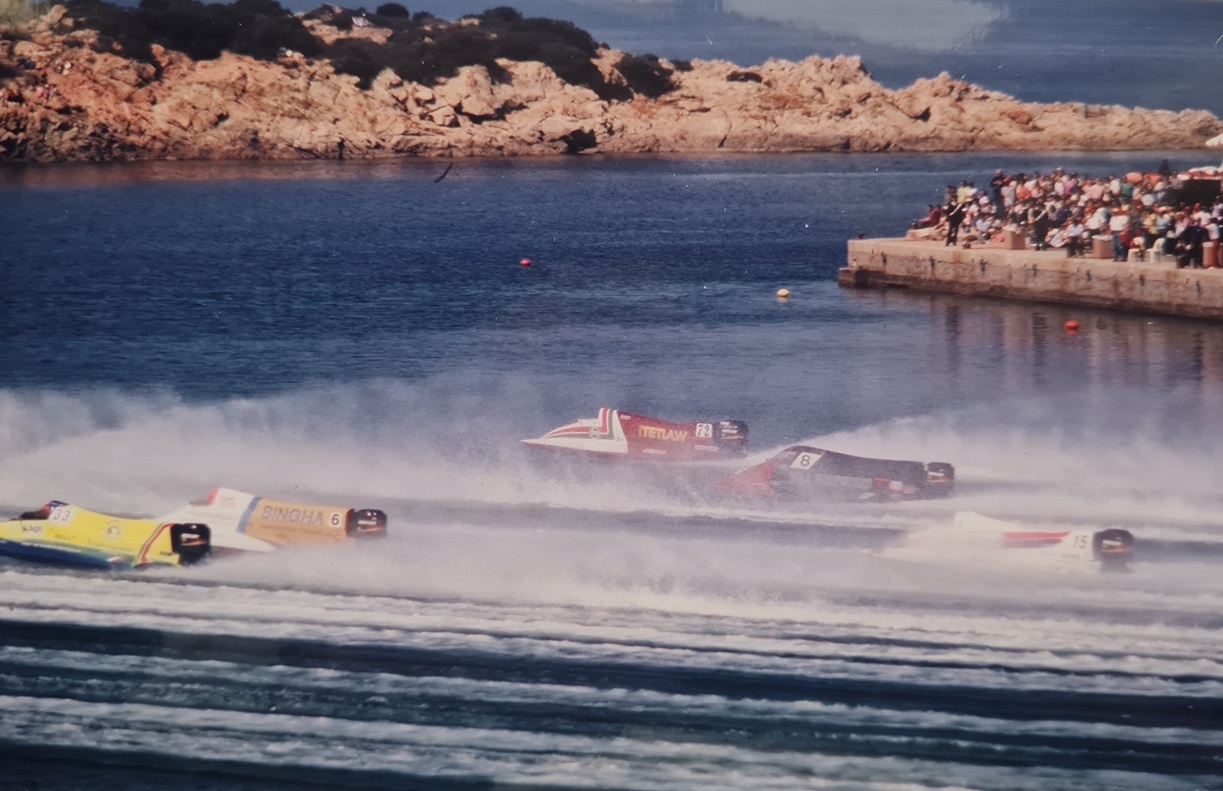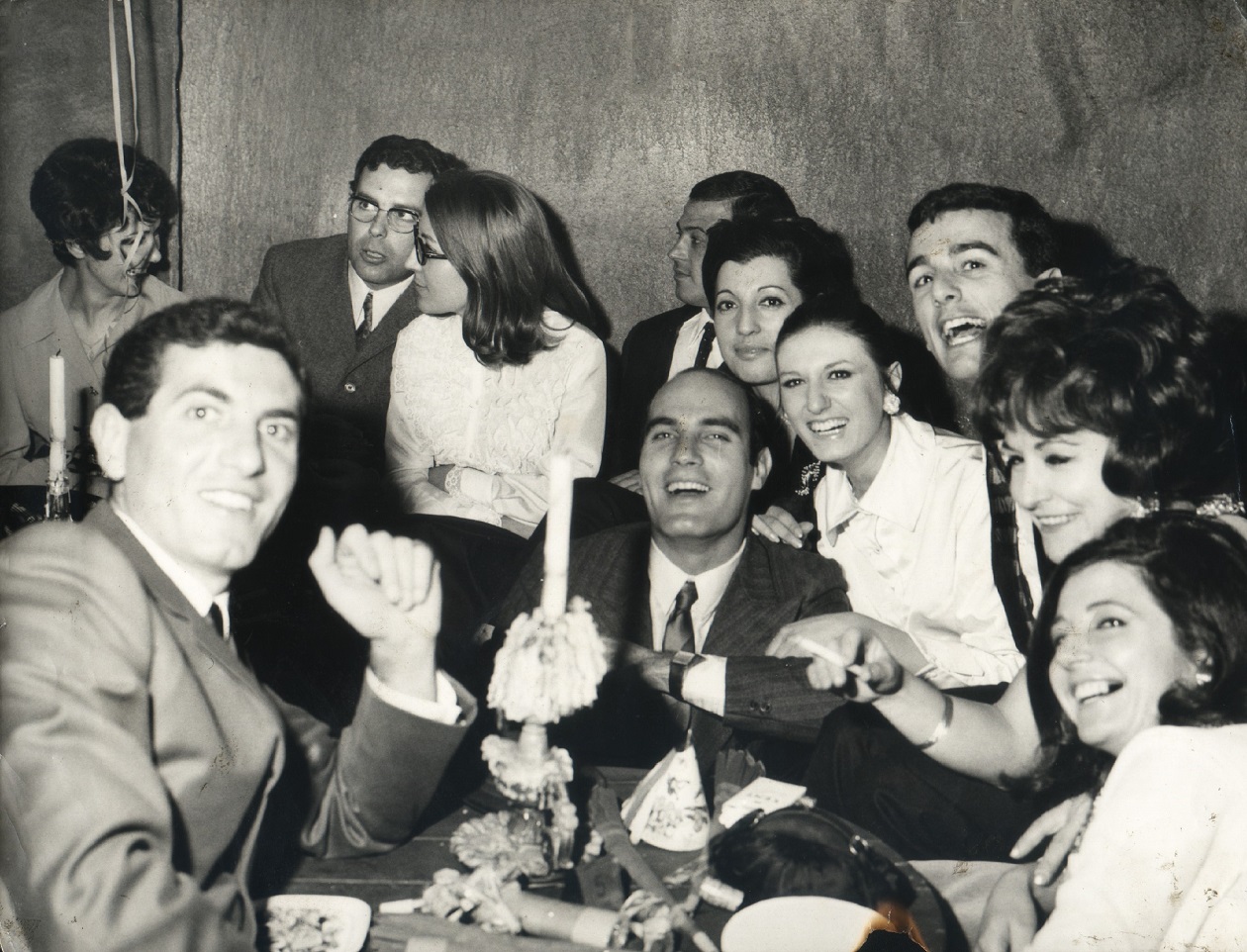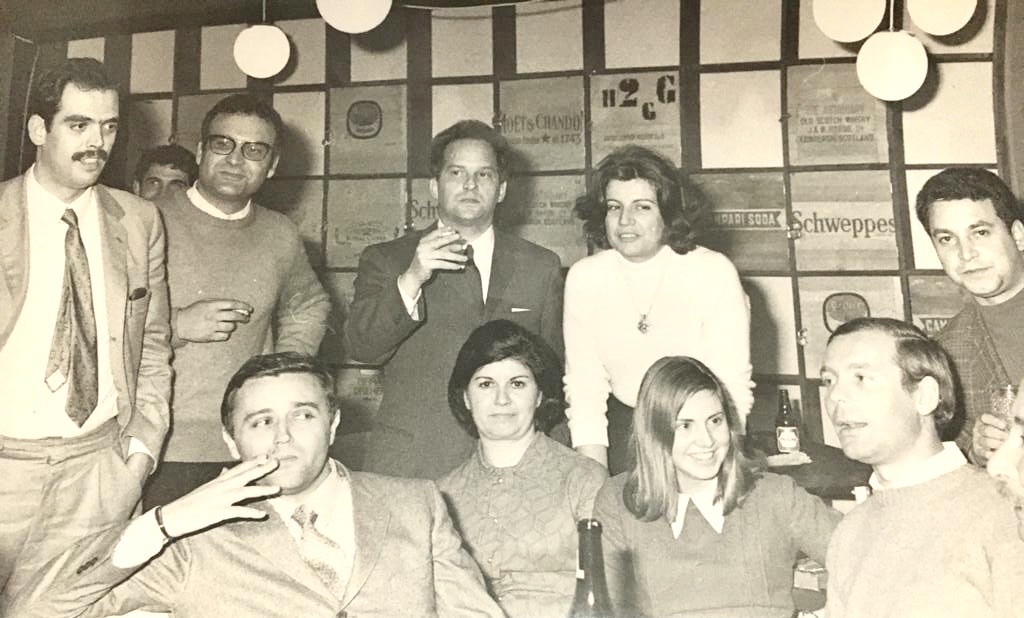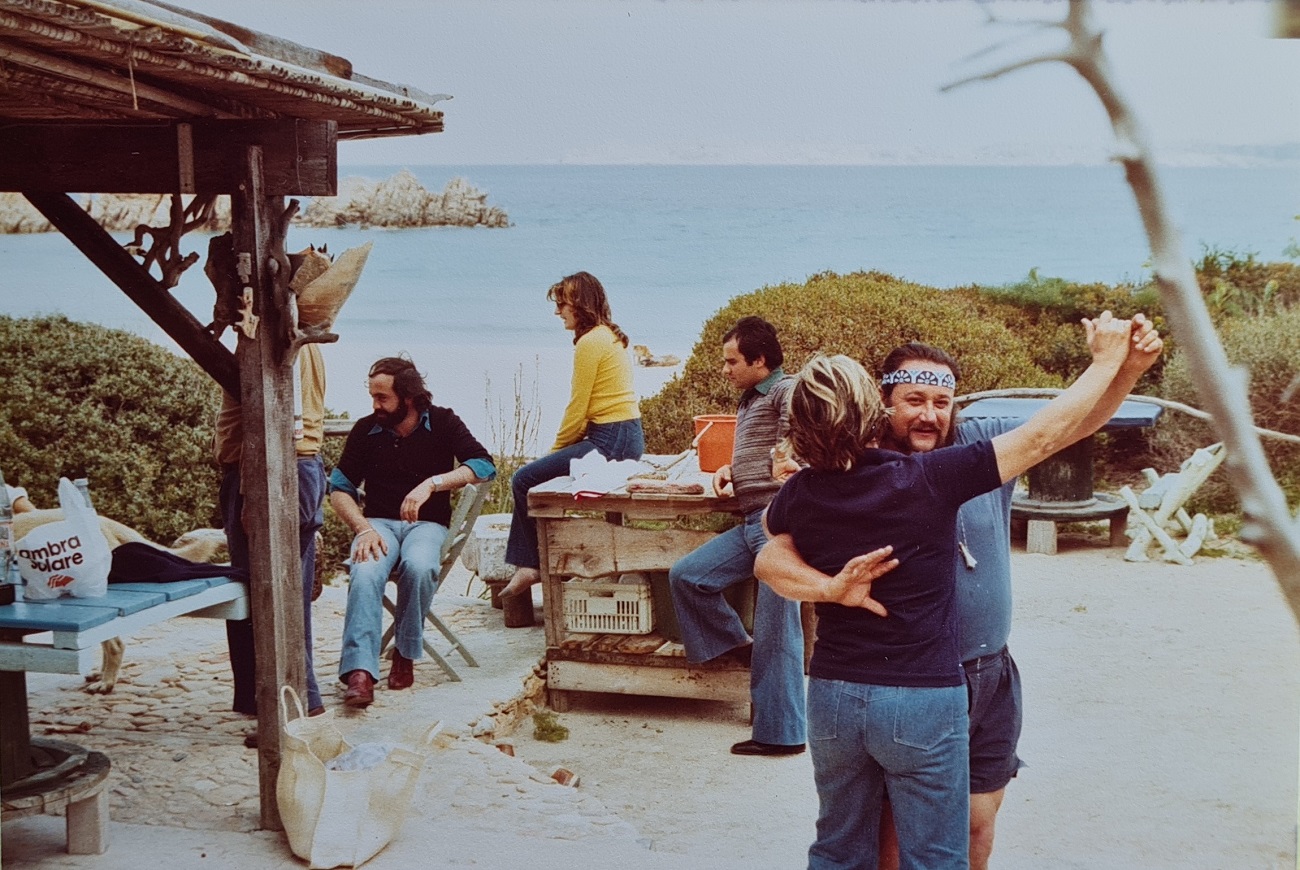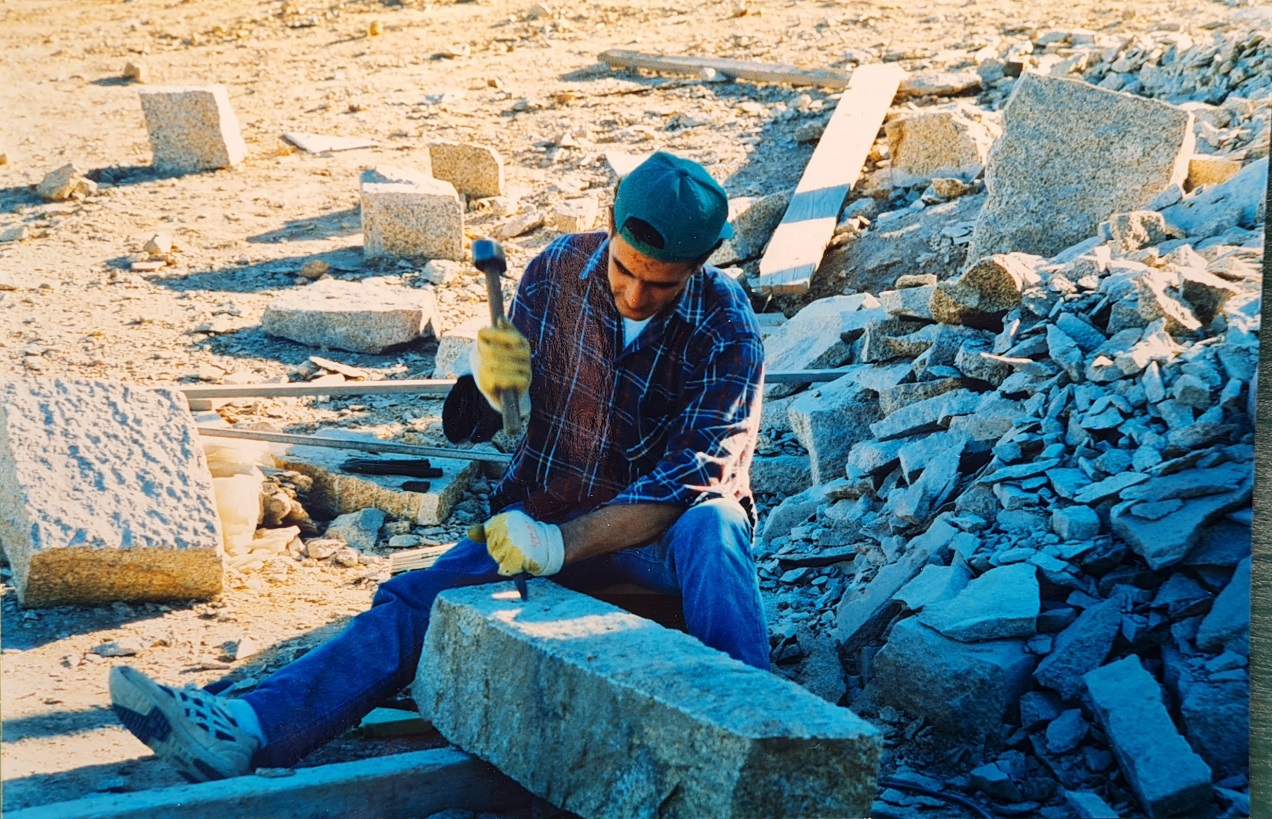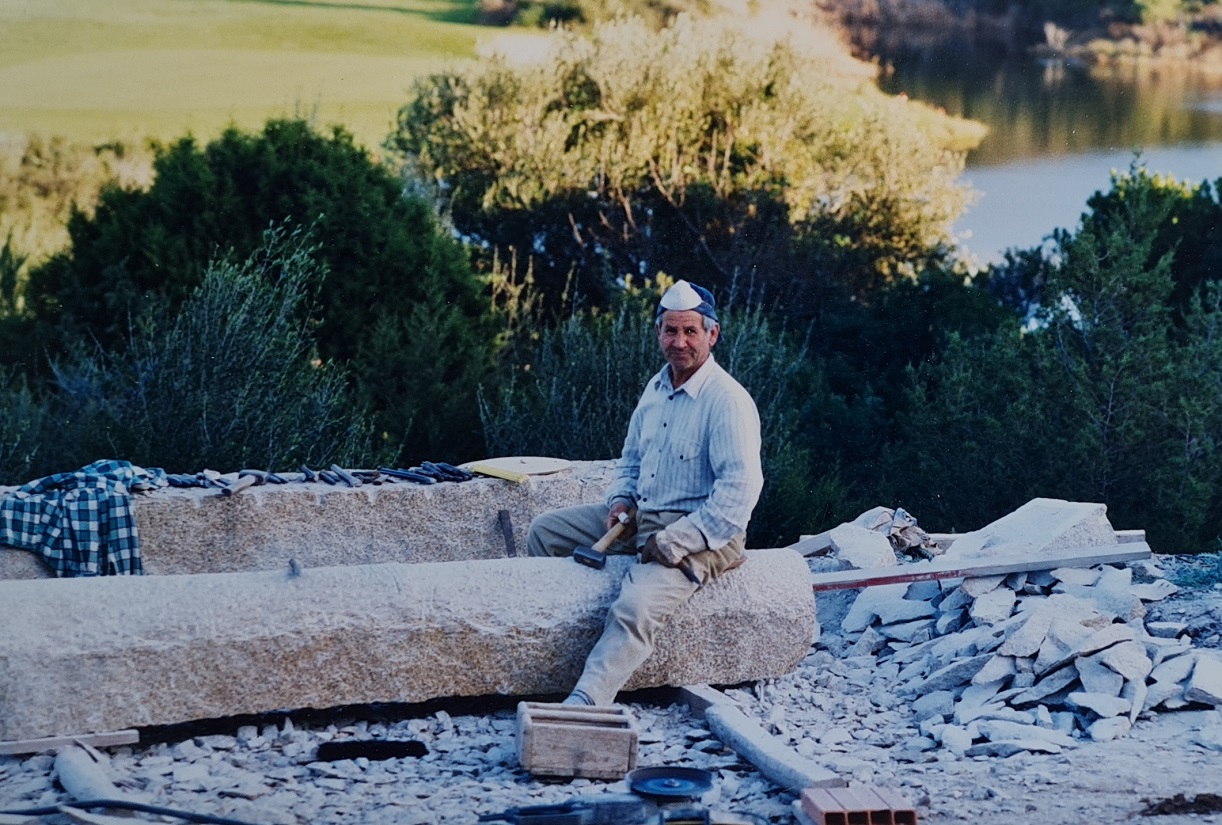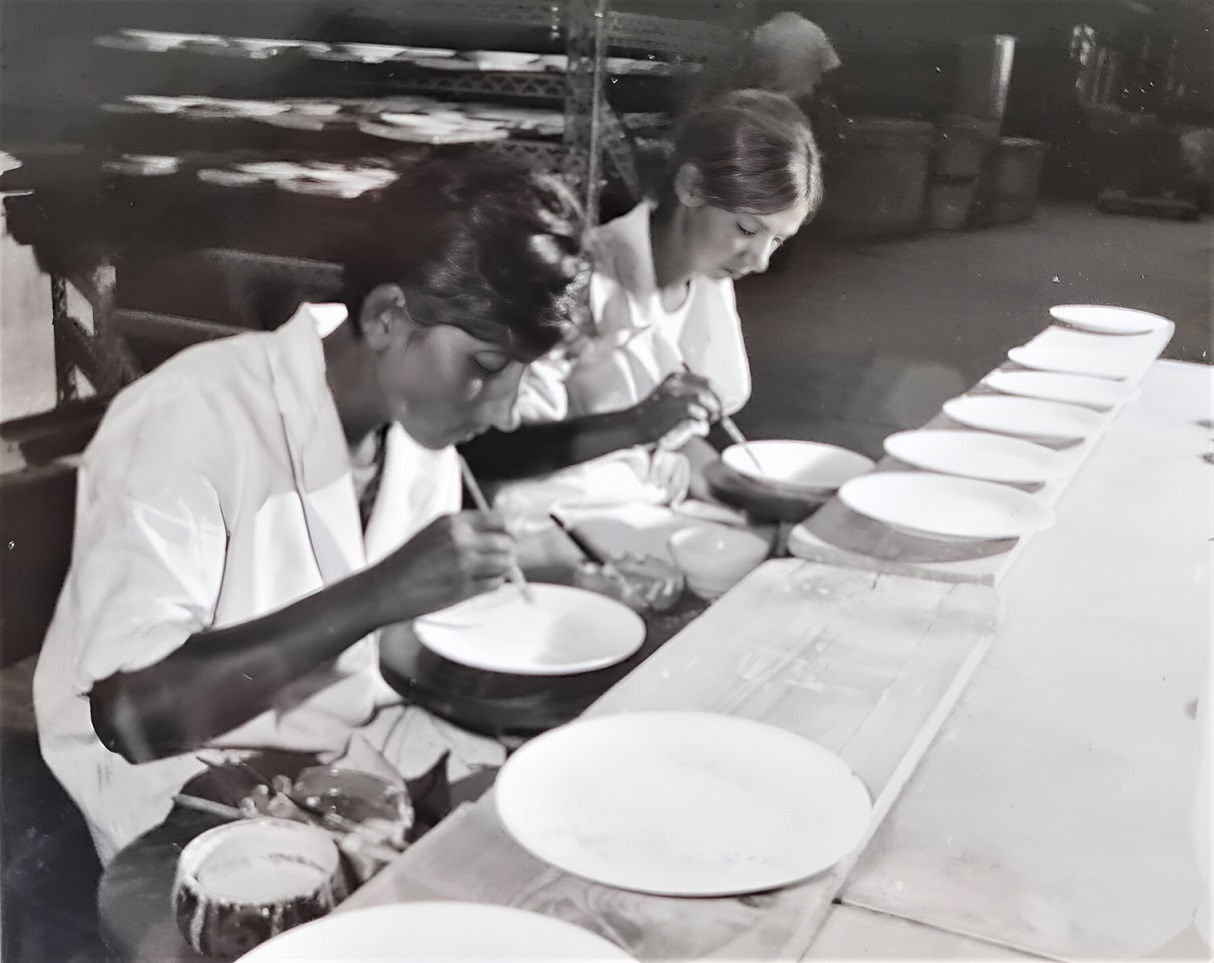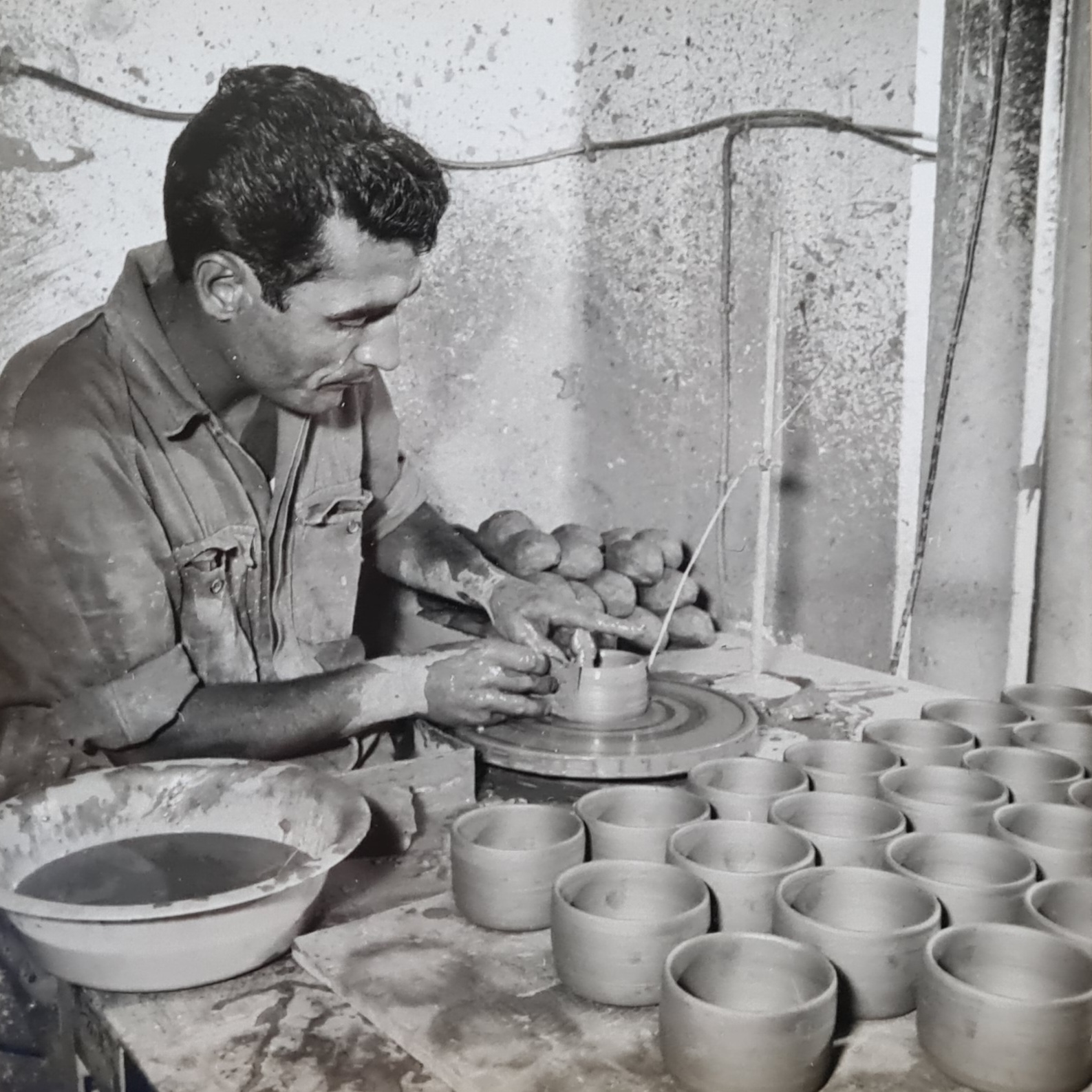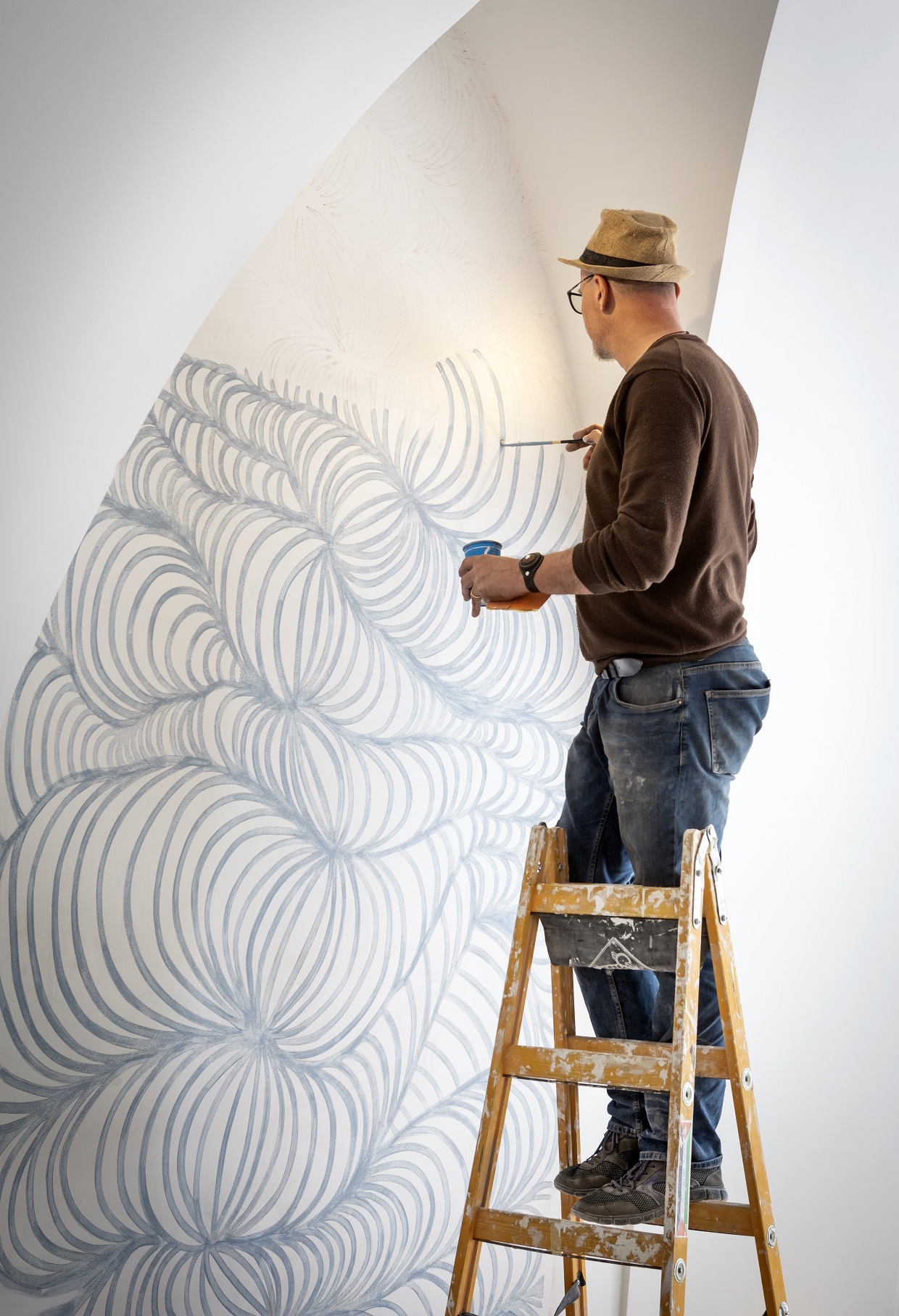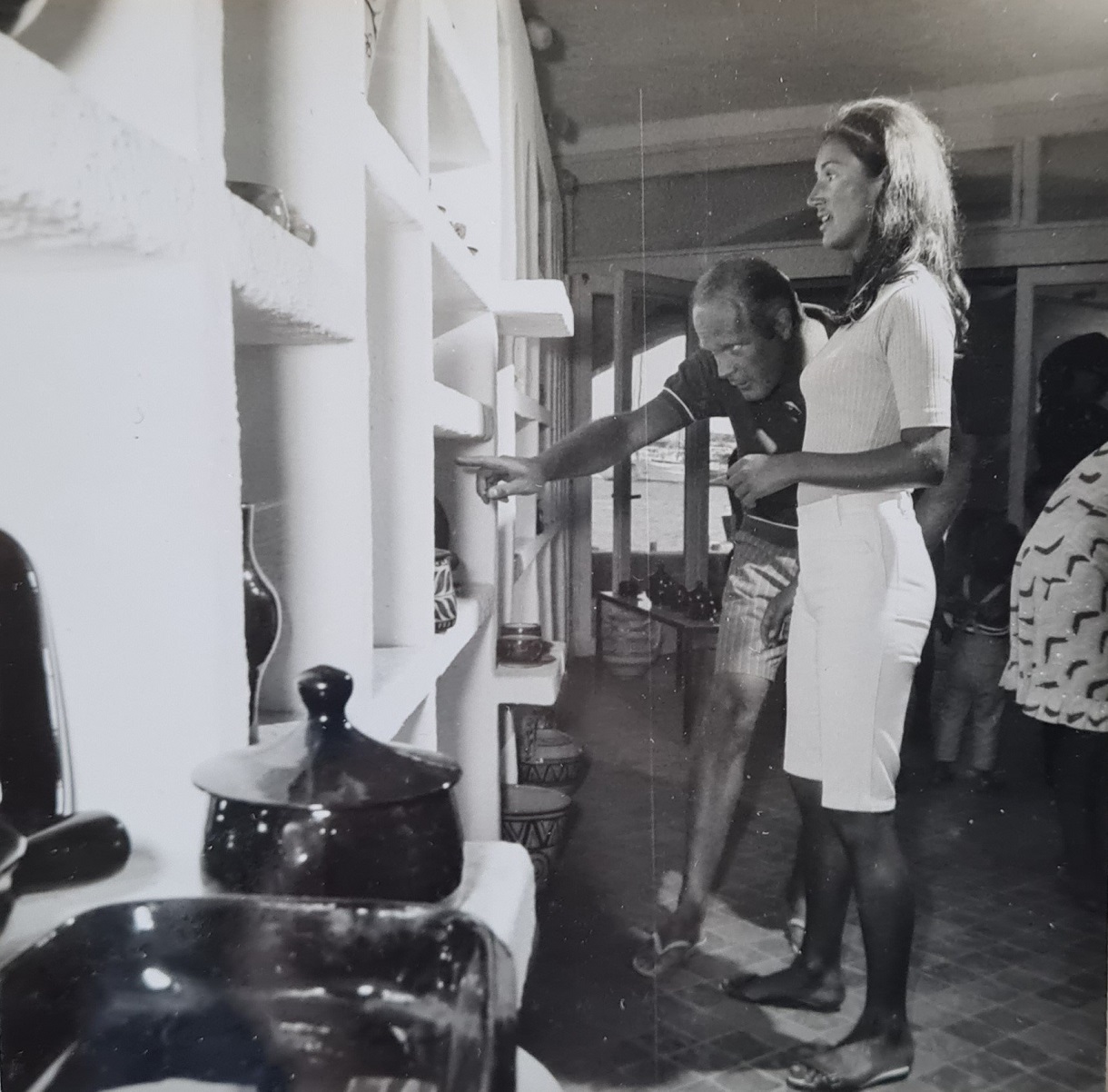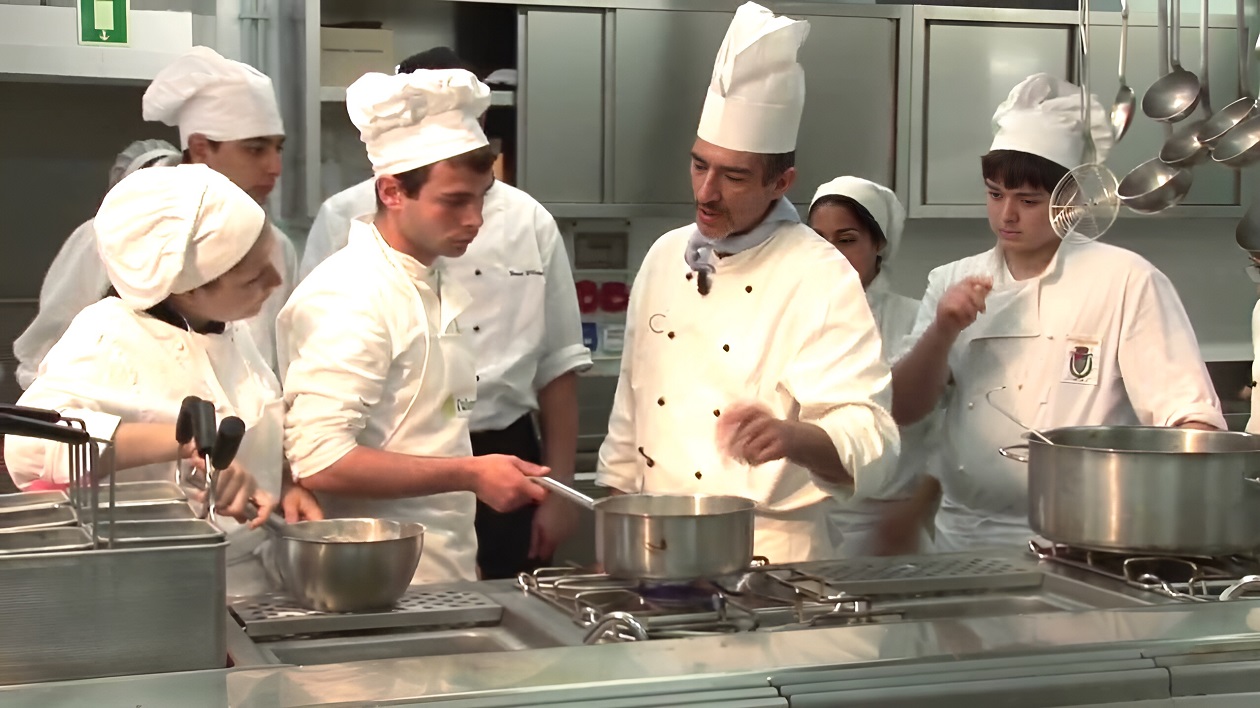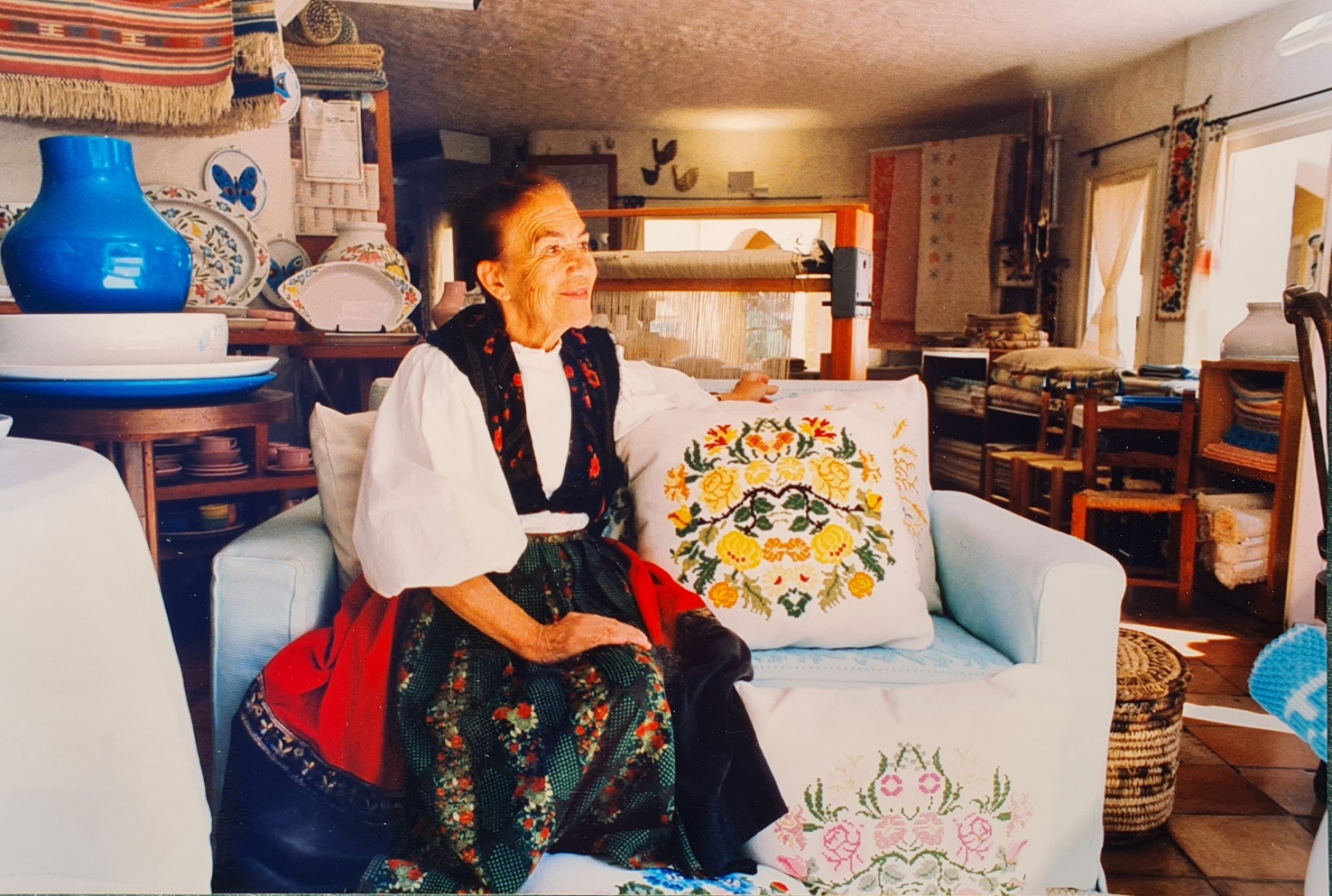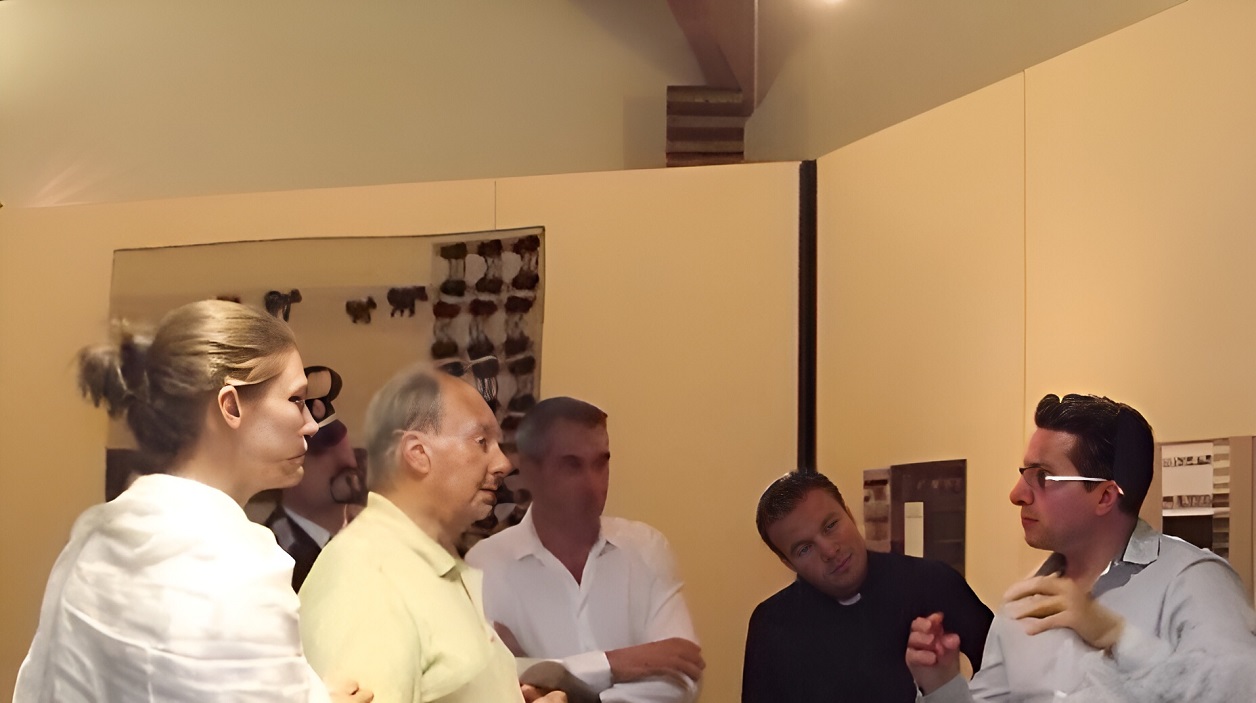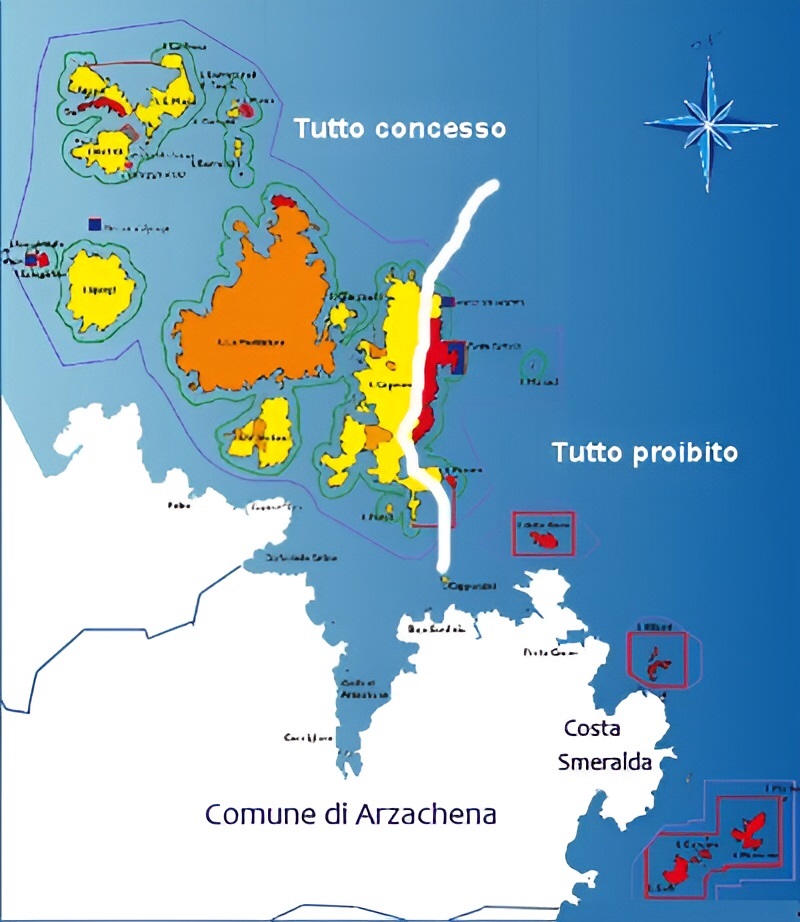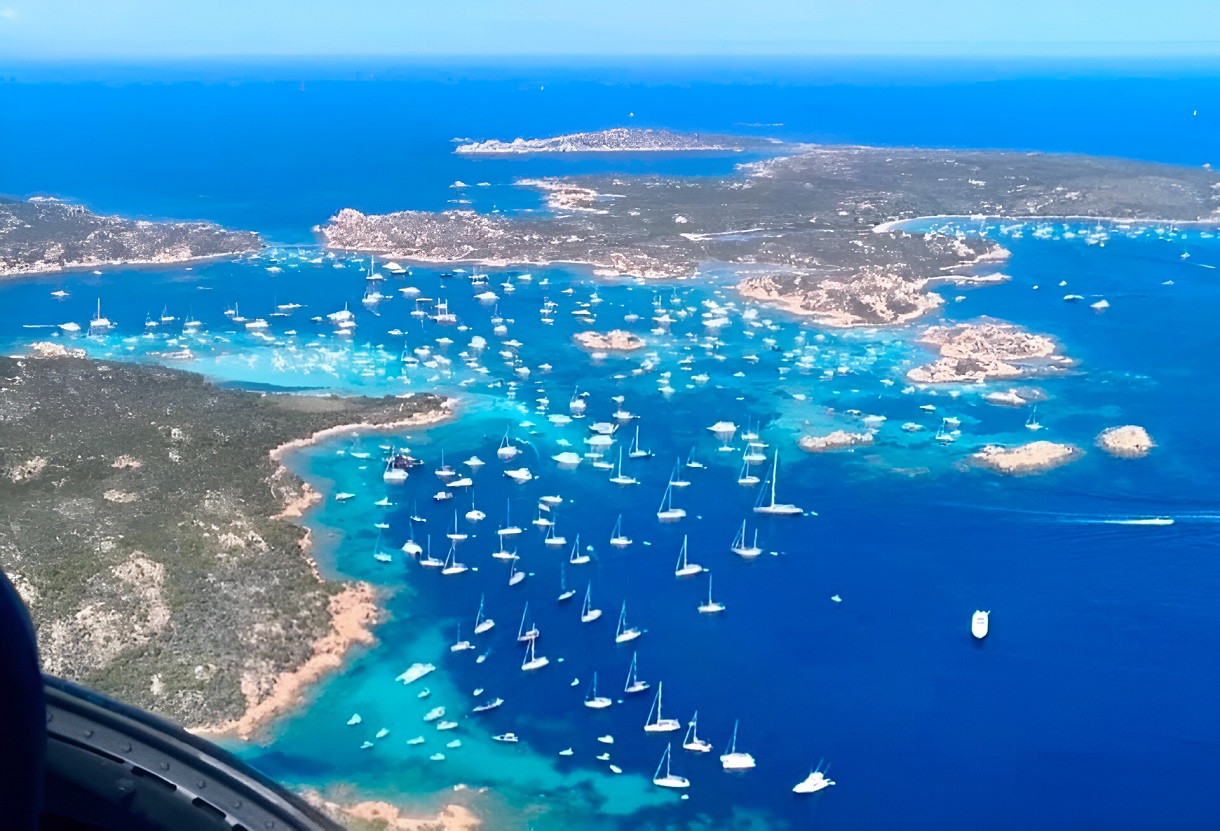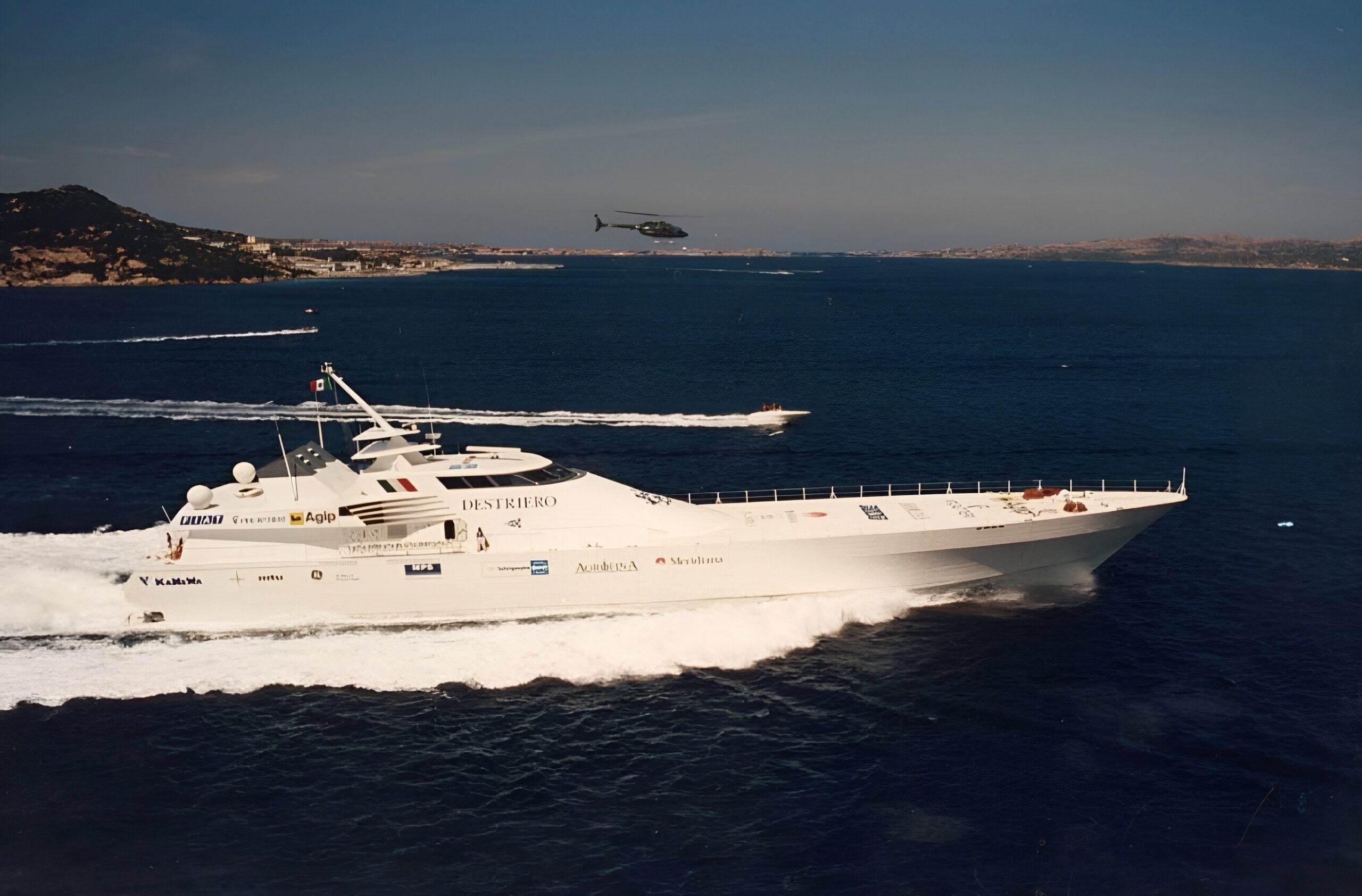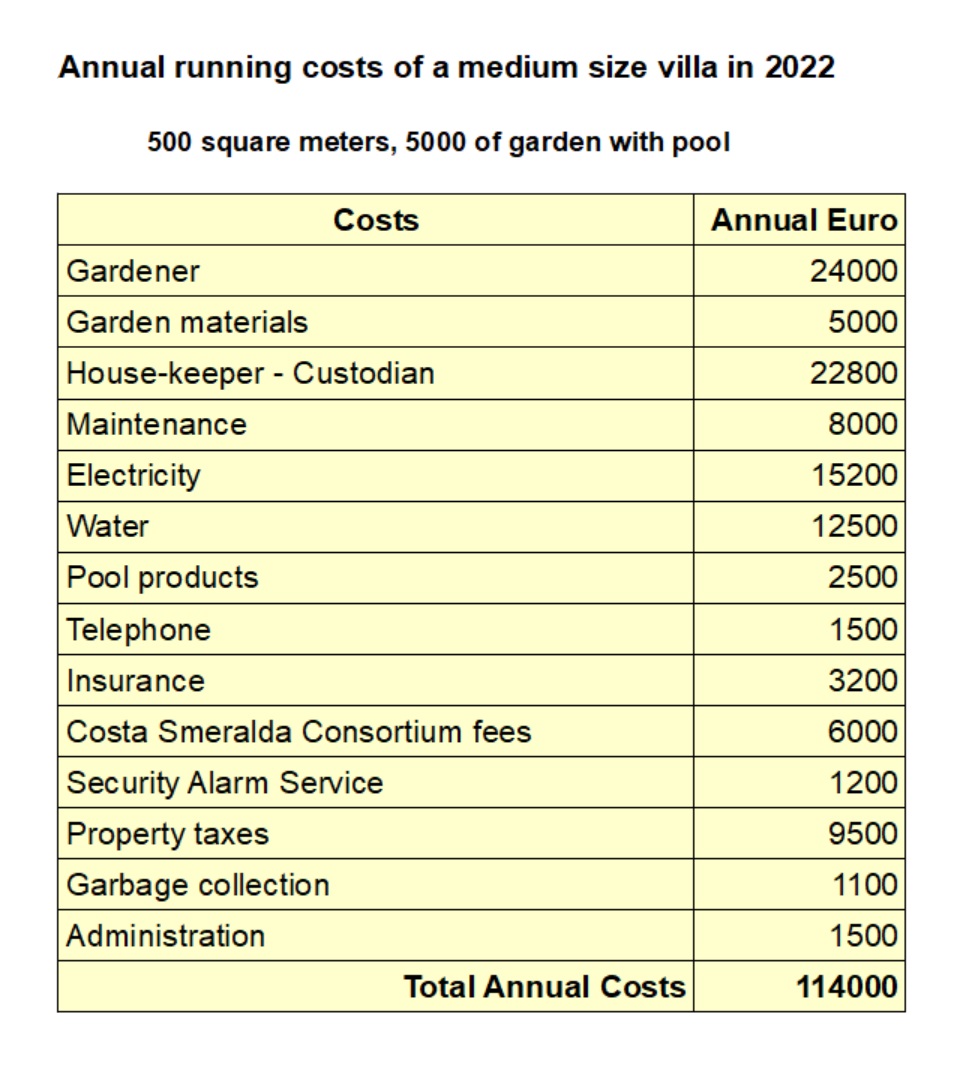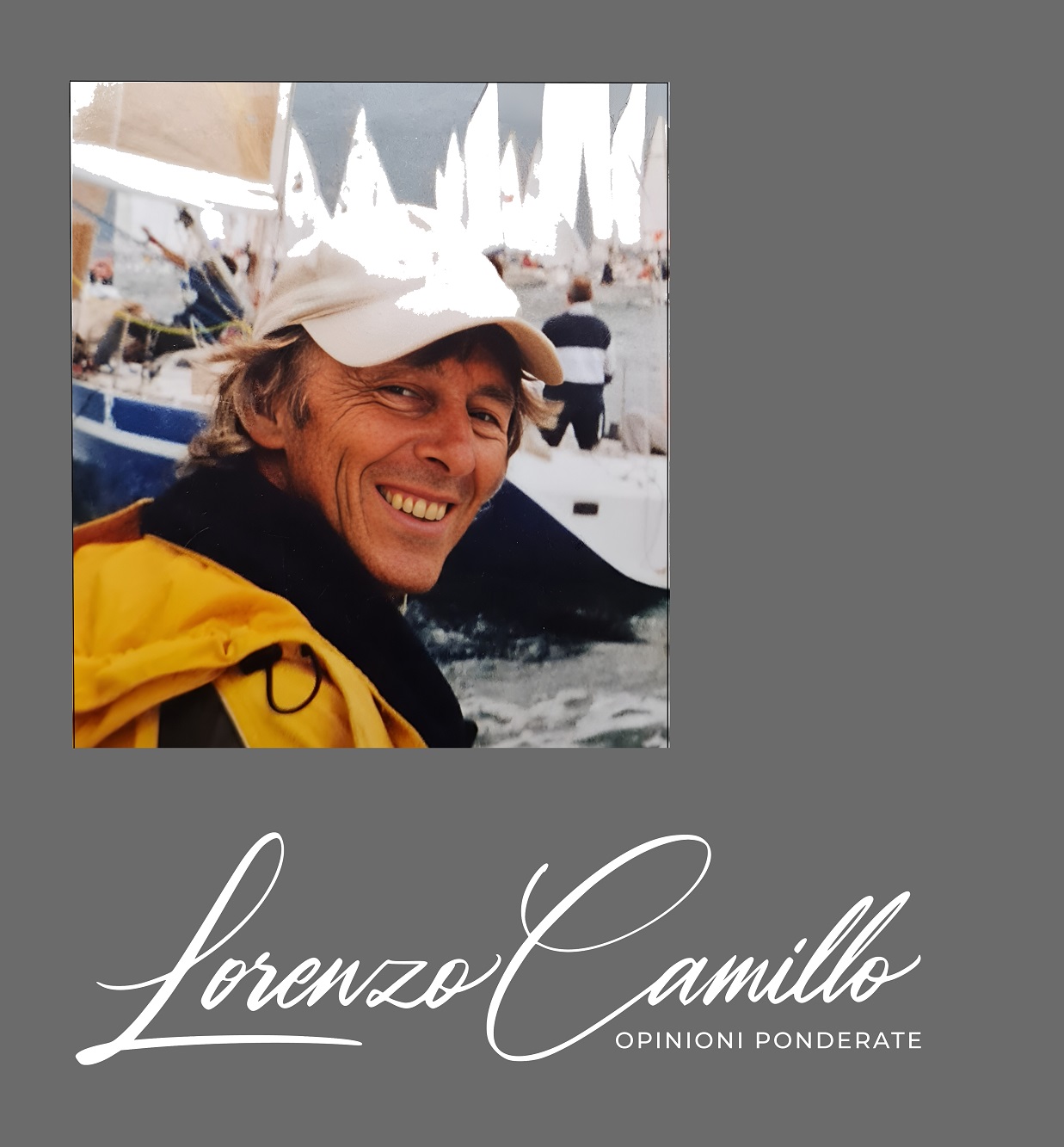THE AGA KHAN AND THE COSTA SMERALDA
My 50 years on the Costa Smeralda in Sardinia
by LORENZO CAMILLO
A young student from Australia to the Emerald Coast
In Australia, around the early 60s, a family friend originally from Santu Lussurgiu showed us a glossy magazine, the Women’s Weekly. At the time I was a young student in Australia and knew neither of the existence of the Costa Smeralda nor of Sardinia itself. The article centred on the construction of the first buildings on the Costa Smeralda and gave an account on the nascent jet set in Porto Cervo. Our friend said, “When you go to Italy, you must visit Sardinia, my homeland”. And I did.
This extraordinary island enchanted me the moment I set foot on it and has been my home for the past 50 years.
It was 1972 when I first arrived and I decided to look for a job. Some friends from Santa Teresa di Gallura suggested that I search for a position in the Costa Smeralda. Remembering the flashy photos of VIPs in the article that I had read in the magazine, I donned a shirt and a tie and set off.
By chance, I entered an office on the central square that turned out to be the Costa Smeralda Real Estate Agency. My unexpected presence created a degree of astonishment because that same day they had published an advertisement for a bilingual Italian-English lawyer to set up the Rental and Maintenance Office of the Costa Smeralda. After a couple of weeks, in December, I returned for an interview with the Aga Khan at his home in Porto Cervo, and was hired.
I started work in early January of 1973. My office was on the main Promenade, occupied now by the Bulgari shop. At the time it overlooked a large unpaved parking lot – only some years later did the extensive excavation for the garages of the Phase Two Village begin.
My first task was to draw up the renewal of the seasonal rental contracts for the shops in Porto Cervo where, on my initiative, I imposed their opening from Easter to October and so all the shops remained open throughout the season. Today, unfortunately, they more or less close after only 90 days or so. I personally took those contracts to the Registrar’s Office in Tempio Pausania, driving along that old narrow winding road through those beautiful forests to get there.
The year 1973 was also the year of the Oil Crisis and on certain days we all had to walk or cycle because driving was banned. Subsequently the Costa Smeralda faced several other crises: I remember the kidnapping season, with a dozen kidnappings in the area, plus a few failed attempts, even very close to the Aga Khan, for which we were all in constant apprehension. Then came the bush fire season that devastated large areas of the Mediterranean shrub, traces of which remain even today. There was also the contentious American NATO base at La Maddalena, with atomic submarines scurrying among the yachts.
Obviously, in those years, there were no computers, e-mail, nor mobile phones, but with my team, we managed 124 properties, villas and apartments distributed between Liscia di Vacca and Cala di Volpe. We stipulated over 200 summer rental contracts each season. Sojourns ranged from one to three months, very different from the short duration of today’s stays, which barely last seven days.
In the beginning, our villa rental clients were members of royal families, Europe’s nobility and important national and international executives. For example, I managed the beautiful seaside villa of Princess Alexandra of Kent that I rented to the Queen of Spain and to the German steel kings. Other villas went to Jasmin, the Aga Khan’s sister and I accompanied his wife, Begum Salima, to visit the villas to host her friends.
Those very first visitors to the Costa were all acquaintances of the Aga Khan or of the other four founding members of the Costa Smeralda Consortium: Patrick Guiness, half-brother of the Aga Khan, Giuseppe Mentasti (San Pellegrino Mineral Water), the banker John Duncan Miller and René Podbielski, who owned all of the Liscia di Vacca area. Tired of protocol and formalities, the great international personalities who came were happy to be able to relax in this enchanting seascape and go around barefoot and in shorts in the refined and lovely architecture that was being created.
Word soon spread and many wanted to buy a house next to these illustrious personalities. It was also proving to be an excellent investment. Thus, the Costa Smeralda grew rapidly.
Have visitors to the Costa Smeralda changed today? In the past, the very rich did not want to appear, whereas today the many non-rich very much want to appear and seem wealthy. They organise sumptuous dinners in restaurants and discos with champagne and lobster and rent Lamborghini cars and Ferraris just for the day. Then followed the politicians, football players and TV personalities etc., which says it all.
I soon found that I had joined a large, busy team engaged in building the Costa Smeralda, which actually arose from nothing. As far as infrastructure was concerned, the team created everything, day by day.
Among the staff, there was harmony, cooperation, and a sense of mission. All were dedicated to this wonderful project, and considered it an adventure. We worked hard, non-stop, but with great satisfaction in seeing the project progress daily.
At the beginning, the Costa Smeralda was little known in Italy and, indeed, abroad. We made great marketing efforts to spread news of its existence. Whenever we found some rare mention in the press, we talked about it enthusiastically and immediately sent a newspaper clipping to the Aga Khan.
THE AGA KHAN AND THE COSTA SMERALDA
In 1962, the year the Costa Smeralda Consortium was founded, the Aga Khan was only 26 years old. He invited world famous architects and urban planners to design a tourist village well integrated into the environment, and with the utmost respect for nature.
In the historic interview of the Aga Khan in 1967, he said, “What I want to do is avoid transforming this into a purely business project, where one tries to get as much profit as possible”. In addition, he says, “We want to engage the island’s traditions as much as possible…. Sardinia has a rich folklore: art, customs, traditional costumes and we want to assimilate everything we can of what is of Sardinian origin….”
The time and effort that the Aga Khan dedicated to the creation of the Costa Smeralda testifies to his passion for this project and his love for Sardinia. He promoted Sardinian culture and art in the buildings, imposing specially designed Sardinian fabrics and furnishings. Still today, you can admire two precious Sardinian chests on display at the entrance of the Hotel Cervo. He even furnished in this way his personal villas at Le Cerbiatte in Porto Cervo.
What better ambassador to promote the exquisite Sardinian artisanship!
If we had not had this enlightened leader, today we probably would have a Porto Cervo like this photomontage of mine. In those years, without any rules, companies could build skyscrapers on the seafront, but this was not what the Aga Khan wanted. He aimed, rather, to have low houses well integrated into the natural landscape.
The infrastructure
Initially this area of Arzachena lacked paved roads, aqueducts, sewers, purifiers, electricity, telephone, etc. The 3300 hectares of land was without any infrastructure. For this reason, twelve companies were set up to create the necessary works and services:
Stradasarda: road construction;
STEGCS (General Technical Services Costa Smeralda): aqueducts, purifiers, project design and management etc.;
Biancasarda: hotel linen service;
Cerasarda: ceramics and tiles with the traditional hand-painted designs of Sardinian artisanship;
Marinasarda: rental of boats to take hotel clients to the nearby islands;
Alimentariasarda: management of food supplies;
Agrisarda: plants for gardens and flowerbeds;
Porto Cervo Spa: construction of the Porto Vecchio port and subsequently Porto Cervo Marina and the Naval Shipyard;
Alisarda airline (which later became Meridiana): construction of a new airport connecting Olbia and then Sardinia with many world destinations. Previously, only the dirt runway of Venafiorita and a ferry service to Civitavecchia connected the mainland;
Porto Cervo Joinery: located on the hill of Porto Cervo;
Costa Smeralda Hotels: management of the three hotels – Hotel Cervo, Cala di Volpe and Hotel Pitrizza. The Rank Organisation built the Romazzino Hotel. One of its owners was Angus Ogilvy, the husband of Princess Alexandra of Kent, who soon sold the hotel to the Aga Khan, which is now part of the Group;
And finally, the Costa Smeralda Real Estate Agency: construction of villas for the sales and rentals markets, as well as the Costa Smeralda Consortium together with the various Etablissement, which were the foreign companies that owned the land.
The Consorzio Costa Smeralda
For the most part, the lawyer Paolo Riccardi of Sassari, president of the aforementioned companies and General Secretary of the Costa Smeralda Consortium, carried out and supervised the organisation and management of these companies. Considering the well-known bureaucratic and political difficulties of Italy, and in particular of Sardinia, obtaining the necessary approvals for the large infrastructural works, was an enormous task.
Initially there was a lot of resistance from some of the regional politicians in that period when the tourism industry was just beginning in Sardinia. They favoured industrial complexes such as the petroleum refineries of Saras, Sarroch, Portoscuso and Porto Torres, as at election time, they could easily influence the unionised workers.
The stroke of genius of this project lies in the Constitution Act of the Costa Smeralda Consortium together with its Building Regulations, with strict rules that ensure an impeccable management throughout the area. It functions like a Super Condominium and has been studied and copied around the world in other large tourist-real estate resorts.
Membership of the Consortium is mandatory for anyone who buys an apartment, a villa or land. For example, in order to assess the impact on the environment, the rules of the Consortium specify that unless a building’s outline is first placed on site indicating its size and shape, it cannot be approved. The Aga Khan himself, together with the Architecture Committee, checked whether the project was ready for approval or required modification.
But who is the Aga Khan?
He is a direct descendant of the prophet Mohammed, and is the spiritual head of a moderate branch of Islam, counting about 20 million Ismaili subjects. The faithful are scattered throughout the world in Afghanistan, India, Africa, Portugal, Canada, the Middle East and Asia. His followers venerate him more than others venerate a pope, as if he were a demi-god on earth. In addition to being a religious leader, he is also an adviser on the earthly problems of his faithful.
He is a great philanthropist and benefactor, a tireless worker, a centralizer, and a perfectionist even wanting to check every minor detail of every brochure. At the time, they said he was the founder of 400 hospitals, of schools, universities, hotels, etc., therefore a busy man with a thousand daily commitments. He is also an important horse breeder with stables in France and in Ireland.
For his marriage in 1969 to the beautiful English Sarah Croker Poole, who later took the name of Begum Salima, the employees of the Costa Smeralda during the reception lunch at the Hotel Cervo offered by the Aga Khan, gave the couple a precious Sardinian tapestry.
AKDN
His foundation, the Aga Khan Development Network, today spends a billion dollars a year on non-profit operations, to improve the living conditions of marginalized communities, regardless of religion, ethnicity, and gender, providing them with “the fishing rod, not the fish” so that they can then become independent and autonomous.
I venture to suggest that the young Aga Khan’s experience in Sardinia implementing the construction of first-rate infrastructure, which brought many benefits and economic well-being to all of Sardinia, strengthened his determination to continue his philanthropic work in the world, though now at very different levels.
Board Meetings
Despite all these commitments, the Aga Khan remained on the Costa Smeralda throughout the summer period and then came every month for a whole week, except in November, which he dedicated to religious retreats with his people.
In that intense week in Sardinia, he presided over the Board Meetings with the managers of the various companies in the conference room of the Tennis Club in Porto Cervo. The sessions began at 7.00 in the morning. He lunched with a sandwich and cappuccino then back to work. Initially the Board held its meetings in French, but gradually English took over.
The Aga Khan’s loyal man, Felix Bigio, a strict accountant, and the lawyer Maitre André Ardoin, consultant and partner of the Aga Khan and real estate developer of the Pantogia and Acquamarina condominium at Piccolo Pevero, constantly attended all meetings.
Amongst executives when we spoke of the Aga Khan, we would say “HH”, an abbreviation of “His Highness”, whereas when speaking directly with him, we used a respectful “Your Highness”, or in Italian, “Altezza”, respecting the title Queen Elizabeth bequeathed him in 1957.
Meetings Interior designers and architects
The Aga Khan chose three leading architects to design the buildings for his grand project: Michele Busiri Vici, Luigi Vietti, and Jacques Couelle. Each merged his personal experience and style with the characteristic island architecture of the “stazzi”, the Sardinian farmhouses, and the typical Mediterranean architecture, producing a new style that adapted well to the Sardinian landscape.
The early villas and the Sa Conca complex, display the unmistakeable style of Michele Busiri Vici, were initially very close to the style of the Sardinian stazzo. He later inserted details recalling the romantic Greek-Tunisian styles.
The classic style of Luigi Vietti proved to be a happy choice for the village of Porto Cervo and for the Hotel Pitrizza.
On the other hand the imaginative and scenographic artist Jacques Couelle, together with his son Savin, created the masterpiece of the Hotel Cala di Volpe and subsequently many charming villas.
As a member of the Architectural Committee, the Algherese architect Antonio Simon Mossa also collaborated in designing the first villas in this early period.
Later on, other talented architects arrived, such as Peter Schneck, Gerard Bethoux, Jean Claude Lesuisse, etc., who further developed the Costa Smeralda style and designed many spectacular and luxurious villas. Nowadays, however, the architectural style swerves towards the modern, which is in great demand, but it does not always integrate well with the existing architecture.
Inspired by the beautiful harmonic architecture of the Costa Smeralda, many designers and builders in Sardinia copied these great architects, some well and some less well. Furthermore, the Costa Smeralda undoubtedly influenced the subsequent architecture of the island too. However, the local designers have often been less harmonious, betraying the simple lines of the local architecture of the stazzi, which inspired the great architects of the Costa Smeralda.
The Aga Khan invited important interior designers and architects to furnish the hotels and villas of the Costa Smeralda, always adopting the refined Sardinian style: Madame Laurette Thiennaut with her daughter Veronique, Anita Medioli Carini of Arcarosa, Jacques Margerin master of the tromp l’oeil and the Aga Khan’s aunt, Madame Susanne Magliano.
Concerning the “stazzi”, I feel that the local public administrations insufficiently appreciate the beauty of the pure and simple lines of the Sardinian farmhouse, and there is a risk that the historical-cultural heritage of the “stazzo” will soon be lost, crumbling into abandonment. Aiming at maintaining their traditional form, administrations should promote the restoration of these historic farmhouses and render them more liveable and suited to the needs of our modern times. This would prove a stimulus for young couples to go and live in the countryside and perhaps take up farming and give new life to the currently abandoned rural areas.
The name Costa Smeralda
As is generally known, the name “Costa Smeralda” is not a geographical name but an invented one, protected by registration and concerns a small area of the coast that goes from Cugnana to Liscia di Vacca. The Aga Khan was jealous of this name and did not want any outside localities to unjustly appropriate it for their own benefit.
During the construction of the large Portisco complex, the Costa Smeralda Consortium invited the owner, Mr. Parodi-Delfino, to join the Consortium, with all the advantages and prestige that would derive from it, but with the obligation to lower the complex by one floor and partly bury the lower floor. Under these restrictive conditions, Parodi-Delfino refused, with the disastrous result of his real estate operation, which failed miserably. If he had built fewer apartments but residences well integrated into nature under the control of the Consortium, he would have had a completely different economic result.
So as not to be confused with that large cumbersome complex which the Aga Khan considered a disgrace and which could have discredited the good name of the Costa Smeralda, the Aga Khan had the famous rock with the inscription “Costa Smeralda” shifted farther down towards Cala di Volpe.
Fortunately, when the new Olbia airport was transferred from Venafiorita, the Aga Khan allowed the use of the name, Costa Smeralda. Being outside the territory of the Consortium, he initially opposed ceding the name, but eventually relented. If he had not done so, instead of “Olbia-Costa Smeralda Airport”, the original ghastly name of “Olbia-Colcon Airport” would have remained.
Porto Cervo Village
During that early period, the village of Porto Cervo was teeming with life, even in winter. It was a real village with all the essential shops open: the greengrocer, the mini-market, the newsagent, the pharmacy, the tobacconist, the post office, the kindergarten, and the bars, pubs, hotels and restaurants, where the homeowners and Costa Smeralda staff could meet and linger all year round.
The structure thus organized – like a real village – had been imposed by the Aga Khan. Unfortunately, after the sale of the Costa Smeralda to third party entrepreneurs in 1994, the new owners (first Sheraton, then Starwood, then Tom Barrak of Colony Capital and now Qatar), sold, either due to incompetence or to raise cash, some of the central shops in Porto Cervo to the big fashion brands for even further luxury boutiques. Consequently all the essential services closed down and bar those 60 days in summer, the village unfortunately has become rather lifeless.
Annually, in the golden age, the Consortium organised events of all kinds with shows in the main square. One year an equestrian event took place on the Porto Vecchio pier. In addition to formula one racing, both on the road and at sea, there were car rallies, vintage car races, regattas of many different boat classes, the Italian acrobatic aeroplanes Frecce Tricolore flying among the masts of the yachts in Porto Cervo, the America’s Cup challenge of Azzurra and the Atlantic Blue Ribbon Challenge Destriero etc., etc.
The Costa Smeralda provided a cheerful work environment with frequent company dinners, visits to the disco, boat trips, after-work aperitifs at the pub or at the Cervo Hotel or at the Baffo bar on the square, when a coffee had a normal price etc.
After the Aga Khan sold his share of the Costa Smeralda, the festive activities dwindled. The current occasional parties, albeit spectacular with fireworks, nowadays only take place in the private villas of oligarchs, or in the exclusive hotels, costly events and therefore reserved only for the few.
“Costa Smeralda University”
Now I would like to mention the Costa Smeralda University. Yes, it does exist. Let me explain.
First, the Aga Khan, our enlightened man, insisted on the necessity of a Hotel Management School in Arzachena to supply qualified staff to the hotels. Today the school has become a national reference point for the tourism industry. In fact, starred chefs and very good pastry chefs have emerged. After an internship in the grand hotels of the coast, many of the former students have branched out on their own, and mouth-watering starred excellences have sprung up in various towns of inland Sardinia!
Many employees work in Sardinia during the summer and in the mountains during winter. However, given the shortness of our tourist season, several go abroad where they find work all year round and consequently we lose many excellences.
A transport policy similar to that of Corsica, and a more incisive policy in favour of tourism to lengthen the season, could put a stop to the demographic decline of Sardinia thus allowing high-quality staff to remain in their home island.
The local workforce
In the years of the construction boom, several small building firms would come by truck all the way from Cagliari on Monday morning and return Friday evening, proving that the Costa Smeralda provided many job opportunities for Sardinian entrepreneurs and workers, even from far away.
Today, early in the morning, all year round, long lines of cars and vans commute from Olbia to Porto Cervo. The more than 4,000 Consortium members who own villas and apartments on the Costa Smeralda always have some renovation or maintenance work to be done on their homes, providing profitable work for local operators and businesses. It is for this reason that Olbia is the only city in Sardinia with a growing population.
The Sardinian workers engaged in building the spectacular villas designed by the brilliant architects of the Costa Smeralda, have acquired experience and techniques of the highest level.
The talented and imaginative artistic works of the architects, trained local workers to carve and sculpt wood, granite, marble, glass, iron and concrete, and also to paint artistically, thus forming many specialized and much sought-after artisans. Many then established themselves as artists in their own right, continuing to work successfully in their private workshops, exporting their works around the world, thanks to the specialization acquired in the workshops of the school “university” of the Costa Smeralda.
The architects, in particular Savin Couelle and Jean Claude Lesuisse, regarded these artisans highly and engaged them abroad in the building of the pharaonic and majestic villas of monarchs, sheikhs and oligarchs in various parts of the world. To create the spectacular Beach Club in Jordan for example, a team of 30 people set off with the architect Lesuisse. There they created an artistic masterpiece, work that employed them for over eight years. All Sardinians should therefore be proud of this monument, a symbol of excellent Sardinian artisanship! (Photos courtesy of Arch. Lesuisse)
However, not only in Jordan are there wonderful works; they exist almost everywhere.
In addition to the various Italian regions, our architects have gone with their teams of Sardinian craftsmen to create works in various European countries such as France and Switzerland, in the Caribbean, the Bahamas, as well as in Dubai, Turkey, South Africa, even going so far as Australia and New Zealand! One of these Sardinian artisans told me that he flew eight times to Sydney to work on a villa where there were 17 other Sardinians.
Therefore, I can say with conviction that the Costa Smeralda “University” has taught many subjects and has professionally trained an army of persons who have made, and continue to make, brilliant careers in various professions.
La Maddalena Park
In those early days, the La Maddalena National Park did not exist, and the islands were less crowded than today. Access to the famous Pink Sandy Beach of Budelli was free and the “pirate” caretaker of the time, whose name I do not remember, organized unforgettable lunches, at the invitation of the owner of the Budelli Island, Commendatore Pierino Tizzoni.
The Marinasarda Company had been set up to supply boats for rent to the clients of the hotels. At the time, the flagship of the fleet was a modest little boat, which in any case was more than sufficient to reach the many nearby islands of the Costa Smeralda: Mortorio, Soffi, Bisce, and Caprera.
The establishment of the La Maddalena National Park in 1994 that prohibited access to those islands in front of the Costa Smeralda, forced all of our boats and those of Porto Rotondo and Portisco to sail 15-20 nautical miles to reach the Budelli-Santa Maria islands in the Straits of Bonifacio.
The small Marinasarda boats would need to take about three or four hours to get there, so today you need a completely different boat and the most popular is the super-fast speedboat. In the summer, during the morning, an endless procession of boats leaves from Porto Cervo, Portisco and Porto Rotondo to reach those distant islands of the Park where access is allowed. In the evening, the same procession occurs in reverse, with an expenditure of enormous quantities of fuel.
The concentration all these boats in the Budelli area, instead of spreading them out among all the islands, causes an inevitable congestion, with all the negative effects that it entails: much discomfort, danger and air and water pollution. Protecting and supervising such a unique and vast heritage comes with enormous challenges, but perhaps the Park needs new regulations and further study for a more rational management.
Environment
The ecological principles of the Aga Khan, which dominated the choices concerning constructions on the Costa Smeralda, have influenced politics in Sardinia and probably contributed to the environmental political choices of the Sardinian Region. And thank goodness, because the patrimony of uncontaminated nature is a wealth of the community that must be preserved. Indeed, the real luxury today, in this devastated, overpopulated and polluted world, is pristine nature, clean air, pure water, healthy food made of healthy products, of which Sardinia has much to boast. In fact, these surely have contributed to the well-known longevity of the population.
This is what the wealthy customer is looking for today and if Sardinia follows this path it will be able to make good use of the opportunity offered.
Passing by boat in front of the undeveloped coast between Portisco and Cala di Volpe, you can admire the beauty and understand why the large yachts usually anchor right there in the summer. They are lose to worldliness and the excellent services of Cala di Volpe and Porto Cervo, but anchored in an uncontaminated paradise, without any sign of man, in front of that beautiful enchanting land and seascape.
Yachts on the other hand, that anchor in front of the Côte d’Azur, or the Amalfi Coast and more so on the Costa Brava and Costa del Sol in Spain, find a compromised coast of villas, hotels and buildings of all kinds.
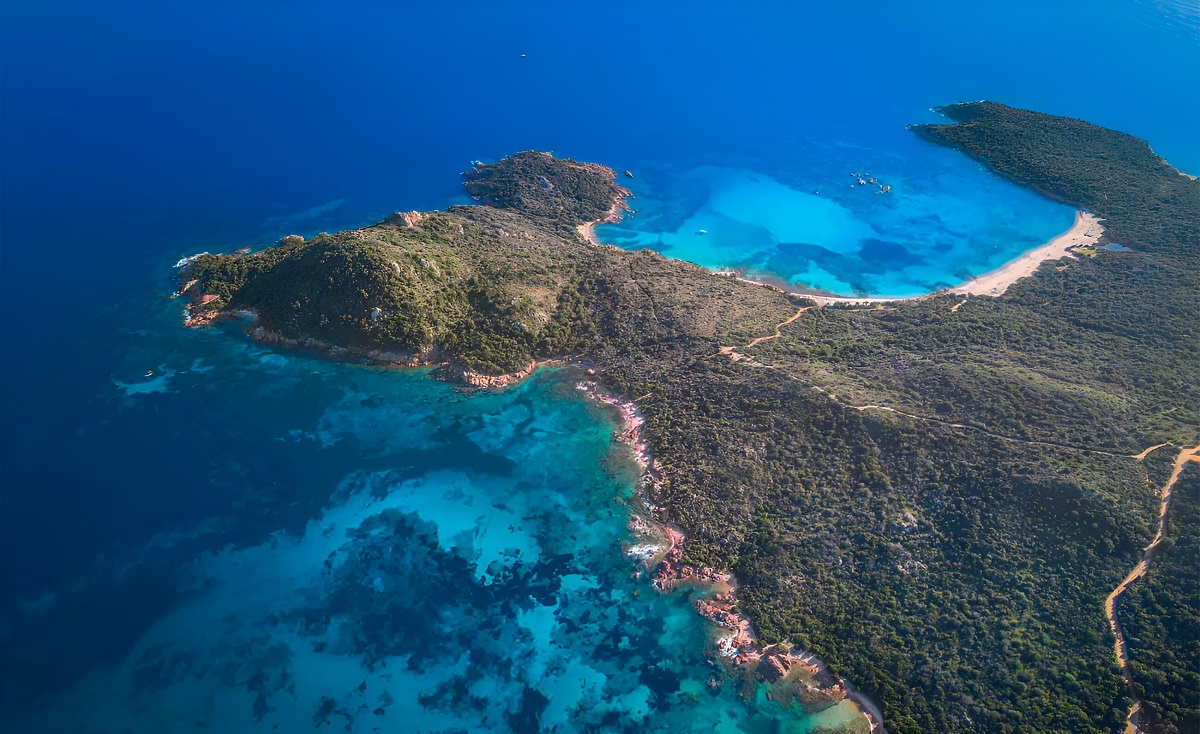
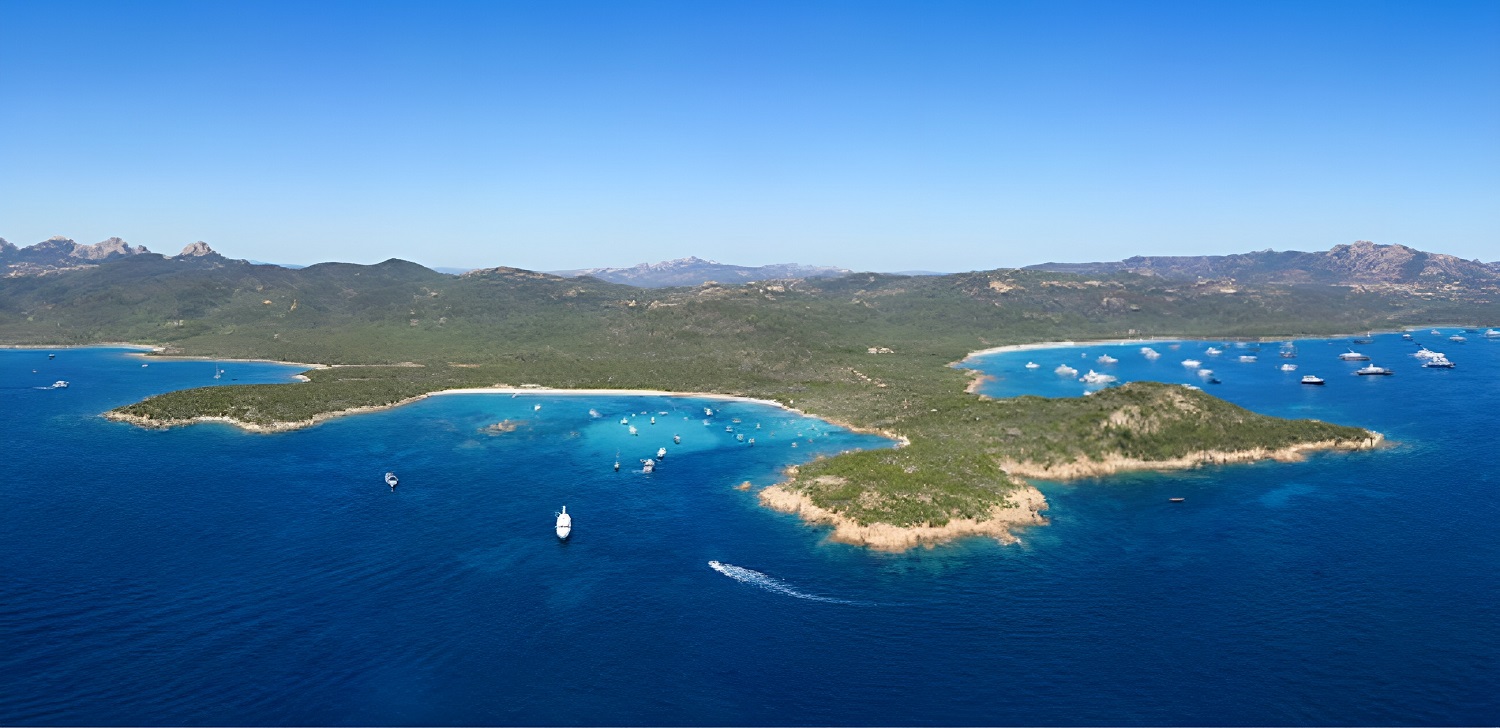
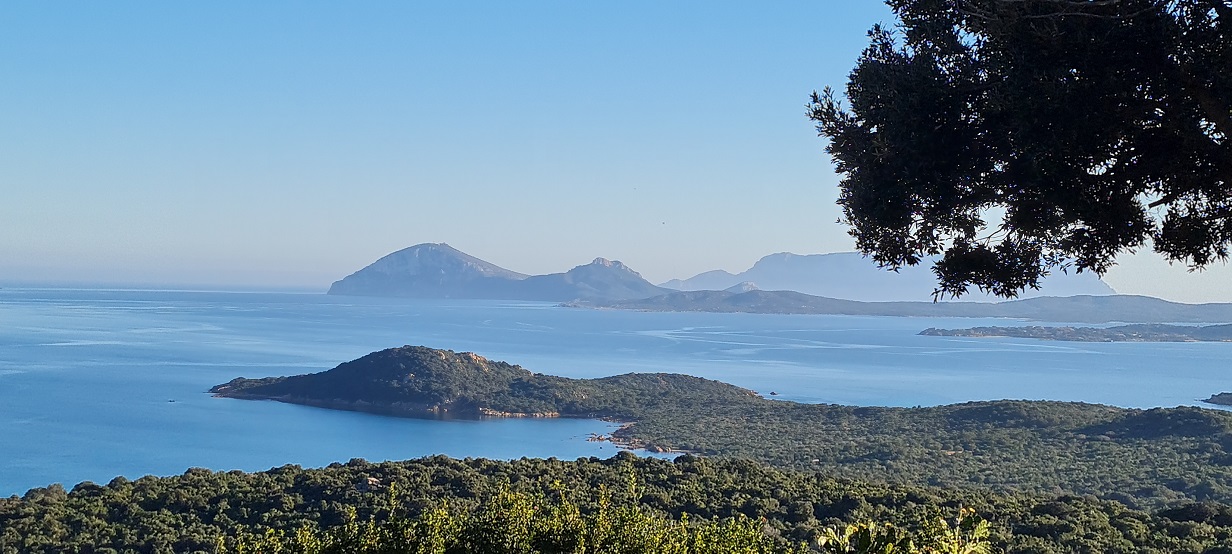
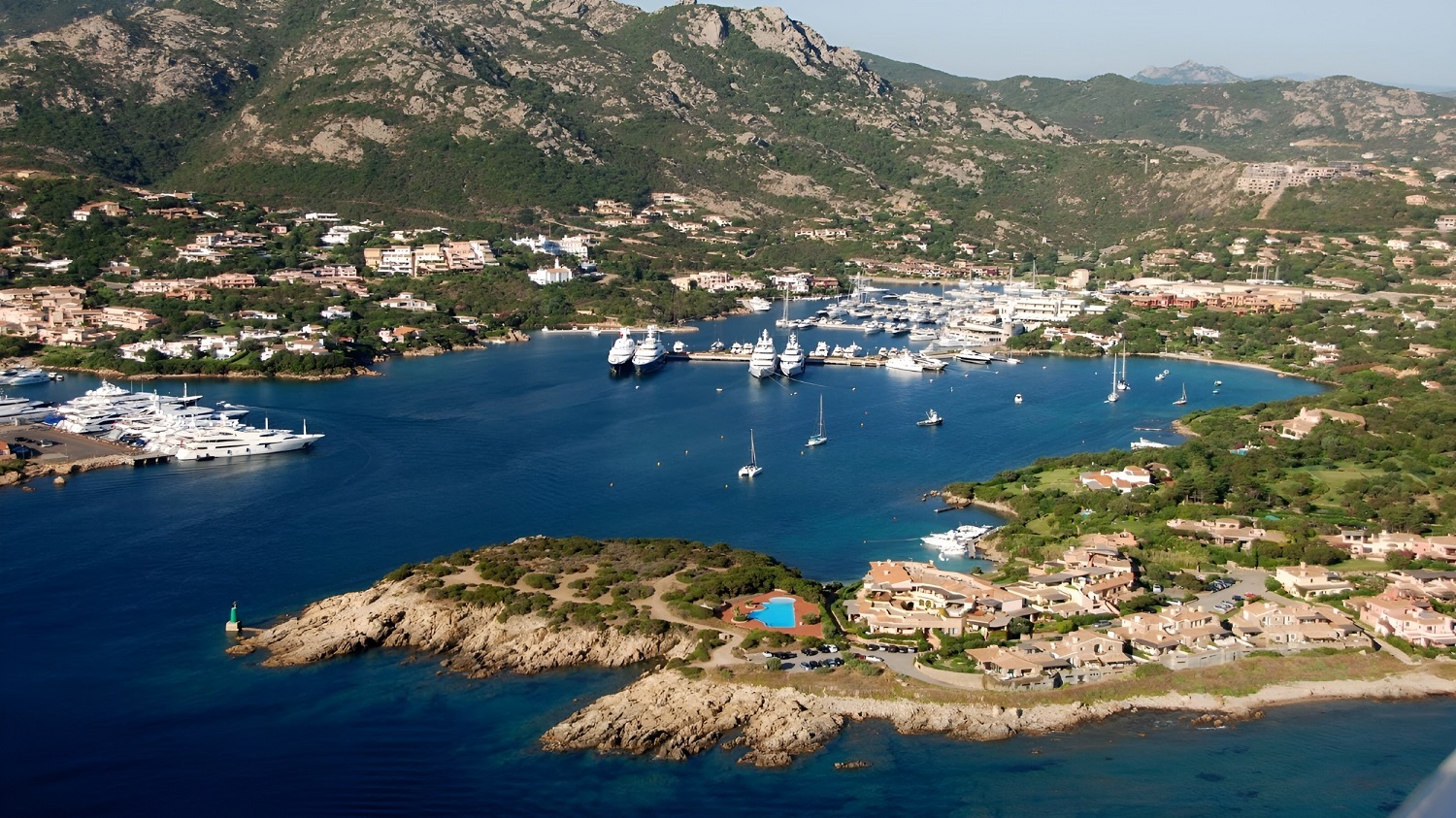
Villa Costs
Over the years, various building amnesties and the “Piano Casa” legislation allowed owners to enlarge their villas well beyond the limits imposed at the time by the Costa Smeralda Consortium. The traditionalist purist today will criticize those cumbersome additions, observable from the sea, but overall as seen in the photos, the coast still appears quite acceptable.
There are about 1,000 villas in the territory of the CS Consortium.
For those who may be interested, I have added a fact sheet on the real costs of running a medium-large villa in Costa Smeralda, amounting to €114,000 per year. On top of this, there is the cost for food, drinks, restaurants, discos, boat, sailor, etc. during the holiday. Annually, this owner will therefore spend a total of €150,000.
According to my rough estimate, those thousand villas on the Costa Smeralda produce approximately €200 million of turnover per year, every year. Money that enters the local economy directly, not taking into account the much higher income from pure tourism.
Therefore, the economic success of Sardinia lies in this type of high quality tourism: providing advanced services, together with warm and professional hospitality, in refined and well kept structures, but immersed in a pristine environment!
That is the secret for a successful Sardinian economy and in my view is the path to follow.
In conclusion, this phenomenon of the Costa Smeralda, although criticized (sometimes rightly so) and on occasion even snubbed by the institutions, has however contributed to the professional growth of local Sardinian personnel, artisans and businessmen.
The Costa Smeralda has brought and continues to bring widespread well-being in the Gallura area and even to all of Sardinia, and has contributed to place Sardinia on the world map. It continues to be a renowned and coveted tourist destination. We should all be proud of the prestigious tourist resort that the world envies and copies.
We should also be respectfully grateful for the successful launch of tourism in Sardinia to the principal founder of the Costa Smeralda, the brilliant and enlightened Prince Karim Aga Khan IV.
SOURCES OF THE ILLUSTRATIONS
The photos are all part of the Lorenzo Camillo, Nello Di Salvo, Ito Josuè collection.

